

What Is Creative Writing? (Ultimate Guide + 20 Examples)
Creative writing begins with a blank page and the courage to fill it with the stories only you can tell.
I face this intimidating blank page daily–and I have for the better part of 20+ years.
In this guide, you’ll learn all the ins and outs of creative writing with tons of examples.
What Is Creative Writing (Long Description)?
Creative Writing is the art of using words to express ideas and emotions in imaginative ways. It encompasses various forms including novels, poetry, and plays, focusing on narrative craft, character development, and the use of literary tropes.

Table of Contents
Let’s expand on that definition a bit.
Creative writing is an art form that transcends traditional literature boundaries.
It includes professional, journalistic, academic, and technical writing. This type of writing emphasizes narrative craft, character development, and literary tropes. It also explores poetry and poetics traditions.
In essence, creative writing lets you express ideas and emotions uniquely and imaginatively.
It’s about the freedom to invent worlds, characters, and stories. These creations evoke a spectrum of emotions in readers.
Creative writing covers fiction, poetry, and everything in between.
It allows writers to express inner thoughts and feelings. Often, it reflects human experiences through a fabricated lens.
Types of Creative Writing
There are many types of creative writing that we need to explain.
Some of the most common types:
- Short stories
- Screenplays
- Flash fiction
- Creative Nonfiction
Short Stories (The Brief Escape)
Short stories are like narrative treasures.
They are compact but impactful, telling a full story within a limited word count. These tales often focus on a single character or a crucial moment.
Short stories are known for their brevity.
They deliver emotion and insight in a concise yet powerful package. This format is ideal for exploring diverse genres, themes, and characters. It leaves a lasting impression on readers.
Example: Emma discovers an old photo of her smiling grandmother. It’s a rarity. Through flashbacks, Emma learns about her grandmother’s wartime love story. She comes to understand her grandmother’s resilience and the value of joy.
Novels (The Long Journey)
Novels are extensive explorations of character, plot, and setting.
They span thousands of words, giving writers the space to create entire worlds. Novels can weave complex stories across various themes and timelines.
The length of a novel allows for deep narrative and character development.
Readers get an immersive experience.
Example: Across the Divide tells of two siblings separated in childhood. They grow up in different cultures. Their reunion highlights the strength of family bonds, despite distance and differences.
Poetry (The Soul’s Language)
Poetry expresses ideas and emotions through rhythm, sound, and word beauty.
It distills emotions and thoughts into verses. Poetry often uses metaphors, similes, and figurative language to reach the reader’s heart and mind.
Poetry ranges from structured forms, like sonnets, to free verse.
The latter breaks away from traditional formats for more expressive thought.
Example: Whispers of Dawn is a poem collection capturing morning’s quiet moments. “First Light” personifies dawn as a painter. It brings colors of hope and renewal to the world.
Plays (The Dramatic Dialogue)
Plays are meant for performance. They bring characters and conflicts to life through dialogue and action.
This format uniquely explores human relationships and societal issues.
Playwrights face the challenge of conveying setting, emotion, and plot through dialogue and directions.
Example: Echoes of Tomorrow is set in a dystopian future. Memories can be bought and sold. It follows siblings on a quest to retrieve their stolen memories. They learn the cost of living in a world where the past has a price.
Screenplays (Cinema’s Blueprint)
Screenplays outline narratives for films and TV shows.
They require an understanding of visual storytelling, pacing, and dialogue. Screenplays must fit film production constraints.
Example: The Last Light is a screenplay for a sci-fi film. Humanity’s survivors on a dying Earth seek a new planet. The story focuses on spacecraft Argo’s crew as they face mission challenges and internal dynamics.
Memoirs (The Personal Journey)
Memoirs provide insight into an author’s life, focusing on personal experiences and emotional journeys.
They differ from autobiographies by concentrating on specific themes or events.
Memoirs invite readers into the author’s world.
They share lessons learned and hardships overcome.
Example: Under the Mango Tree is a memoir by Maria Gomez. It shares her childhood memories in rural Colombia. The mango tree in their yard symbolizes home, growth, and nostalgia. Maria reflects on her journey to a new life in America.
Flash Fiction (The Quick Twist)
Flash fiction tells stories in under 1,000 words.
It’s about crafting compelling narratives concisely. Each word in flash fiction must count, often leading to a twist.
This format captures life’s vivid moments, delivering quick, impactful insights.
Example: The Last Message features an astronaut’s final Earth message as her spacecraft drifts away. In 500 words, it explores isolation, hope, and the desire to connect against all odds.
Creative Nonfiction (The Factual Tale)
Creative nonfiction combines factual accuracy with creative storytelling.
This genre covers real events, people, and places with a twist. It uses descriptive language and narrative arcs to make true stories engaging.
Creative nonfiction includes biographies, essays, and travelogues.
Example: Echoes of Everest follows the author’s Mount Everest climb. It mixes factual details with personal reflections and the history of past climbers. The narrative captures the climb’s beauty and challenges, offering an immersive experience.
Fantasy (The World Beyond)
Fantasy transports readers to magical and mythical worlds.
It explores themes like good vs. evil and heroism in unreal settings. Fantasy requires careful world-building to create believable yet fantastic realms.
Example: The Crystal of Azmar tells of a young girl destined to save her world from darkness. She learns she’s the last sorceress in a forgotten lineage. Her journey involves mastering powers, forming alliances, and uncovering ancient kingdom myths.
Science Fiction (The Future Imagined)
Science fiction delves into futuristic and scientific themes.
It questions the impact of advancements on society and individuals.
Science fiction ranges from speculative to hard sci-fi, focusing on plausible futures.
Example: When the Stars Whisper is set in a future where humanity communicates with distant galaxies. It centers on a scientist who finds an alien message. This discovery prompts a deep look at humanity’s universe role and interstellar communication.
Watch this great video that explores the question, “What is creative writing?” and “How to get started?”:
What Are the 5 Cs of Creative Writing?
The 5 Cs of creative writing are fundamental pillars.
They guide writers to produce compelling and impactful work. These principles—Clarity, Coherence, Conciseness, Creativity, and Consistency—help craft stories that engage and entertain.
They also resonate deeply with readers. Let’s explore each of these critical components.
Clarity makes your writing understandable and accessible.
It involves choosing the right words and constructing clear sentences. Your narrative should be easy to follow.
In creative writing, clarity means conveying complex ideas in a digestible and enjoyable way.
Coherence ensures your writing flows logically.
It’s crucial for maintaining the reader’s interest. Characters should develop believably, and plots should progress logically. This makes the narrative feel cohesive.
Conciseness
Conciseness is about expressing ideas succinctly.
It’s being economical with words and avoiding redundancy. This principle helps maintain pace and tension, engaging readers throughout the story.
Creativity is the heart of creative writing.
It allows writers to invent new worlds and create memorable characters. Creativity involves originality and imagination. It’s seeing the world in unique ways and sharing that vision.
Consistency
Consistency maintains a uniform tone, style, and voice.
It means being faithful to the world you’ve created. Characters should act true to their development. This builds trust with readers, making your story immersive and believable.
Is Creative Writing Easy?
Creative writing is both rewarding and challenging.
Crafting stories from your imagination involves more than just words on a page. It requires discipline and a deep understanding of language and narrative structure.
Exploring complex characters and themes is also key.
Refining and revising your work is crucial for developing your voice.
The ease of creative writing varies. Some find the freedom of expression liberating.
Others struggle with writer’s block or plot development challenges. However, practice and feedback make creative writing more fulfilling.
What Does a Creative Writer Do?
A creative writer weaves narratives that entertain, enlighten, and inspire.
Writers explore both the world they create and the emotions they wish to evoke. Their tasks are diverse, involving more than just writing.
Creative writers develop ideas, research, and plan their stories.
They create characters and outline plots with attention to detail. Drafting and revising their work is a significant part of their process. They strive for the 5 Cs of compelling writing.
Writers engage with the literary community, seeking feedback and participating in workshops.
They may navigate the publishing world with agents and editors.
Creative writers are storytellers, craftsmen, and artists. They bring narratives to life, enriching our lives and expanding our imaginations.
How to Get Started With Creative Writing?
Embarking on a creative writing journey can feel like standing at the edge of a vast and mysterious forest.
The path is not always clear, but the adventure is calling.
Here’s how to take your first steps into the world of creative writing:
- Find a time of day when your mind is most alert and creative.
- Create a comfortable writing space free from distractions.
- Use prompts to spark your imagination. They can be as simple as a word, a phrase, or an image.
- Try writing for 15-20 minutes on a prompt without editing yourself. Let the ideas flow freely.
- Reading is fuel for your writing. Explore various genres and styles.
- Pay attention to how your favorite authors construct their sentences, develop characters, and build their worlds.
- Don’t pressure yourself to write a novel right away. Begin with short stories or poems.
- Small projects can help you hone your skills and boost your confidence.
- Look for writing groups in your area or online. These communities offer support, feedback, and motivation.
- Participating in workshops or classes can also provide valuable insights into your writing.
- Understand that your first draft is just the beginning. Revising your work is where the real magic happens.
- Be open to feedback and willing to rework your pieces.
- Carry a notebook or digital recorder to jot down ideas, observations, and snippets of conversations.
- These notes can be gold mines for future writing projects.
Final Thoughts: What Is Creative Writing?
Creative writing is an invitation to explore the unknown, to give voice to the silenced, and to celebrate the human spirit in all its forms.
Check out these creative writing tools (that I highly recommend):
| Recommended Tools | Learn More |
|---|---|
| Jasper AI | |
| Show Not Tell GPT | |
| Dragon Professional Speech Dictation and Voice Recognition | |
| Surface Laptop | |
| Bluehost | |
| Sqribble (eBook maker) |
Read This Next:
- What Is a Prompt in Writing? (Ultimate Guide + 200 Examples)
- What Is A Personal Account In Writing? (47 Examples)
- How To Write A Fantasy Short Story (Ultimate Guide + Examples)
- How To Write A Fantasy Romance Novel [21 Tips + Examples)
10 Content Writing Tips To Help You Get the Most Impact Out of Every Word

Pretend you’re holding an orange. That humble fruit is full of delicious juice — and you have two choices for extracting it: You can either squish orange halves between your palms and hope for the best, or pass the fruit through a proper citrus juicer.
You’ll get the best results using the well-oiled machine, right?
Your content writing process isn’t so different. Your brain is full of great ideas, but letting them randomly leak out onto the page won’t give you stellar results. And it might be pretty tough to separate the messy seeds and pulp from the really good stuff.
Instead, you need a strategic content creation process that works to squeeze out every ounce of creative juice while filtering out any unnecessary pieces and keeping your efforts aligned with overarching goals.
We’re sharing a round-up of content writing tips to help you fine-tune your creative process. If you’re a content creator , consider this your recipe for freshly squeezed, pulp-free writing!
Table of Contents
- Always Keep Your Audience in Mind
- Organize Your Ideas Into an Outline
- Open With an Attention-Grabbing Intro
- Research, Research, Research
- Write in a Voice That’s Unique to Your Brand
- Make Your Content Skimmable
- Adapt Your Message Based on Content Type
- Get an Editor’s Eye on Your Writing
- Optimize Your Content for Search
- Close With a Compelling Call to Action
1. Always Keep Your Audience in Mind
If you want your content writing to resonate with your target audience, you need to put the needs, interests and desires of your audience first.
Creating audience profiles or buyer personas will help you hone in on who exactly you’re writing content for. Use existing customer data and analytics to understand who your audience is.
Once you have an understanding of your audience, take some time before you write to dig into their most pressing questions or pain points.
Instead of approaching a topic from your own perspective, look at it through your audience’s eyes. What do they want to know? What do they need help with? This way of thinking can guide you to create a resource that they’ll get a lot of value from.
2. Organize Your Ideas Into an Outline
Think outlining will slow your roll? Think again.
The best digital content is well-organized — and if Marie Kondo was a content marketer, she’d recommend outlining as the best way to tidy up disjointed ideas.
Here’s a quick five-step guide to outlining a content writing project:
- Brainstorm: Jot down all of your ideas, research findings and subtopics related to your main topic.
- Categorize: Group these ideas and notes together by relevance.
- Name: Give each group of ideas a working header.
- Organize: Arrange these groups in a logical order.
- Edit: Set aside any outliers or unrelated insights for a future project.
By the end, your outline will have a clear sequence of ideas, which will ultimately be bookended by a solid introduction and conclusion.
Those working headers will become the subheads in your blog post or the page titles in your white paper. A piece of long-form content — like a pillar page , eBook or this blog post! — will typically include a table of contents with the subheads to show readers what’s up ahead.
3. Open With an Attention-Grabbing Intro
As soon as you started reading this blog, you might have thought, “Pretend you’re holding an orange?” What on earth does that have to do with content writing?
Well, if you love puns as much as I do, you might have sensed a “creative juices” metaphor coming along. (Low-hanging fruit, I know… )
But, if you’ve made it this far, that odd opening line hooked your attention enough for you to keep reading.
An eye-catching intro that encourages web visitors to stick around can increase time-on-page social engagement. This, in turn, helps boost your content’s ranking and performance. Plus, viewers can get more value out of your content marketing assets the more time they spend consuming them — helping build your reputation as a trusted industry authority.
Whether you’re working on social media captions, web content writing or a long-form downloadable resource, try:
- Creating a snappy headline that gives a preview of what’s to come.
- Opening with an anecdote or metaphor that sets the stage for your topic.
- Establishing a sense of urgency or giving the reader FOMO to show that they need to hear your message.
- Starting with a rhetorical question that makes the reader reflect and read on to find the answer.
- Presenting a compelling data point to catch the reader’s attention and hint at future insights they won’t want to miss.
Whatever you do, avoid long, meandering sentences. These are usually packed with too much information for your audience to digest. Also, steer clear of platitudes and generalizations that make your content seem like a snooze-fest.
The more unique and specific your intro, the better. Your objective is to give your audience a reason to care and keep reading.
Subscribe to The Content Marketer
Get weekly insights, advice and opinions about all things digital marketing.
Thank you for subscribing to The Content Marketer!
4. Research, Research, Research
We want to let you in on a little secret here: You don’t need to be a capital-E Expert to write great content about a topic. In fact, you can come up with a really strong and informative piece of content without knowing the first thing about the subject!
The key is to conduct sufficient research first. Before you start writing, look at:
- The basics: Collect general information on your topic from authoritative sources, to educate yourself and spark some ideas.
- Keywords: Use related keywords with the appropriate search volume, difficulty level and search intent that you can target with your content writing.
- Data points: Gather facts and statistics from authoritative sources to back up the points you plan to make in your writing.
- The competition: Look at top-ranking pieces of content for those keywords, to see what competitors are saying. This should give you an idea of what your audience is looking for, and how you can differentiate with a more comprehensive piece of content.
5. Write in a Voice That’s Unique to Your Brand
To make sure your content stands out from the crowd but fits in with the rest of your marketing, embrace your brand voice when you write.
One business might opt for a formal, polished voice because it speaks to its audience about high-stakes subjects. Another organization might write in a conversational tone because it’s on a mission to reach and connect with individuals. Wit and humor may be hallmarks of one brand, while an educational tone distinguishes another.
Wherever yours fits in, get to know your brand voice and amplify it in every new piece of content you write.
6. Make Your Content Skimmable
Your readers are pressed for time — and savvy enough to know they don’t need to read a piece of content word-for-word in order to get something out of it.
By making your writing easy to skim, you can deliver value even to readers who spend just a few seconds looking over the content. If something catches an audience member’s eye, they can take a closer look at that section and read it in more detail.
Here are some content writing tips for creating skimmable, successful content marketing assets people will actually enjoy reading:
- Outlining: As we noted earlier, building your content from an outline ensures a logical and skimmable flow of ideas.
- Short paragraphs: Split up long blocks of text with line breaks.
- Subheads: Begin each new idea or topic with a clear subheading.
- Lists: Organize ideas into lists, using bullets or a listicle format. (This blog post does both!)
- Bolded text: Put the most significant words in bold at the start of a bulleted list item or mid-sentence.
- Design elements: Draw attention to key points like important facts and quotes by incorporating them into graphic design elements.
Use this as a rule of thumb: If someone only reads the headers and bolded text, they should understand the main thrust of your message and still come away with some useful takeaways.
7. Adapt Your Message Based on Content Type
A strong content marketing strategy will include a variety of content types that each serve different purposes. What works for one type of asset won’t have as strong an impact for another.
Here’s an example of how you might change your angle based on where different assets fit into your overarching strategy:
- Blog posts: Light, helpful and highly focused resources for top-of-funnel traffic.
- eBooks: Detailed overviews of key topics for middle-of-funnel web visitors.
- White papers: Informative and data-rich assets for bottom-of-funnel readers.
- Emails : Conversational and compelling messages for bottom-of-funnel audiences.
- Social media posts: Engaging, bite-sized insights for prospective and current customers.
Although you’ll be adapting your approach, remember to maintain a consistent brand voice across all of your writing. As audience members move through the sales funnel and encounter varying types of content, everything will feel connected and on-brand, even though the messages are tailored differently.
8. Get an Editor’s Eye on Your Writing
After you’re through writing the first draft of a piece of content, you do not want the next person to read it to be someone in your target audience. Instead, you need someone else to look over the copy before it goes out into the world.
Team up with an editor or fellow content creator who can give your writing a once-over. They can catch any typos, run-on sentences or factual errors.
In addition, your editor can provide initial feedback on the flow of ideas and how you’re presenting your key points. If they’re left with some confusion or lingering questions after reading your content, chances are, your target audience will be too. Make an effort to clear up those issues when you move on to the revisions.
They say two heads are better than one — and there’s no doubt about it in editing. Consider this step a collaborative process that makes your content writing stronger.
9. Optimize Your Content for Search
There’s no point in putting so much time and effort into your writing if your ideal reader will never be able to find it. If you’re producing landing page copy, blog posts or any other type of content that could turn up in search results, ensure your writing is search engine friendly.
Writing SEO content starts with researching and selecting the right keywords. Factors to evaluate include:
- Relevance: The keyword should be related to your brand and the topics you want to write about.
- Search intent: If web users have informational intent, they’re looking to gather information — and a blog post could be the right fit. But if they have commercial intent, they’re looking for products, solutions or services — so they’re more likely to visit a landing page.
- Keyword difficulty and search volume: These indicate whether certain keywords are within reach. Avoid choosing highly competitive keywords you may never rank for.
When it’s time to write, your SEO content writing should be comprehensive, offering an in-depth overview of the subject. Aim to provide the best possible result for your chosen keyword (i.e., the user’s search query). Address a range of questions and sub-topics that align with the searcher’s intent, but keep the content as focused and specific as possible.
10. Close With a Compelling Call to Action
Your reader reaches the end of your written content. Okay, what next?
Do you want them to wander over to a competitor’s site to find some other perspectives or solutions? Probably not.
If a piece of content marketing doesn’t give your audience an idea of where to go next, it’s not doing its job. While you might mention your products or services throughout the resource, the conclusion is where you really want to insert a final call-to-action (CTA).
Depending on the type of content and your goals for it, your CTA can prompt any of these actions:
- Learn more: Tell the reader where they can go for more information on the subject.
- Contact: Point the visitor to your contact page so they can reach out directly to you.
- Like, follow, share: Invite your audience to engage with the resource or social media post.
- Get a free XYZ: Suggest that the reader take advantage of a complimentary resource like a free custom quote, downloadable eBook or webinar invite.
- Consider a related product or service: Wrap up by describing the solution you offer that could meet your reader’s needs.
If we were closing out with a CTA, we might point out that we offer an array of content writing services to B2B and B2C businesses. The content writing tip you’ll probably get the highest ROI from is to partner with a team of content creation experts who can do the heavy lifting for you.
But if you’re on a roll and ready to keep leveling up your own writing? Subscribe to our newsletter for a steady stream of impactful insights and weekly inspo, from our content marketing fam to yours.
Jessica Barker
Share this article
Get our weekly newsletter

Jessica Barker is a Chicago-based content writer and Director of Editorial at Brafton. When she's not mixing work and wordplay, you'll find her curled up with a cat and a cuppa, dreaming up her next creative project.
Recommended Reading

7 Out-of-the-Box Ideas for Marketing
Try out these creative marketing ideas to make your customer outreach campaigns stand out.

The 10 Best SaaS Websites in 2024
Discover the best SaaS websites of 2023, and take your business to the next level with the valuable insights and recommendations in this post.
The Content Marketer
Get the latest content marketing updates delivered directly to your inbox with our weekly newsletter.


Elements of Creative Writing
This free and open access textbook introduces new writers to some basic elements of the craft of creative writing. The authors—Rachel Morgan, Jeremy Schraffenberger, and Grant Tracey—are editors of the North American Review , the oldest and one of the most well-regarded literary magazines in the United States. We’ve selected nearly all of our readings and examples from writing that has appeared in our pages over the years. Because we had a hand in publishing these pieces originally, our perspective as editors permeates this book. As such, we hope that even seasoned writers might gain insight into the aesthetics of our magazine as we analyze and discuss some reasons we think this work is so remarkable—and therefore teachable.
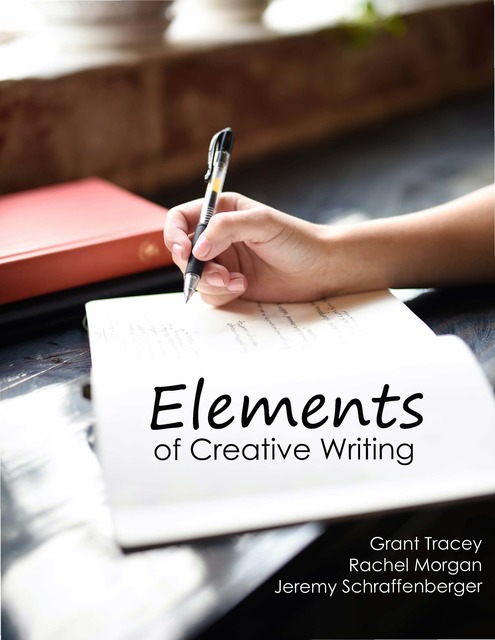
Cover image credit: Hannah Olinger, https://unsplash.com/photos/8eSrC43qdro Used under Unsplash license: https://unsplash.com/license Background image credit: Copyright University of Northern Iowa. All rights reserved.

Introduction
- 0 This text has 0 annotations
- 0 This text has 0 highlights
Chapter One One Great Way to Write a Short Story
- 17 This text has 17 annotations
- 136 This text has 136 highlights
Chapter Two Plotting
- 8 This text has 8 annotations
- 119 This text has 119 highlights
Chapter Three Counterpointed Plotting
- 14 This text has 14 annotations
- 111 This text has 111 highlights
Chapter Four Show and Tell
- 19 This text has 19 annotations
- 213 This text has 213 highlights
Chapter Five Characterization and Method Writing
- 5 This text has 5 annotations
- 185 This text has 185 highlights
Chapter Six Character and Dialogue
- 11 This text has 11 annotations
- 176 This text has 176 highlights
Chapter Seven Setting, Stillness, and Voice
- 3 This text has 3 annotations
- 85 This text has 85 highlights
Chapter Eight Point of View
- 16 This text has 16 annotations
- 159 This text has 159 highlights
Chapter Nine Learning the Unwritten Rules
- 13 This text has 13 annotations
- 120 This text has 120 highlights
Chapter One A Poetry State of Mind
- 97 This text has 97 highlights
Chapter Two The Architecture of a Poem
- 12 This text has 12 annotations
- 117 This text has 117 highlights
Chapter Three Sound
- 107 This text has 107 highlights
Chapter Four Inspiration and Risk
Chapter five endings and beginnings.
- 67 This text has 67 highlights
Chapter Six Figurative Language
- 7 This text has 7 annotations
- 114 This text has 114 highlights
Chapter Seven Forms, Forms, Forms
- 52 This text has 52 highlights
Chapter Eight Go to the Image
- 4 This text has 4 annotations
- 40 This text has 40 highlights
Chapter Nine The Difficult Simplicity of Short Poems and Killing Darlings
- 68 This text has 68 highlights
Creative Nonfiction
Chapter one creative nonfiction and the essay.
- 1 This text has 1 annotation
Chapter Two Truth and Memory, Truth in Memory
- 70 This text has 70 highlights
Chapter Three Research and History
- 2 This text has 2 annotations
- 49 This text has 49 highlights
Chapter Four Writing Environments
- 42 This text has 42 highlights
Chapter Five Notes on Style
- 81 This text has 81 highlights
- 51 This text has 51 highlights
Chapter Seven Imagery and the Senses
Chapter eight writing the body.
- 34 This text has 34 highlights
Chapter Nine Forms
- 54 This text has 54 highlights
Back Matter
Contributors, north american review staff, resource collections, single resources, creative nonfiction: alison alstrom, "good morning, heartache", creative nonfiction: lucienne bloch, "365 new words a year: october", creative nonfiction: traci brimhall, "philematophilia", creative nonfiction: taylor brorby, "confluence", creative nonfiction: lee ann roripaugh, "notes on beauty", creative nonfiction: paul crenshaw, "fire", fiction: sarah cypher, "ghost town", fiction: marc dickinson, "three days discovered", fiction: frannie dove, "a twister on stage 14", creative nonfiction: samantha edmonds, "an incomplete list of sad beautiful things...".
- isbn 978-0-915996-17-9
- publisher Rod Library, University of Northern Iowa with support from North American Review Press. Funding for this project was provided through the University of Northern Iowa Textbook Equity Mini-Grant Program.
- publisher place Cedar Falls, IA
- rights Original textbook content (Introduction, Fiction, Poetry, & Creative Non-Fiction sections) is CC BY-NC 4.0. Readings and examples in Resources section are used with author permission; all rights reserved.
- rights holder Jeremy Schraffenberger, Rachel Morgan, & Grant Tracey except where noted.
We use cookies to analyze our traffic. Please decide if you are willing to accept cookies from our website. You can change this setting anytime in Privacy Settings .
- April 29, 2024
What Is Creative Writing? Unleash Your Imagination
Julia mccoy.
Creator and Co-founder
You’ve always had a wild imagination, and now you’re ready to let it run free on the page. But what is creative writing exactly?
It’s more than just putting pen to paper or fingers to keyboard. Think of creative writing as your magic power – it transforms abstract ideas into vivid narratives that connect heart-to-heart with people.
Crafting tales, spinning poems, or unfolding novels – they’re all ways for writers like us to bare our souls and offer up our unique takes on life’s canvas. This approach lets us dig into the depths of being human, stirring up emotions and leaving an unforgettable impression on people.
Table Of Contents:
What is creative writing, forms of creative writing, techniques used in creative writing, how to start creative writing, developing your creative writing skills.
Creative writing is an art form that goes beyond traditional blog writing , allowing individuals to express their thoughts, emotions, and ideas through the power of words.
It transcends conventional writing, encouraging individuals to explore language, structure, and narrative.
Creative writing is writing meant to evoke emotion in a reader by communicating a theme.
In storytelling (including literature, movies, graphic novels, and even video games), the theme is the central meaning the work communicates.
Creative writing typically uses literary devices like metaphors and foreshadowing to build a narrative and express the theme, but they are not a requirement.
Neither is dialogue, though you’ll find it used in most works of fiction.
It doesn’t just focus on more traditional, technical forms of writing, like journalistic and academic styles, but instead displays imagination and invention.
Creative writing comes in many forms, encompassing a range of genres and styles.
There are lots of different types of creative writing, which can be categorized as fiction or non-fiction.
Creative writing offers writers a platform to express themselves and focus on areas like character development, narrative, and storylines.
Some of the most popular forms of fiction writing include short stories, novels, novellas, etc.
Creative writing doesn’t have to be fictional, either. Dramatized presentations of true stories, memoirs, and observational humor pieces are all types of creative writing.
Creative nonfiction encompasses a wide range of forms, including personal essays, biographies, and more.
Whether it’s a heartfelt poem, a captivating short story, or a thought-provoking novel, creative writing allows us to communicate our unique perspectives and experiences with the world.
Poetry and spoken word are powerful forms of creative expression that play with language, rhythm, and imagery.
Playwriting
Playwriting is a form of creative writing focused on crafting scripts intended for performance on stage. It involves creating dialogue, characters, settings, and plots that unfold through spoken words and actions.
Unlike other forms of writing, playwriting requires consideration for the visual and auditory aspects of storytelling, as it is meant to be performed live in front of an audience.
Playwriting offers a unique opportunity for writers to engage with audiences in a dynamic and immediate way. It requires a blend of creativity, craft, and understanding of theatrical conventions to create compelling stories that resonate with viewers.
Scriptwriting
Scriptwriting, often referred to simply as “screenwriting,” is the art and craft of writing scripts for films, television shows, web series, and other visual media.
While similar to playwriting in some aspects, such as crafting dialogue and developing characters, scriptwriting has its own distinct characteristics and requirements tailored to the screen.
Scriptwriting is a specialized form of creative writing that combines storytelling skills with an understanding of the unique requirements of visual media. It offers writers the opportunity to craft compelling narratives that entertain, inspire, and provoke thought on both the big and small screen.
Image Source: Your Dictionary
Creative writers employ a variety of techniques to make their work more engaging, evocative, and memorable.
These writing techniques help to develop characters, create vivid settings, and convey emotions and ideas effectively.
Descriptive Language
Descriptive language refers to the use of vivid and detailed language to create rich and sensory experiences for the reader. It involves painting a picture with words, engaging the reader’s senses, emotions, and imagination to bring the narrative to life.
Descriptive language is a powerful tool in creative writing, enabling writers to create immersive and engaging narratives that resonate with readers long after they’ve finished reading.
Figurative Language
Figurative language involves the use of words and phrases in a way that goes beyond their literal meaning. It adds layers of meaning and depth to creative writing, allowing writers to convey complex emotions, create vivid imagery, and engage readers on a deeper level.
Figurative language is an essential tool for crafting compelling stories, poems, and other forms of literature.
Point of View
Choosing the right point of view is crucial in creative writing, as it determines the perspective from which the story is told.
Whether it’s first-person, second-person, or third-person, the point of view can greatly impact the reader’s connection to the characters and their understanding of the narrative.
Dialogue is a key element in many forms of creative writing, particularly in fiction and scriptwriting.
Well-crafted dialogue can reveal character traits, advance the plot, and create a sense of authenticity and realism in the story.
Show vs. Tell
One of the most important techniques in creative writing is “showing” rather than “telling.”
Instead of simply stating facts or describing events, skilled writers use vivid descriptions, actions, and dialogue to allow readers to experience the story for themselves.
So you want to start a career in creative writing? That’s awesome. But where do you even begin?
I remember when I first started, I was overwhelmed with all the different techniques and styles. It felt like I was staring at a blank page, waiting for the words to magically appear.
But here’s the thing: starting is the hardest part. Once you get those creative juices flowing, the rest will follow.
Freewriting
One of my favorite ways to start writing is through freewriting. It’s a technique where you set a timer for a specific amount of time (I usually do 10-15 minutes) and just write whatever comes to mind, without stopping to edit or second-guess yourself.
The goal is to keep your pen moving (or your fingers typing) and let your thoughts flow freely. You might be surprised at what comes out.
Another great way to start creative writing is through journaling. I’ve been keeping a journal for years, and it’s been a game-changer for my writing. It allows me to explore my thoughts and feelings and often leads to new ideas for stories or characters.
Plus, it’s a great way to practice writing regularly and build that writing muscle.
“Journal writing is a voyage to the interior.” – Christina Baldwin
Writing Exercises
If you’re feeling stuck or need a little extra inspiration, writing exercises can be a great way to get those creative juices flowing. There are tons of writing prompts out there that can help you start writing, whether it’s a character sketch, a scene description, or a dialogue exchange. The key is to have fun with it and not put too much pressure on yourself.
Stuck staring at a blank paper or screen? Check out these tips on how to overcome writer’s block .
Read Widely
One of the best ways to improve your creative writing is to read widely. Read books in different genres, from different authors, and different periods.
Pay attention to how they craft their stories, develop their characters, and use language to create mood and tone. The more you read, the more tools you’ll have in your writing toolbox.
Attend Workshops
Finally, attending writing workshops or classes can be a great way to start creative writing. Not only will you learn new techniques and get feedback on your work, but you’ll also meet other writers who are on the same journey as you.
Writing can be a solitary pursuit, but having a community of fellow writers can make all the difference.
Okay, so you’ve started writing – congrats. But now what? How do you take your writing to the next level and really develop your skills?
As someone who’s been writing for years, I’ve learned a thing or two about what it takes to improve your craft.
Practice Regularly
First and foremost, the key to developing your creative writing skills is to practice regularly.
I know, I know – easier said than done.
But here’s the thing: writing is a muscle, and like any muscle, it needs to be exercised regularly to grow stronger.
Set aside time each day (even if it’s just 15-30 minutes) to write, and stick to it. The more you write, the better you’ll get.
The best way to become a better writer? Write. A lot. And then write some more. — J.K. Rowling
Seek Feedback
Another important aspect of developing your creative writing skills is seeking feedback. Share your work with other writers, whether it’s through a writing group, workshop, or online forum.
Getting constructive criticism can be tough, but it’s essential for growth. Listen to what others have to say, and use their feedback to improve your writing.
Revise and Edit
Once you’ve gotten feedback on your work, it’s time to revise and edit. This is where the real magic happens.
Go through your written work with a fine-toothed comb, looking for ways to tighten your prose, develop your characters, and strengthen your plot.
Don’t be afraid to cut or change things that aren’t working – remember, writing is a process, and it’s okay to make mistakes along the way.
Experiment with Different Styles
As you develop your creative writing skills, don’t be afraid to experiment with different styles and genres.
Try writing a poem, a screenplay, or a personal essay. Play with different points of view, tenses, and structures.
The more you experiment, the more you’ll discover what works for you and what doesn’t.
Find Your Voice
Finally, the most important thing you can do to develop your creative writing skills is to find your voice. This means discovering what makes your writing unique and what sets you apart from other writers. It might take time and a lot of experimentation, but once you find your voice, your writing will truly shine.
So there you have it – my top tips for developing your creative writing skills. Remember, writing is a journey, not a destination. Keep practicing, keep learning, and most importantly, keep writing. With time and dedication, you’ll be amazed at how far you can go.
Creative writing is a powerful tool for self-expression and connecting with others. Learning every trick in the book about this art form allows you to broadcast your distinct flair and viewpoint far and wide.
Remember, creative writing is a journey of exploration and discovery. Don’t be afraid to experiment, take risks, and let your imagination run wild. With practice and dedication, you can unleash your full potential as a writer and create stories that resonate with readers on a profound level.
So grab your pen or fire up your keyboard. There’s a story inside you, just waiting to jump out.
It’s time to build your blog empire.
Want to be a real Content Hacker along with us, but not sure where to start?
We’ve got custom-created resources just for you, friend.
Get inside the Content Hacker Community ❤️ – at just $20/month, it’s a no-brainer. On-call, expert support, live calls, and so much more.
Want to go deeper? Check out our AIO Blogger course – an immersive one-week course teaching you everything you need to know to build a money-making online blog.
Can’t WAIT to welcome you inside.
with gratitude,
Become a Content Hacker
Collaborate with other growth-minded, savvy Content Hackers – plus a host of experts. The price of two coffees/month gets you in.
- Cancel Anytime
- For the Price of 2 Coffees a Month
- 100% Risk Free
Where marketers and founders get the content strategy, skills, and systems to grow exponentially online.
Join thousands of Content Hackers learning smarter content and business strategies.
© 2024 Contenthacker.com
In accordance with international sanctions, the Semrush platform is no longer accessible to businesses registered or based in Russia. We’re sorry for the inconvenience and if you believe there is a mistake, please send us an email to [email protected] so our team can review.

What is Creative Writing? A Key Piece of the Writer’s Toolbox
Not all writing is the same and there’s a type of writing that has the ability to transport, teach, and inspire others like no other.
Creative writing stands out due to its unique approach and focus on imagination. Here’s how to get started and grow as you explore the broad and beautiful world of creative writing!
What is Creative Writing?
Creative writing is a form of writing that extends beyond the bounds of regular professional, journalistic, academic, or technical forms of literature. It is characterized by its emphasis on narrative craft, character development, and the use of literary tropes or poetic techniques to express ideas in an original and imaginative way.
Creative writing can take on various forms such as:
- short stories
- screenplays
It’s a way for writers to express their thoughts, feelings, and ideas in a creative, often symbolic, way . It’s about using the power of words to transport readers into a world created by the writer.
5 Key Characteristics of Creative Writing
Creative writing is marked by several defining characteristics, each working to create a distinct form of expression:
1. Imagination and Creativity: Creative writing is all about harnessing your creativity and imagination to create an engaging and compelling piece of work. It allows writers to explore different scenarios, characters, and worlds that may not exist in reality.
2. Emotional Engagement: Creative writing often evokes strong emotions in the reader. It aims to make the reader feel something — whether it’s happiness, sorrow, excitement, or fear.
3. Originality: Creative writing values originality. It’s about presenting familiar things in new ways or exploring ideas that are less conventional.
4. Use of Literary Devices: Creative writing frequently employs literary devices such as metaphors, similes, personification, and others to enrich the text and convey meanings in a more subtle, layered manner.
5. Focus on Aesthetics: The beauty of language and the way words flow together is important in creative writing. The aim is to create a piece that’s not just interesting to read, but also beautiful to hear when read aloud.
Remember, creative writing is not just about producing a work of art. It’s also a means of self-expression and a way to share your perspective with the world. Whether you’re considering it as a hobby or contemplating a career in it, understanding the nature and characteristics of creative writing can help you hone your skills and create more engaging pieces .
For more insights into creative writing, check out our articles on creative writing jobs and what you can do with a creative writing degree and is a degree in creative writing worth it .
Styles of Creative Writing
To fully understand creative writing , you must be aware of the various styles involved. Creative writing explores a multitude of genres, each with its own unique characteristics and techniques.
Poetry is a form of creative writing that uses expressive language to evoke emotions and ideas. Poets often employ rhythm, rhyme, and other poetic devices to create pieces that are deeply personal and impactful. Poems can vary greatly in length, style, and subject matter, making this a versatile and dynamic form of creative writing.
Short Stories
Short stories are another common style of creative writing. These are brief narratives that typically revolve around a single event or idea. Despite their length, short stories can provide a powerful punch, using precise language and tight narrative structures to convey a complete story in a limited space.
Novels represent a longer form of narrative creative writing. They usually involve complex plots, multiple characters, and various themes. Writing a novel requires a significant investment of time and effort; however, the result can be a rich and immersive reading experience.
Screenplays
Screenplays are written works intended for the screen, be it television, film, or online platforms. They require a specific format, incorporating dialogue and visual descriptions to guide the production process. Screenwriters must also consider the practical aspects of filmmaking, making this an intricate and specialized form of creative writing.
If you’re interested in this style, understanding creative writing jobs and what you can do with a creative writing degree can provide useful insights.
Writing for the theater is another specialized form of creative writing. Plays, like screenplays, combine dialogue and action, but they also require an understanding of the unique dynamics of the theatrical stage. Playwrights must think about the live audience and the physical space of the theater when crafting their works.
Each of these styles offers unique opportunities for creativity and expression. Whether you’re drawn to the concise power of poetry, the detailed storytelling of novels, or the visual language of screenplays and plays, there’s a form of creative writing that will suit your artistic voice. The key is to explore, experiment, and find the style that resonates with you.
For those looking to spark their creativity, our article on creative writing prompts offers a wealth of ideas to get you started.
Importance of Creative Writing
Understanding what is creative writing involves recognizing its value and significance. Engaging in creative writing can provide numerous benefits – let’s take a closer look.
Developing Creativity and Imagination
Creative writing serves as a fertile ground for nurturing creativity and imagination. It encourages you to think outside the box, explore different perspectives, and create unique and original content. This leads to improved problem-solving skills and a broader worldview , both of which can be beneficial in various aspects of life.
Through creative writing, one can build entire worlds, create characters, and weave complex narratives, all of which are products of a creative mind and vivid imagination. This can be especially beneficial for those seeking creative writing jobs and what you can do with a creative writing degree .
Enhancing Communication Skills
Creative writing can also play a crucial role in honing communication skills. It demands clarity, precision, and a strong command of language. This helps to improve your vocabulary, grammar, and syntax, making it easier to express thoughts and ideas effectively .
Moreover, creative writing encourages empathy as you often need to portray a variety of characters from different backgrounds and perspectives. This leads to a better understanding of people and improved interpersonal communication skills.
Exploring Emotions and Ideas
One of the most profound aspects of creative writing is its ability to provide a safe space for exploring emotions and ideas. It serves as an outlet for thoughts and feelings , allowing you to express yourself in ways that might not be possible in everyday conversation.
Writing can be therapeutic, helping you process complex emotions, navigate difficult life events, and gain insight into your own experiences and perceptions. It can also be a means of self-discovery , helping you to understand yourself and the world around you better.
So, whether you’re a seasoned writer or just starting out, the benefits of creative writing are vast and varied. For those interested in developing their creative writing skills, check out our articles on creative writing prompts and how to teach creative writing . If you’re considering a career in this field, you might find our article on is a degree in creative writing worth it helpful.
4 Steps to Start Creative Writing
Creative writing can seem daunting to beginners, but with the right approach, anyone can start their journey into this creative field. Here are some steps to help you start creative writing .
1. Finding Inspiration
The first step in creative writing is finding inspiration . Inspiration can come from anywhere and anything. Observe the world around you, listen to conversations, explore different cultures, and delve into various topics of interest.
Reading widely can also be a significant source of inspiration. Read different types of books, articles, and blogs. Discover what resonates with you and sparks your imagination.
For structured creative prompts, visit our list of creative writing prompts to get your creative juices flowing.
Editor’s Note : When something excites or interests you, stop and take note – it could be the inspiration for your next creative writing piece.
2. Planning Your Piece
Once you have an idea, the next step is to plan your piece . Start by outlining:
- the main points
Remember, this can serve as a roadmap to guide your writing process. A plan doesn’t have to be rigid. It’s a flexible guideline that can be adjusted as you delve deeper into your writing. The primary purpose is to provide direction and prevent writer’s block.
3. Writing Your First Draft
After planning your piece, you can start writing your first draft . This is where you give life to your ideas and breathe life into your characters.
Don’t worry about making it perfect in the first go. The first draft is about getting your ideas down on paper . You can always refine and polish your work later. And if you don’t have a great place to write that first draft, consider a journal for writing .
4. Editing and Revising Your Work
The final step in the creative writing process is editing and revising your work . This is where you fine-tune your piece, correct grammatical errors, and improve sentence structure and flow.
Editing is also an opportunity to enhance your storytelling . You can add more descriptive details, develop your characters further, and make sure your plot is engaging and coherent.
Remember, writing is a craft that improves with practice . Don’t be discouraged if your first few pieces don’t meet your expectations. Keep writing, keep learning, and most importantly, enjoy the creative process.
For more insights on creative writing, check out our articles on how to teach creative writing or creative writing activities for kids.
Tips to Improve Creative Writing Skills
Understanding what is creative writing is the first step. But how can one improve their creative writing skills? Here are some tips that can help.
Read Widely
Reading is a vital part of becoming a better writer. By immersing oneself in a variety of genres, styles, and authors, one can gain a richer understanding of language and storytelling techniques . Different authors have unique voices and methods of telling stories, which can serve as inspiration for your own work. So, read widely and frequently!
Practice Regularly
Like any skill, creative writing improves with practice. Consistently writing — whether it be daily, weekly, or monthly — helps develop your writing style and voice . Using creative writing prompts can be a fun way to stimulate your imagination and get the words flowing.
Attend Writing Workshops and Courses
Formal education such as workshops and courses can offer structured learning and expert guidance. These can provide invaluable insights into the world of creative writing, from understanding plot development to character creation. If you’re wondering is a degree in creative writing worth it, these classes can also give you a taste of what studying creative writing at a higher level might look like .
Joining Writing Groups and Communities
Being part of a writing community can provide motivation, constructive feedback, and a sense of camaraderie. These groups often hold regular meetings where members share their work and give each other feedback. Plus, it’s a great way to connect with others who share your passion for writing.
Seeking Feedback on Your Work
Feedback is a crucial part of improving as a writer. It offers a fresh perspective on your work, highlighting areas of strength and opportunities for improvement. Whether it’s from a writing group, a mentor, or even friends and family, constructive criticism can help refine your writing .
Start Creative Writing Today!
Remember, becoming a proficient writer takes time and patience. So, don’t be discouraged by initial challenges. Keep writing, keep learning, and most importantly, keep enjoying the process. Who knows, your passion for creative writing might even lead to creative writing jobs and what you can do with a creative writing degree .
Happy writing!
Brooks Manley

Creative Primer is a resource on all things journaling, creativity, and productivity. We’ll help you produce better ideas, get more done, and live a more effective life.
My name is Brooks. I do a ton of journaling, like to think I’m a creative (jury’s out), and spend a lot of time thinking about productivity. I hope these resources and product recommendations serve you well. Reach out if you ever want to chat or let me know about a journal I need to check out!
Here’s my favorite journal for 2024:

Gratitude Journal Prompts Mindfulness Journal Prompts Journal Prompts for Anxiety Reflective Journal Prompts Healing Journal Prompts Cognitive Behavioral Therapy Journal Prompts Mental Health Journal Prompts ASMR Journal Prompts Manifestation Journal Prompts Self-Care Journal Prompts Morning Journal Prompts Evening Journal Prompts Self-Improvement Journal Prompts Creative Writing Journal Prompts Dream Journal Prompts Relationship Journal Prompts "What If" Journal Prompts New Year Journal Prompts Shadow Work Journal Prompts Journal Prompts for Overcoming Fear Journal Prompts for Dealing with Loss Journal Prompts for Discerning and Decision Making Travel Journal Prompts Fun Journal Prompts
Inspiring Ink: Expert Tips on How to Teach Creative Writing
You may also like, the 10 best careers for creative people.
25 Creative Writing Prompts to Ignite Your Creativity
Can creativity be taught or are people born with it, leave a reply cancel reply.
Save my name, email, and website in this browser for the next time I comment.
- Productivity
- Favorite Journals
Different Types of Creative Content Writing in 2022

Table of Contents
- What is Creative Writing?
5 Types of Creative Content Writing
How to choose creative content writing type that works for you, tips for effective and engaging creative content, examples of successful creative content strategies.
Creative content writing focuses on creating original, compelling, and exciting content. It can be used for various purposes, such as promoting a product or service, generating leads, or simply entertaining and engaging an audience.
Businesses need creative web content writing because it is an effective way to reach and connect with their target audience. It can also help companies stand out from the competition and build a solid online presence.

What is Creative Content Writing?
Creative content writing is the process of putting words and ideas together to be both engaging and effective. It can be used for various purposes, such as marketing, advertising, or even communicating with others.
There are many different types of creative content writing, but all share common elements of creativity and engagement. It can be a challenge to create effective and engaging content, but with some tips and practice, you can master this skill.
Successful creative content strategies can be very effective in reaching your target audience. By understanding the different types of creative content writing and using the right one for your needs, you can create powerful and engaging content that will resonate with your audience.

1. Advertising copywriting
Advertising copywriting creates persuasive, attention-grabbing headlines and body copy to promote a product, service, or brand. The goal is to get people to take action, such as clicking on a link, buying a product, or signing up for a service.
2. Blog writing
Blog writing is a great way to share your thoughts and ideas. A blog can promote a business or product. Still, it can also be a unique platform to share your views on current affairs, lifestyle topics, or anything else you’re passionate about.
3. Ghostwriting
Ghostwriting is when you write something that is not your original work. This can be for various reasons, such as writing a book or article on behalf of someone else or creating content for a website or blog.
4. Journalism
Journalism is the practice of reporting news and current events. Journalists gather information from various sources, conduct interviews, and write articles based on their findings. They must ensure that all information is accurate and unbiased before publishing it.
5. Technical writing
Technical writing is a specialized form of writing used to communicate complex information clearly and concisely. It is often used in science, technology, engineering, and mathematics. Technical writers must have a detailed understanding of the topic they are writing about and explain it easily for others to understand.
1. Consider your purpose
Before you start writing, take some time to think about what you want to achieve with your content. What is your goal? Are you trying to sell a product or service? Inform people about a topic? Entertain readers? Once you know what you want to achieve, you can choose the type of creative content writing that will best help you reach your goals.
2. Know your audience
It’s also important to consider your audience when choosing a type of creative content writing. What are their interests? What do they want to know more about? What type of tone do you think will be most engaging for them? Tailor your content to your audience, and you will be more successful in reaching them.
3. Choose the right medium
Not all types of creative content writing are suitable for every medium. For example, a blog is a great way to share your thoughts and ideas with the world, but it would not be ideal for writing an advertising campaign.
Likewise, an advertising campaign would not be very effective as a blog post. Think about the medium you are using and choose the type of creative content writing best suited to it.
4. Use your creativity
When it comes to creative content writing, the sky is the limit. Be creative and think outside the box. Try to develop new and exciting ways to present your information to engage your audience.

1. Be original
When it comes to creative content writing, originality is key. If you can find a new and interesting way to present your information, you will capture your audience’s attention and keep them engaged.
2. Use visuals
Visuals are a great way to add interest and engagement to your content. Infographics, videos, images, and charts can help break up the text and make it more visually appealing.
3. Keep it concise
Creative content writing does not need to be wordy or overly complex. It’s often more practical to keep it concise and to the point. Be clear and direct in your writing, and you will engage your readers more effectively.
4. Make it interactive
Interactive content is more engaging than static content. If you can find ways to make your content interactive, such as through quizzes or polls, you will capture your audience’s attention and keep them coming back for more.
5. Tell a story
People love stories, so if you can find a way to tell a story with your creative content, you will be sure to engage your readers. Stories are a great way to convey information interestingly and engagingly.
Below are some famous examples of brands that absolutely nailed their creative content strategies.
1. Coca-Cola’s “Share a Coke” campaign

Coca-Cola’s “Share a Coke” campaign is a great example of successful creative content marketing. The campaign involved printing the names of popular people, places, and things on their bottles of Coke. This gave customers a personal connection to the product and encouraged them to share it with others.
2. GoPro’s video strategy
GoPro is another company that uses creative content marketing effectively. They produce amazing videos that show off the capabilities of their products in exciting and unique ways. This helps to engage potential customers and encourage them to buy their products.
3. Old Spice’s “The Man Your Man Could Smell Like” campaign

Old Spice’s “The Man, Your Man Could Smell Like” campaign is a great example of successful creative content advertising. The humorous ads were highly effective in engaging potential customers and increasing Old Spice products’ sales.
4. Red Bull’s content strategy
Red Bull is well-known for its amazing content marketing strategy. They produce videos, articles, and even music to promote their brand. This helps engage potential customers and create a strong connection with the Red Bull brand.
5. Apple’s “Think Different” campaign
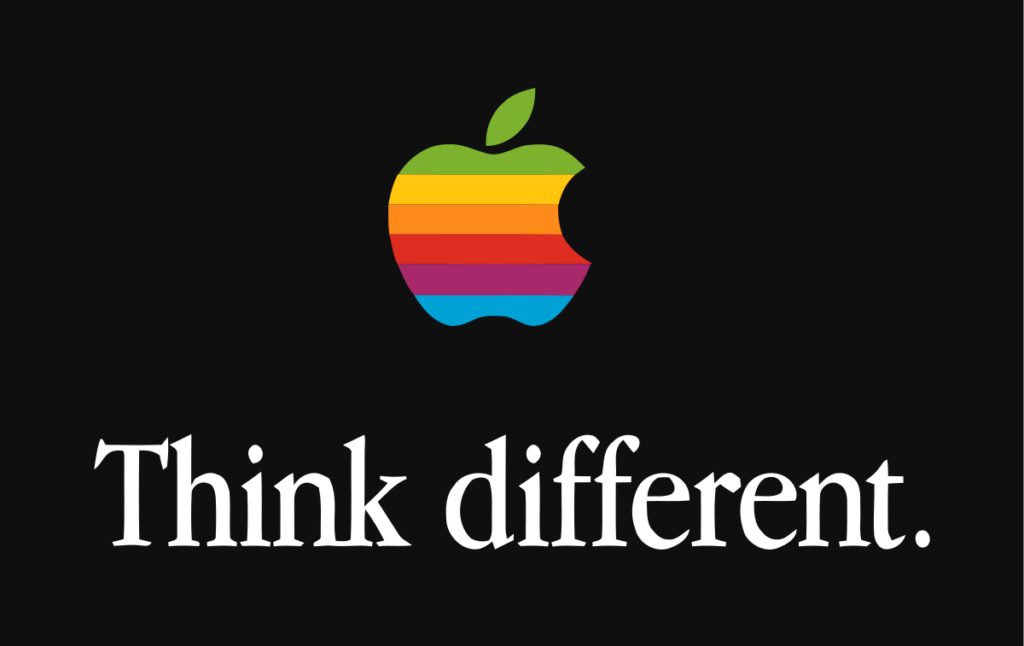
Apple’s “Think Different” campaign is a perfect example of successful creative content marketing. The ads featured powerful and inspiring quotes from famous people, which helped to differentiate Apple from its competitors. This campaign was highly influential in engaging potential customers and increasing Apple products’ sales.
If you want your creative content writing to be successful, use these five tips: be original, use visuals, keep it concise, make it interactive, and tell a story. There’s a lot of room to explore your creativity with this writing style, so make the most of it.

There are many types of content writing, but some of the most common are: – Press Releases – Blog Posts – Website Copy – Sales Letters/Emails – Product Descriptions – Social Media Posts – Articles for Publication – Speeches – Podcasts – Videos
Creative writing is a form of writing that imaginatively expresses ideas and thoughts. It can tell stories, create characters, or express feelings. There are many different types of creative writing, including poetry, short stories, and novels. Creative writing can be used for many other purposes, such as entertaining or educating readers.
There is no one-size-fits-all answer to this question, as the best type of content for social media will vary depending on your specific audience and goals. However, some of the most popular types of content for social media include images, videos, infographics, and blogs. If you’re unsure which kind of content will work best for you, try experimenting with a few different formats and see which ones generate the most engagement from your audience.
Latest Blogs
In this blog, explore the golden rules of using AI marketing tools so you can leverage the benefits to their maximum potential.
In this blog, you’ll learn how to avoid the pitfalls of SEO over-optimization while enhancing your site’s performance.
In this article, we’ll take a look at what AMP is, its advantages and disadvantages, and how it affects SEO.
Get your hands on the latest news!
Similar posts.
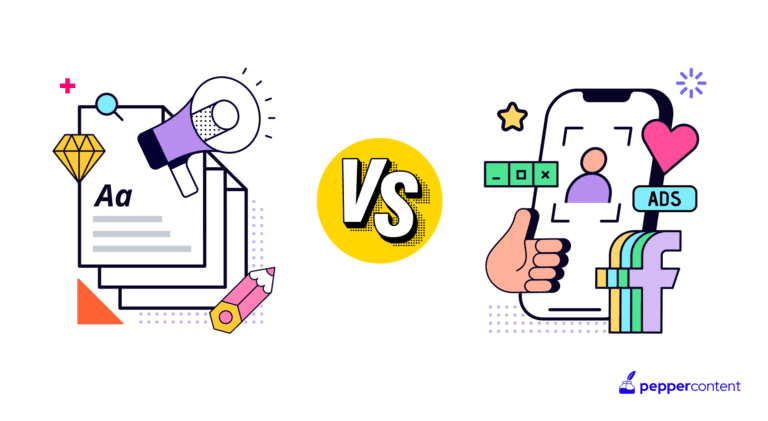
9 mins read
Content Marketing vs Advertising – Which One is More Effective?

11 mins read
Interactive Content vs. Static Content: Which is More Effective?

6 mins read
Unlocking Success: 4 Case Studies of Successful Content Marketing Campaigns Using a Platform
- Starting a Business
- Growing a Business
- Small Business Guide
- Business News
- Science & Technology
- Money & Finance
- For Subscribers
- Write for Entrepreneur
- Entrepreneur Store
- United States
- Asia Pacific
- Middle East
- South Africa
Copyright © 2024 Entrepreneur Media, LLC All rights reserved. Entrepreneur® and its related marks are registered trademarks of Entrepreneur Media LLC
6 Different Types of Creative Content Writers Should Know Creative writing is content that has an emotional touch.
By Bhavik Sarkhedi Oct 10, 2021
Opinions expressed by Entrepreneur contributors are their own.
Content writing and creative writing are words that seem interchangeable and are often confused with each other. But these two functions are very distinct when you look into them in detail. So, what is creative content writing? Who are these expert and professional content writers? Why should a passionate content writer stick to this career? How much money can this career earn?
Creative writing is content that comes from the writer's expression of thoughts, opinions or ideas. Creative content is innovative and recreational. It can be anything academic, professional, journalistic or technical, but it all gives its readers a sense of entertainment.
The writing style is free-flowing, which keeps the reader engaged and gives the writer liberty to express emotions or paint a beautiful picture in the minds of the reader through creative words. Creative content writing gets used across blogs, magazines, newspapers, websites, novels, handbooks or newsfeeds.
Creatively written content carries several benefits, such as establishing a business, building awareness and sharing knowledge. It grabs the reader's attention, increases credibility and lingers in the mind of the reader for a more extended period.
Knowing what creative content writing is, let's look at the unique types of creative content that everyone should know.
1. Press release
A creatively written press release can gather valuable media attention and leave the option to shape the story by the company itself. It serves as a perk promotion tool as it can generate demand and interest, especially when you regularly optimize press releases. It is a great content marketing tool and can get a business some publicity.
Related: 8 Must-Have Skills for an Expert Content Marketer
2. Email writing
Nowadays, email marketing has become a massive part of a successful marketing plan for any business. It is considered a highly convenient form of communicating for businesses. It has a direct line of contact with the target audience. Email writing includes value-focused or sales emails, offer emails and lead generation emails.
3. Ads scriptwriting
The goal of an advertising script is to give a product or service the way to sell commercially. A good advertisement script can keep consumer attention, build brand recognition, and attract the audience towards the product or service advertised. When writing an advertising script, the words are fewer but its effect needs to be amplified. Employing a creative content writing team can get you an ideal advertising campaign within your budget and fulfill the need meeting of your target market.
Related: Every Content Marketer Should Use These 9 Tools
4. Ghostwriting
Ghostwriting sounds mysterious, but is simply writing content for another person without taking the credit. Say you want to create a new copy for a website — a ghostwriter may be hired to rewrite and upgrade the existing copy. There are numerous similar jobs, such as writing ad or business copy or supplying new or rewritten material for personal or professional use. Ghostwriters also get hired to write books. If the author of the book wants to share some credit with the ghostwriter, they can list the ghostwriter as the co-author or editor; otherwise, the book gets written by the ghostwriter for the author to take credit entirely. The ghostwriter is hired primarily to produce high-quality writing copy that reads professionally and creatively.
5. Video content
Video content is any content format that features or includes a form of video. The general form of video content seen today includes vlogs, animated GIFs, live videos, customer testimonials, recorded presentations and webinars. You can publish your creative content in the form of video on any suitable platform. Today, video has undoubtedly become one of the most powerful marketing tools.
6. Podcast script
A well-written script provides structure and direction for your podcast episode. Having an outline and a written direction for your show can help you utilize it for an ideal target audience. Podcast scripts help convey your marketing or content in the form of a message that sounds casual, creative and free-flowing.
In today's business realm, each company is constantly trying to up its game with unique and creative content marketing. Any campaign with no qualities of freshness or distinctiveness tends to get forgotten easily. Hence, content plays a crucial role in building a healthy and long-term rapport with your audience. So, to enhance your brand value, you need to pay close attention to how you convey your ideas to your customers.
Creative content covers a wide range of writing formats and styles. The primary purpose of creative content writing is to express your thoughts, ideas and uniqueness through literary tools. Maximizing your creative content to get your results optimized is the best marketing strategy to adopt today.
Related: Developing a Hardcore Social Media Content Strategy In 5 Steps
CEO of Write Right, Estorytellers, Taletel, Bloggism and Kalam Kagaz
Want to be an Entrepreneur Leadership Network contributor? Apply now to join.
Editor's Pick Red Arrow
- This Former Tesla Employee Started a Side Hustle to Save Gen Z Time — Now It's Raised Over $40 Million From the CEOs of Salesforce, Uber and More
- Lock 20 Things Emotionally Intelligent People Don't Say
- Lock A CEO Who Runs a Fully Remote Company Has an Unusual Take on Employees Starting Side Hustles: 'We Have to Be Honest With Ourselves'
- How an Idea and a Facebook Post Led to a $49 Million Tiny Home Business
- Lock I Thought I Was Resilient , Until a Devastating Loss Showed Me Resilience Is Not Something You Just 'Have'
- Bill Gates Recommends These Books for Your Summer Reading List
Most Popular Red Arrow
Is one company to blame for soaring rental prices in the u.s..
The FBI recently raided a major corporate landlord while investigating a rent price-fixing scheme. Here's what we know.
This Former Starbucks Employee Started a Side Hustle That's Making More Than $70,000 a Month — and He's Not Done Yet
When Tom Saar moved to New York City, he spotted a lucrative business opportunity.
Amazon Has a Blank Book Problem: Buyers Report Receiving Fakes of Bestselling UFO Book
The book looked fine on the outside, but the inside was out-of-this-world.
63 Small Business Ideas to Start in 2024
We put together a list of the best, most profitable small business ideas for entrepreneurs to pursue in 2024.
Paramount Leadership Alludes to Layoffs If Merger Does Not Go Through
Paramount is awaiting approval on its merger with Skydance Media from majority shareholder Shari Redstone.
Microsoft Reportedly Lays Off Over 1,500 Employees in Cloud Sector as Partnership with OpenAI Strengthens
Alphabet also reportedly laid off employees from several teams in Google's cloud unit last week.
Successfully copied link
- Article Writing Affordable Article Writing Services
- Blog Writing Blogs that optimise your visibility
- Product Description Website that optimise your visibility
- Website Writing Website that optimise your visibility
- Proofreading Website that optimise your visibility
- Translation Website that optimise your visibility
- Agriculture Affordable Article Writing Services
- Health & Beauty Blogs that optimise your visibility
- Automotive Website that optimise your visibility
- Sports & fitness Website that optimise your visibility
- Real Estate Website that optimise your visibility
- Entertainment Website that optimise your visibility
- Blogs Affordable Article Writing Services
- Samples Blogs that optimise your visibility
- Case Study Website that optimise your visibility

13 Powerful Rules of Effective Content Writing in 2024
Mastering the rules of effective writing is no longer a nice-to-have skill; it’s a necessity in today’s digital-first communication environment. Whether you are crafting an email, a blog post, or a corporate report, the way you present your ideas can dramatically influence your success. At its core, effective writing serves to inform, persuade, and captivate your audience, making it an indispensable tool across all professions and industries.
This blog will explore the rules for effective writing, offering both budding and seasoned writers actionable insights to refine their craft. From effective business writing to effective blog writing, these principles apply universally, providing a solid foundation to enhance your effective writing skills. By adhering to these guidelines, you’ll not only see an improvement in your writing’s clarity and persuasiveness but also in how your writing is received and valued by readers.
Overview of All the Rules for Effective Content Writing
| Category Number | Category | Rule Number | Rules | Description |
|---|---|---|---|---|
| 1 | Understanding and Engaging Your Audience | 1 | Know Your Audience | Tailor content to the specific needs and preferences of your audience. |
| 2 | Craft a Compelling Hook | Start with a strong, attention-grabbing opening to retain reader interest. | ||
| 3 | Embrace the Strength of Storytelling | Use narratives to illustrate complex points and make content more relatable. | ||
| 2 | Structuring and Clarifying Your Content | 4 | Structure for Clarity | Organize content logically to enhance understanding and retention. |
| 5 | Embrace Strong Verbs and Active Voice | Use dynamic verbs and the active voice for direct and impactful writing. | ||
| 6 | Less is More | Focus on conciseness, removing unnecessary words and fluff. | ||
| 7 | Sentence Variety for Readability | Use different sentence lengths and structures to keep the content engaging and readable. | ||
| 8 | Smooth Transitions | Use transition words to connect ideas and maintain logical flow. | ||
| 3 | Refining and Polishing Your Writing | 9 | Punctuation Powerhouse | Master punctuation to clarify meaning and enhance readability. |
| 10 | Word Choice: Precision is Key | Choose precise words to avoid jargon and clearly convey your message. | ||
| 11 | Proofread Like a Pro | Check writing for typographical and grammatical errors to maintain professionalism. | ||
| 12 | Read it Aloud for Flow and Clarity | Read content aloud to catch awkward phrases and improve flow. | ||
| 13 | Editing and Formatting for Different Platforms | Tailor style and format to the specific platform, whether business documents or blog posts. |
As we dive into these rules for effective writing, remember that each guideline is designed to build upon the last, creating a comprehensive framework that will transform your writing from good to great. So, let’s begin by exploring why mastering these skills is so critical in today’s fast-paced, information-rich world.
Why Effective Writing Matters
Effective writing is the cornerstone of impactful communication. It not only facilitates clear and concise expression but also ensures that the message resonates with its intended audience. The power of effective writing skills cannot be overstated, as they are critical in achieving business objectives, academic success, and personal growth.
The Power of Clear Communication
Clarity in writing enhances reader engagement, leading to better understanding and retention of information. This is particularly important in effective business writing, where clear communication can drive decisions and foster stronger partnerships. By implementing rules for effective writing, businesses can articulate their value propositions more compellingly, ensuring their messages are not only heard but also acted upon.
Furthermore, clarity builds credibility and trust. When readers understand your message without ambiguity, they are more likely to trust your expertise and view you as an authority in your field. This is essential for effective blog writing, where establishing trust can convert readers into loyal followers and customers.
Who Needs Effective Writing Skills?

Virtually everyone can benefit from honing their effective writing skills, but certain groups may find these skills particularly beneficial:
- Content Creators and Bloggers: Engaging and clear writing attracts and retains readership, essential for successful effective blog writing.
- Business Professionals and Entrepreneurs: Well-crafted proposals, emails, and marketing materials are vital for clear communication and professional success.
- Students and Academics: Strong writing skills support clearer arguments and more persuasive research papers, enhancing academic achievement.
- Anyone Who Wants to Communicate Clearly: From everyday emails to social media posts, effective writing helps convey messages succinctly and effectively.
Understanding and applying the rules for effective writing can transform your writing and ensure your ideas are communicated with precision and impact. As we continue to explore these rules, remember that each strategy is designed to enhance your ability to write clearly and persuasively across various platforms.
Foundational Pillars of Effective Writing
Mastering the rules for effective writing is essential for anyone looking to improve their communication skills across various platforms. This section delves into two fundamental rules that are vital for crafting impactful content, whether it’s for business, academic purposes, or blogging.
Rules of Effective Writing #1: Know Your Audience
The first rule in effective writing emphasizes the importance of understanding who your readers are. This knowledge directly influences how you approach your writing, making it a critical element in both effective business writing and effective blog writing.
- Identifying Reader Persona and Goals: Begin by identifying your audience’s demographics, interests, and needs. This understanding helps tailor your message to resonate more profoundly with them, ensuring that the content you produce is relevant and engaging.
- Tailoring Content Style and Tone: The tone and style of your writing should reflect the expectations and preferences of your intended audience. For example, professional or academic audiences might prefer a more formal tone, rich with data and insights, whereas a blog audience might engage more with a conversational and approachable tone.
- Example: Here are two examples to illustrate how you can define reader personas:
- Name: John, a busy CEO
- Demographics: Male, 45 years old, based in New York
- Professional Details: CEO of a technology startup
- Goals: Wants to grow his business significantly over the next decade
- Pain Points: Struggles with finding time for personal development and networking
- Content Preferences: Prefers concise, data-driven content accessible via mobile for quick reads during travel
- Engagement Behavior: Most likely to engage through LinkedIn or direct email communications
- Name: Emma, a college student
- Demographics: Female, 20 years old, studying in California
- Academic Focus: Environmental Science major
- Goals: Aims to contribute to sustainable practices through her studies
- Pain Points: Feels overwhelmed by the volume of study materials and lack of real-world application
- Content Preferences: Enjoys interactive content like quizzes and visual storytelling
- Engagement Behavior: Highly active on social media platforms like Instagram and educational forums
These personas are synthesized from market research and real data about typical customer profiles, aimed to guide content creation that resonates specifically with each segment’s preferences and behaviors.
Rules of Effective Writing #2: Craft a Compelling Hook

A compelling hook is essential to captivate your audience from the very beginning. This rule is pivotal across all forms of writing, as it determines whether a reader will engage with the rest of your content.
- The Importance of Grabbing Attention: In today’s fast-paced digital environment, capturing the reader’s interest quickly is crucial. A strong hook not only piques curiosity but also sets the tone for the rest of the content.
- Using Headlines, Introductions, and Questions Effectively: Effective headlines and engaging introductions can make the difference between content that is read and shared and content that is ignored. Starting with a question, for instance, can immediately engage the reader by prompting them to think about the answer.
- Examples of Strong Hooks: Here are examples of strong hooks tailored to the personas described:
- For John, the CEO: “Discover five strategies that tech CEOs like you are using to double their productivity without sacrificing personal time.”
- For Emma, the Student: “Are you a student overwhelmed by textbooks? See how visual learning can change the game for you.”
- Each hook is designed to grab the attention of the persona by addressing their unique interests and pain points, demonstrating a direct understanding of their challenges and interests.
By focusing on these two rules for effective writing, writers can significantly improve their ability to not only reach but also resonate with their target audiences, thereby enhancing the overall impact of their writing.
Continuing with the exploration of rules for effective writing, we delve into two more principles that are instrumental for anyone looking to sharpen their communication across various forms of media.
Rules of Effective Writing #3: Structure for Clarity
Effective structuring is vital to delivering your message with clarity and impact. This rule is crucial for effective writing, as it guides the reader through your content in a logical and digestible manner.
- The Power of Organization in Writing: Organizing your content logically ensures that readers can follow along without confusion, enhancing their understanding and retention of the information. For instance, a well-structured effective business writing piece outlines problems, solutions, and expected outcomes in a sequence that mirrors business planning.
- Utilizing Outlines for Planning: Starting with an outline can dramatically improve the effectiveness of your drafts. By planning sections and key points ahead of time, you ensure that all critical aspects are covered comprehensively. This method is particularly useful in effective blog writing, where breaking down complex information into manageable parts is essential for reader engagement.
- Common Writing Structures: Familiarize yourself with various structures such as chronological, cause and effect, and problem-solution. Each has its merits depending on the type of content you are creating. For example, a chronological structure might be ideal for historical narratives, while a problem-solution structure could be better suited for case studies or policy discussions.
Rules of Effective Writing #4: Embrace Strong Verbs and Active Voice
Choosing the right verbs and maintaining an active voice are pivotal in making your writing lively and engaging. These components of effective writing skills transform passive constructions into dynamic sentences that propel readers to continue.
- Active Voice vs. Passive Voice: Active voice typically makes sentences clearer and more direct than passive voice. For example, “The manager approved the project” (active) is more straightforward and engaging than “The project was approved by the manager” (passive).
- Choosing Powerful Verbs to Drive Action: Strong verbs convey action and intent much more effectively than their weaker counterparts. They make your writing more vivid and can help reduce the length of your sentences while increasing their impact.
- Before & After Examples of Using Active Voice:
- Before: “A meeting was scheduled by the team.”
- After: “The team scheduled a meeting.”
Incorporating these rules for effective writing into your work will ensure that your content not only reaches but also resonates with your audience, ultimately driving the desired outcomes. Whether you are involved in effective business writing or effective blog writing, these principles will enhance the clarity and dynamism of your compositions.
Moving further into the rules for effective writing, we explore additional strategies that enhance sentence construction and punctuation, both key elements in making your text readable and professional.
Rules of Effective Writing #5: Less is More: Embrace Concision

Concision in writing removes clutter and sharpens your message, making it easier for your readers to understand and appreciate your point. This rule is especially pertinent in effective business writing, where time is often at a premium, and clarity is paramount.
- Avoiding Unnecessary Words and Fluff: Cutting out superfluous words helps streamline your content, making it more powerful and direct. For example, instead of saying, “It is important to note that,” you can simply say, “Note that.”
- Focusing on Clear and Concise Sentences: This involves not just trimming words, but also rephrasing sentences for maximum impact with fewer words. This technique is vital in effective writing where every word must earn its place on the page.
- Techniques for Tightening Your Writing: Use strong verbs, get rid of redundancies (e.g., “12 midnight” to “midnight”), and avoid vague language (e.g., “various different” to “various” or “different”).
Rules of Effective Writing #6: Sentence Variety for Readability
Incorporating a mix of sentence lengths and structures can greatly enhance the readability of your writing, keeping the reader engaged. This is an essential component of effective writing skills, helping to maintain a reader’s interest throughout your piece.
- Mixing Sentence Length and Structure: Using a variety of sentence structures, such as simple, compound, and complex sentences, helps break the monotony and keeps the reader’s attention.
- Avoiding Monotony for Engaging Readers: Alternating between shorter, punchier sentences and longer, more descriptive ones can help maintain an engaging rhythm in your writing.
- Examples of Sentence Variation Techniques:
- Short and impactful: “The deadline approached. Panic ensued.”
- Long and descriptive: “As the hours dwindled down to the final deadline, a wave of panic swept through the office, enveloping everyone in a frantic rush.”
By applying these rules for effective writing to your work, whether it’s effective blog writing, academic writing, or effective business writing, you can significantly enhance the quality and effectiveness of your communication. Engaging your audience with clear, concise, and varied sentences will make your writing not only more enjoyable to read but also more memorable.
Continuing with the exploration of rules for effective writing, we focus on punctuation mastery and the strategic use of transition words to ensure seamless flow and coherence in your content.
Rules of Effective Writing #7: Punctuation Powerhouse: Master Punctuation

Proper use of punctuation is crucial in effective writing, as it helps clarify meaning and enhances the readability of your text. This rule is fundamental in both effective business writing and effective blog writing where precision and clarity are key.
- Importance of Commas, Colons, Semicolons, etc.: These punctuation marks can significantly affect the meaning of sentences. For example, commas can indicate a pause or separate items in a list, while semicolons can link closely related thoughts.
- Proper Punctuation for Clarity and Emphasis: Using punctuation correctly can help emphasize important points and ensure that your message is understood as intended.
- Common Punctuation Mistakes to Avoid: Examples include overusing commas, using semicolons incorrectly instead of colons, and misplacing apostrophes in contractions and possessives.
Rules of Effective Writing #8: Transition Words: Smooth Sailing for Readers
Transition words and phrases are the glue that holds sentences and paragraphs together, providing a smooth reading experience. This aspect of effective writing skills is particularly important in creating a logical flow and maintaining reader engagement throughout your document.
- Using Transitions to Connect Ideas: Transition words like “however,” “furthermore,” and “consequently” signal the relationship between sentences and paragraphs, guiding the reader through your argument or narrative.
- Maintaining a Logical Flow and Coherence: Effective use of transitions ensures that your writing flows logically from one idea to the next, making complex information easier to follow.
- Examples of Transition Words and Phrases:
- To show contrast: “on the other hand,” “nevertheless.”
- To add information: “in addition,” “moreover.”
- To show cause and effect: “therefore,” “as a result.”
By mastering these rules for effective writing, you can enhance the technical quality of your content, making it more professional and easier to understand. Whether you are engaged in effective business writing, academic writing, or effective blog writing, proper punctuation and the thoughtful use of transition words will significantly improve the clarity and effectiveness of your communication. These elements help ensure that your audience comprehends and retains your message, ultimately leading to better engagement and results.
As we advance through the rules for effective writing, let’s delve into enhancing style and choice, which play pivotal roles in refining your writing’s appeal and effectiveness.
Rules of Effective Writing #9: Spice it Up with Figurative Language
Using figurative language effectively can transform plain text into compelling content, adding depth and vividness to your expressions. This rule is particularly valuable in effective blog writing and creative writing, where engaging and memorable content is crucial.
- Similes, Metaphors, Personification: These devices compare and attribute qualities in ways that can deeply resonate with readers, making abstract ideas more concrete and relatable.
- Using Figurative Language for Emphasis and Interest: Figurative language enhances the reader’s experience by making the content more dynamic and imaginative.
- Examples of Effective Figurative Language:
- Simile: “Navigating her startup’s early days, she moved as cautiously as a cat in a room full of rocking chairs.”
- Metaphor: “The final exam was the monster at the end of his semester.”
- Personification: “The autumn leaves danced their way through the empty streets.”
Rules of Effective Writing #10: Word Choice: Precision is Key

Selecting the right words is essential in conveying your message clearly and powerfully. This rule underscores the importance of precision in effective writing, particularly in effective business writing, where every word must serve a purpose.
- Selecting the Most Appropriate Words: Choose words that precisely reflect your intended meaning and fit the context of your message.
- Avoiding Jargon and Overused Language: While specialized terms can be necessary, excessive jargon can alienate readers who are not familiar with the terminology. Similarly, clichés can detract from the originality and strength of your writing.
- Using Strong Verbs and Active Voice (Reinforce Rule #4): Strong verbs and active voice contribute to making your writing more direct and dynamic.
- Examples of Word Choice Improvements:
- Instead of saying, “utilize,” say “use.”
- Replace “facilitate” with “help” or “aid.”
- Change “endeavor” to “try” or “attempt.”
Implementing these rules for effective writing will not only improve the stylistic quality of your work but also its clarity and impact. Whether crafting a persuasive effective business writing piece, a captivating blog, or an academic essay, the strategic use of figurative language and meticulous word choice are key to resonating with and influencing your readers.
Rules of Effective Writing #11: Embrace the Strength of Storytelling
Storytelling is a powerful tool in writing, capable of engaging and persuading readers by connecting them emotionally to the subject matter. This rule is essential across all types of writing, from effective blog writing to effective business writing, where sharing relatable stories can significantly enhance the impact of the content.
- Captivating Readers with Engaging Narratives: Stories can transform abstract concepts into tangible experiences that readers can understand and relate to. They help in illustrating points more vividly than straightforward exposition.
- Using Stories to Illustrate Points and Ideas: Incorporate anecdotes and case studies to bring data and information to life. For example, in effective business writing, instead of just presenting quarterly sales data, you might share a story about how a particular strategy led to a significant sale.
- Weaving in Personal Anecdotes (Optional): Personal anecdotes can make your writing more relatable and trustworthy, especially in blogs or speeches. Sharing personal experiences invites readers into your world and helps them connect on a more personal level.
By integrating storytelling into your writing, you can elevate the reader’s experience and make your messages memorable. Whether you are aiming to inform, entertain, or persuade, stories can be your most compelling tool.
Moving forward in our exploration of the rules for effective writing, we now address tailoring your content for different platforms and the crucial stages of editing and proofreading to ensure your writing is polished and professional.
Tailoring Your Writing for Different Platforms

Different platforms require different styles and formats of writing. Adapting your content appropriately can significantly increase its effectiveness and audience engagement.
1. Effective Business Writing
Effective business writing is all about clarity, conciseness, and getting straight to the point. This form of writing values precision and a professional tone.
- Professional Communication and Clarity: Clear communication reduces misunderstandings and increases efficiency in business environments.
- Conciseness and Avoiding Redundancy: Get to the point quickly without sacrificing necessary detail to keep the reader’s attention.
- Formatting for Business Documents: Use formats that are easy to navigate, such as bullet points and subheadings, especially in emails, reports, and proposals.
- Example: Structuring a Persuasive Business Proposal: Start with a summary of the business need, followed by proposed solutions, benefits, and finally a call to action.
2. Effective Blog Writing
Effective blog writing differs as it often blends informative content with a more relaxed, conversational style. It’s about balancing information with engagement.
- Engaging Blog Content for Readers: Use a tone that is accessible and engaging to keep the reader interested.
- Using SEO Best Practices for Discoverability: Implement keywords, meta descriptions, and headers to improve SEO, which helps in attracting more visitors to your blog.
- Balancing Information with Entertainment: Keep the content light enough to be entertaining but informative enough to provide value.
- Suggestive Example: Crafting a Compelling Blog Post Introduction – Begin with a question or a surprising fact to hook the reader, then briefly outline what the post will cover.
Editing and Proofreading: The Final Polish

The last step in the writing process involves revising and refining the content to eliminate errors and enhance readability.
Rules of Effective Writing #12: Proofread Like a Pro: Catching Typos and Grammatical Errors
Proofreading is crucial for maintaining professionalism and credibility in your writing.
- Using Spell Checkers and Grammar Tools: These tools are helpful for catching basic errors, but they should not be solely relied upon.
- Manual Proofreading Techniques: Read your content backwards, from the end to the beginning, to focus on individual words and punctuation rather than the flow of the text.
- Proofreading Tips for Common Mistakes: Pay special attention to common errors like their/there/they’re, your/you’re, and misuse of apostrophes.
Rules of Effective Writing #13: Read it Aloud for Flow and Clarity
Reading your content aloud is an effective way to catch awkward phrases and to hear the rhythm and flow of your sentences.
- Identifying Awkward Sentences and Unnatural Flow: If you stumble over the words, your readers might too.
- Listening for Clarity and Emphasis: Hearing the words spoken can highlight areas where emphasis may be needed or where the message isn’t clear.
- Revision Techniques Based on Reading Aloud: Adjust sentences and words that sound awkward or unclear to improve the overall readability and impact of your writing.
By mastering these rules for effective writing and tailoring your content for specific platforms, you ensure that your writing is not only clear and effective but also engaging and suited to the needs of your target audience. These final touches of editing and proofreading further polish your work, making it ready to leave a lasting impression.

Mastering the rules for effective writing provides you with the essential skills to produce clear, compelling, and engaging content suitable for any platform. Whether you are involved in effective business writing, academic writing, or effective blog writing, these guidelines will elevate your communication abilities and enhance your connection with various audiences.
Recap of All 13 Rules and Their Benefits:
- Know Your Audience: Understanding and addressing the specific needs of your audience increases engagement.
- Craft a Compelling Hook: Capturing attention immediately keeps readers interested from the start.
- Structure for Clarity: Organizing content logically aids in understanding and retaining information.
- Embrace Strong Verbs and Active Voice: Using dynamic verbs and active constructions makes writing more direct and impactful.
- Less is More: Conciseness ensures clarity and enhances the punch of your message.
- Sentence Variety for Readability: Mixing sentence structures keeps the content engaging and readable.
- Master Punctuation: Proper punctuation clarifies meaning and improves readability.
- Smooth Transitions: Effective use of transition words ensures logical flow and coherence.
- Spice Up Your Writing with Figurative Language: Figurative language enriches the narrative, making it more memorable.
- Precision in Word Choice: Selecting the right words enhances clarity and effectiveness.
- Embrace the Strength of Storytelling: Using narratives to illustrate points makes content more relatable and engaging.
- Proofread Like a Pro: Catching typographical and grammatical errors maintains professionalism.
- Read it Aloud for Flow and Clarity: Hearing your work read aloud can reveal issues in flow and clarity that may be missed when reading silently.
Equipped with these rules for effective writing, your next step is to apply them diligently across your projects. Review and revise existing writings, engage in regular practice, and actively seek feedback to refine your skills . Writing is a craft that improves over time with consistent effort and a commitment to excellence.
By embracing these rules, you can enhance your writing abilities, ensuring your communications are not only effective but also impactful. Whether your aim is to inform, persuade, or entertain, these principles provide a robust foundation for achieving clarity and resonance in all your writing endeavors.

What are the most common mistakes writers make?
Many writers struggle with unclear thesis statements, excessive use of passive voice, frequent grammatical errors, and verbosity that reduces clarity. Focusing on crafting clear thesis statements, using active voice, checking grammar meticulously, and being concise in your writing can mitigate these issues.
How can I improve my writing skills quickly?
To enhance your writing skills rapidly, read a variety of texts to expose yourself to different styles, practice writing regularly, seek feedback from peers or mentors, and engage with educational resources such as workshops or online courses. These activities help apply the rules for effective writing in practical settings.
Are there any online tools or resources to help me write better?
Several tools can aid in improving your writing:
- Grammarly : Helps with grammar and style suggestions.
- Hemingway Editor : Assists in simplifying and strengthening your prose.
- ProWritingAid : Offers detailed writing reports and feedback.
These tools are beneficial for both effective business writing and effective blog writing, helping to enhance clarity and reader engagement.
How does effective writing differ between business and blog formats?
Effective business writing often focuses on clarity, precision, and directness to facilitate professional and clear communication. It tends to be formal and concise, aimed at quick comprehension and action.
Effective blog writing may adopt a more conversational tone, focusing on engagement and SEO to attract and retain readers. It often integrates personal anecdotes or opinions to establish a connection with the audience.
I’m a student. How can I use effective writing in academic contexts?
In academic writing, effective writing helps articulate arguments clearly, support claims with evidence, and convey complex ideas comprehensively. Focus on clarity, structure, evidence, and maintaining a formal tone. These aspects are critical for conveying your research and arguments effectively.
Is there a secret formula for writing perfectly?
While there is no secret formula for perfect writing, continuous practice, learning from feedback, and diligent revision are key. Applying the rules for effective writing consistently will greatly enhance your ability to communicate effectively through writing.
By addressing these questions, the aim is to provide you with actionable insights and tools to refine your writing skills, ensuring your communications are clear, persuasive, and engaging across various contexts. Whether drafting a corporate report, writing a blog post, or preparing an academic essay, understanding and utilizing these rules can profoundly impact the effectiveness of your writing.

Hi, I talk about tips and tricks about content writing, storytelling, funneling, and more!
More details for blogs

How to Create Interactive Content and Boost Engagement
Learn how to create interactive content to engage your audience. Discover tools, strategies, and benefits of using interactive elements.

How to Use Canva to Mass Produce Viral Content
Discover how to use Canva to mass produce viral content with these expert tips and strategies. Boost your content creation game today!

SGE Ranking Strategies: How to Get Rankings on SGEs
Learn how to create answers that rank for SGE with our comprehensive guide on SGE ranking strategies. Powerful tips and examples!
Need assistance with something
Speak with our expert right away to receive free service-related advice.
Sie verwenden einen veralteten Internet-Browser. Bitte laden Sie sich eine aktuelle Version von browsehappy.com um die Seite fehlerfrei zu verwenden.
You're here: textbroker.com » Glossary » Creative Writing
Creative Writing
Creative writing: brief explanation, creative writing: detailed explanation.
- Methods of creative writing
Learn Creative Writing
Creative Writing involves an artistic process, and this writing is generally viewed as a craft anyone can learn. There are many creative writing approaches, all of which involve a range of creative techniques.

The creative writing tradition in the US has a long history, and the term “creative writing” was used in literary seminars at universities back in the 19th century.
In the broadest sense, creative writing involves original approaches to developing ideas that can help produce content. The aim is always to reduce barriers to writing and thereby facilitate the creation of imaginative texts.
In addition to developing literary work, creative writing is also used in psychology as a form of therapy that promotes self-awareness and allows opportunities for self-expression.
Creative Writing Methods
Methods of developing creative writing range from playful experiments to working with literary forms. All can insprire creative content, and different methods can often be combined. Two common techniques are free writing and clustering.
Free Writing
When free writing, the author writes down whatever comes to mind, without editing – whether it be a single word, a phrase or sentence. Free-flowing thoughts are then committed to paper without interruption, censorship or deletions. Don’t interrupt this flow of thoughts; just keep repeating the last word until a new idea arrives. By doing this, the problem of actually starting a piece of writing can be overcome, and “writer’s block” is avoided. After a predetermined timeout, the writing can then be reflected upon and evaluated – a process that generates valuable ideas.
This technique was developed by American lecturer and writer Dr. Gabriele Lusser Rico. When clustering, a keyword or word combination is first written in the middle of the page with a circle drawn around it. All other terms prompted by the keyword(s) are then jotted down all around, and also circled. Different circles can then be connected in various ways, creating chains of association. These “chains of thoughts” then form a possible structure for the content to match.
Other known methods of creative writing include Journal Writing (regularly committing your thoughts to paper) and Brainwriting (brainstorming in written form, where group participants write down ideas individually and are then merged later).
Various writing games also support the creative writing process: For example, the use of letter cubes or haiku poems.
In the United States, creative writing is taught in hundreds of universities, and many famous writers, such as Dave Eggers, have attended or taught creative writing courses.
The message underlying the creative writing concept is this: Anyone can become a good writer once they have learned the necessary skills.
Creative writing is all about the imaginative use of language and overcoming writer’s block. Different methods are possible to do so, but creative writing’s core concept remains the light-hearted manipulation of language. Ideas for stories can also emerge through the use of creative writing techniques, and these can later be refined for content.
Join our over 53,000 customers world-wide and use Textbroker for your Content Marketing.
Managed-Service
Textbroker offers an extended level of service with the Managed Service option. Managed Service gives you additional support and a personal account manager when you want us to manage your projects for you. Find out more here.
Self-Service
Do you need up-to-date content? Then manage your project through Textbroker’s Self-Service. You choose the quality level, price, and author for your content.
Thousands of authors from across the U.S. earn money with Textbroker, the leading provider of unique, custom content. Become a Textbroker author now and access thousands of projects to choose from.
What is Content Writing? (Beginners Guide)
Content writing is an excellent career opportunity with plenty of opportunities to be creative, work with new people, and earn a good salary.
- Academy Login
- Online Courses
- Get Free eBooks
What Is Content Writing?
What does a content writer do, how to become a content writer, content writing tips, content writing examples, how much do content writers get paid, should you become a content writer.
Content writing is the process of planning, writing, and publishing web content to satisfy the needs of a specific audience. The aim is to share valuable information to earn customer trust, improve engagement, and establish credibility in your niche.
A content writer creates written material for websites, blogs, and other digital media. They engage and inform audiences through well-researched and compelling content.
The fundamental role of a content writer starts with understanding the target audience of the company they’re writing for. The best content writers know how to adjust their tone of voice and marketing efforts to suit the expectations of their target audience.
Some of the tasks a content writer may be responsible for include:
Keyword research: While some companies have separate SEO experts responsible for keyword research, good content writers should have the skills to perform keyword research and identify terms and phrases to use in the content.
Content strategy: Content writers can work solo or with content marketing specialists and assist in developing an end-to-end content strategy. This could involve determining what kind of content to create for each channel.
Content writing: Perhaps the most important role of a content writer is actually creating content. Content writers create everything from blog posts to web pages on behalf of a client.
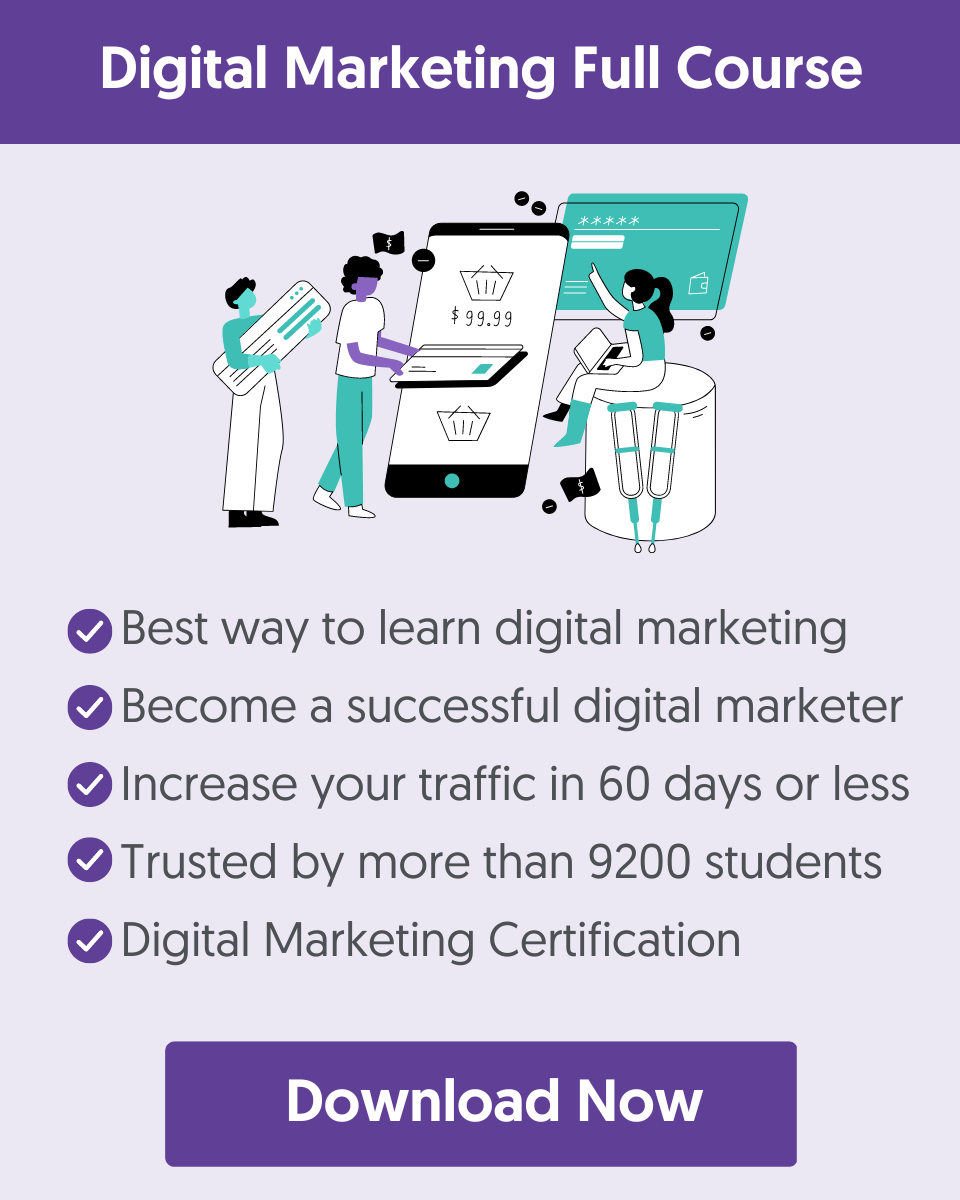
Proofreading and editing: Some content writers do all of their proofreading and editing themselves.
Publishing: Content writers will usually be able to upload their content to various platforms. This could mean adding posts to a WordPress site and scheduling them.
The key to successfully starting a job in content writing is developing your skills and gaining as much experience as possible. Here are some steps for beginners to start with content writing with no experience:
- Enroll in a course
- Practice your writing skills
- Develop complementary skills
- Find your niche
- Build your experience
1. Enroll in a course
While you don’t need a specific content writing degree to get into this industry, a content marketing certification or a digital marketing certification can be useful.
Enrolling in an online course is an excellent way to develop some of the necessary skills you’ll need to impress and attract potential clients. You can even get a copywriting certificate to add to your resume.
When looking for suitable courses, focus on the aspects of content writing you’re most interested in. For instance, if you want to get involved with content writing from an SEO perspective, look at courses covering digital marketing , SEO Courses , and writing.
You may decide to take a selection of different courses to build out the appropriate skillset.
2. Practice your writing skills
Many people aspire to be writers, particularly when they have a creative mind and a talent for language. However, only a handful of hobbyists turn their skills into a profession.
The only way to actively pursue your career in content writing is to begin practicing. It takes many hours to become the kind of writer a professional team or business would want to hire.
Begin by writing blogs for your own website, where you can advertise your skill, collect testimonials, and build a portfolio over time.
You can also get involved with online writing forums and groups to gain inspiration. You could even volunteer your writing services to publications you like. This will help to build your skills while getting your name out there.
Our Content Marketing Course will teach you everything you need to know about content writing.
Get Started
3. Develop complementary skills
Writing is the most important talent you’ll need to become a professional content writer.
However, there are other skills that can come in handy and improve your chances of getting the attention of potential clients. For instance, you’ll need fantastic communication skills to interact with clients and companies you work with.
Learning how to convey your ideas effectively to a wide audience will be essential as a content writer.
You’ll also need good research skills. Ensure you know how to track down credible sources of information when developing your career as a content writer.
Other complementary skills may include:
- SEO : Most companies want their content writers to have some basic search engine optimization .
- Problem-solving : Problem-solving skills will help you to come up with unique ways of using content to address the needs of your clients.
- Adaptability : The ability to adapt, constantly grow, and develop new skills is essential to a content writer. The tools you use to convert customers for your audience will likely change over time, so be ready to evolve frequently in your career.
4. Find your niche
While some content writers and copywriters will work on a broad range of topics across a wide variety of companies and industries, a general approach can make it difficult to stand out.
You may find you can reach a wider audience and spend more time on work you actually enjoy with a niche.
Focusing on a specific area of specialization could mean you work best for companies in the healthcare or technology industry. The more you focus on this space, the more you develop your reputation and attract potential future clients.
Alternatively, your niche could involve looking at a specific aspect of content writing. You might be particularly good at writing engaging blog posts, creating social media content, or producing whitepapers for technical companies.
5. Build your experience
Finally, the most important thing that matters to people planning on hiring a content writer is usually experience. Your future employers want to see evidence you have skills in your space.
The best way to begin building experience as a content writer is to create a portfolio of work you can share with your employers. These are basically examples of your content in the form of ad mock-ups, blog posts, and social media campaign ideas.
Once you have your portfolio and you’re posting regularly on your own website blog, look for opportunities to branch out and gain more experience.
Contributing to reputable sites, even if you don’t get paid for it, will help to demonstrate your writing skills. You can also consider offering clients a discount price in exchange for a review when you finish their project.
Follow these tips to become better a content writing.
1. Write content for all the stages of the marketing funnel
Content marketers use content to direct prospects through the different stages of the digital marketing sales funnel . Each stage of the customer journey requires a different approach to content.
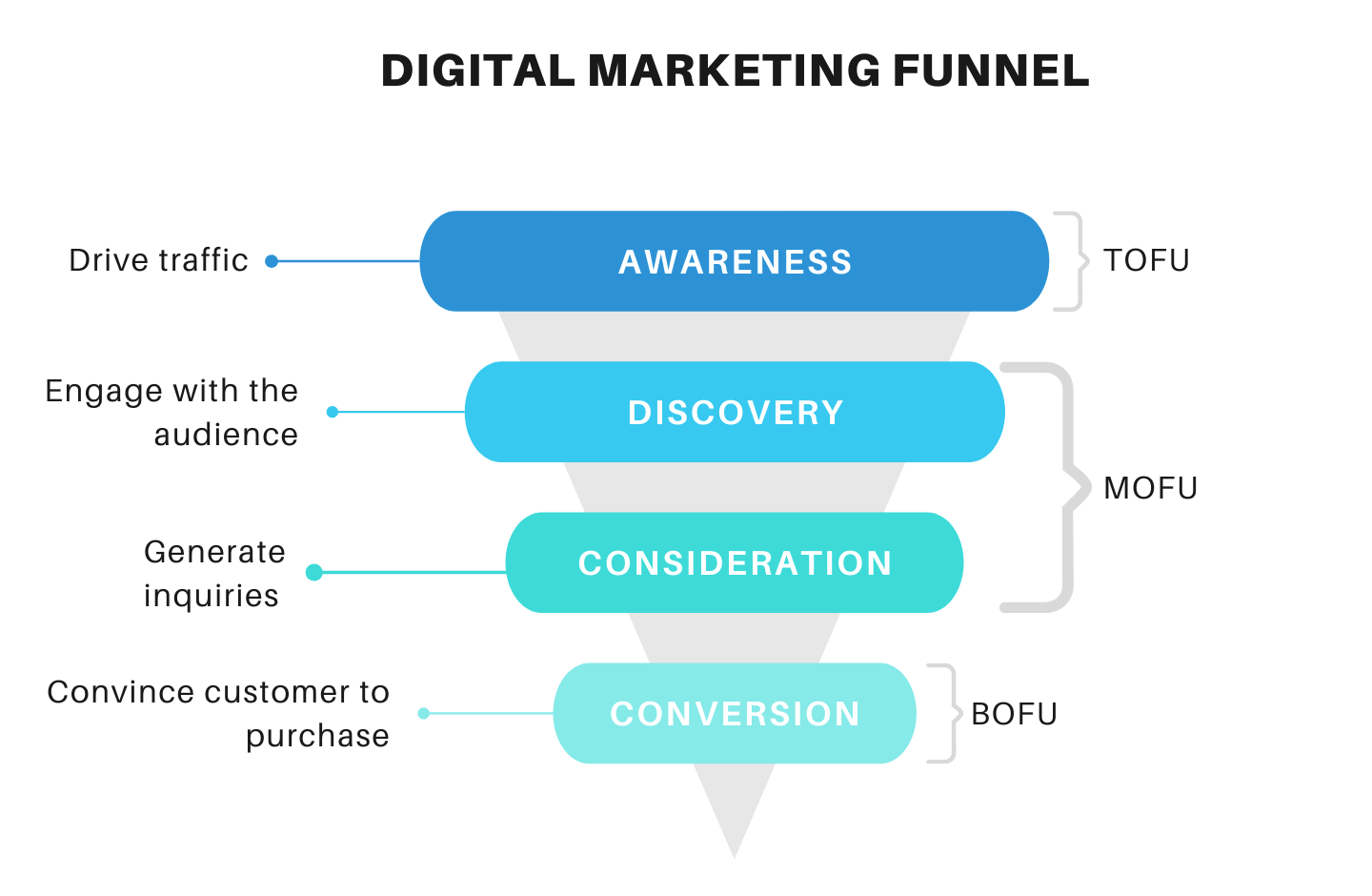
For example, during the awareness stage ( top of the funnel ), your content would aim to inform and attract customers.
During the consideration stage, you highlight the benefits of your products or services against competitors.
At the bottom of the funnel, you write content to convince customers to purchase a product or perform a desired action.
2. Always do your research
Research is vital for content for a variety of reasons. First, you need to conduct research to determine who you’re writing for.
The best content writers cultivate a specific voice to speak to a certain audience. The more you understand your customer, the more you can connect with that person on an emotional level – generating conversions.
It’s also important to research any information you will be writing about. Factual, credible information is key in content production, even if your writing is primarily for entertainment purposes.
Studies show if a brand generates fake content about products or services, around 59% of customers will stop buying from this company immediately.
To make your content as compelling as possible, research:
- Your subject matter: Learn as much as possible about the topic and use references to reputable sources to give your work credibility.
- Customers: Know your audience. Building buyer personas and understanding how customers respond to different content at various stages in the consumer journey will improve conversions on a significant scale.
- Competitors: Understanding what your competitors produce in terms of content will give you some valuable inspiration. It also helps when you’re trying to make your content unique from what’s already available on the market.
3. Master the critical components of content
Every piece of content is constructed with a series of different elements. For written content, specific components are more important to capturing and converting customers than others. For instance, you’ll need:
Head-turning headlines: Headlines determine whether your audience will bother reading the rest of the article, eBook, or any other content you produce.
If your headline isn’t engaging, readers will just hit the back button. Engaging headlines are thought-provoking and interesting.
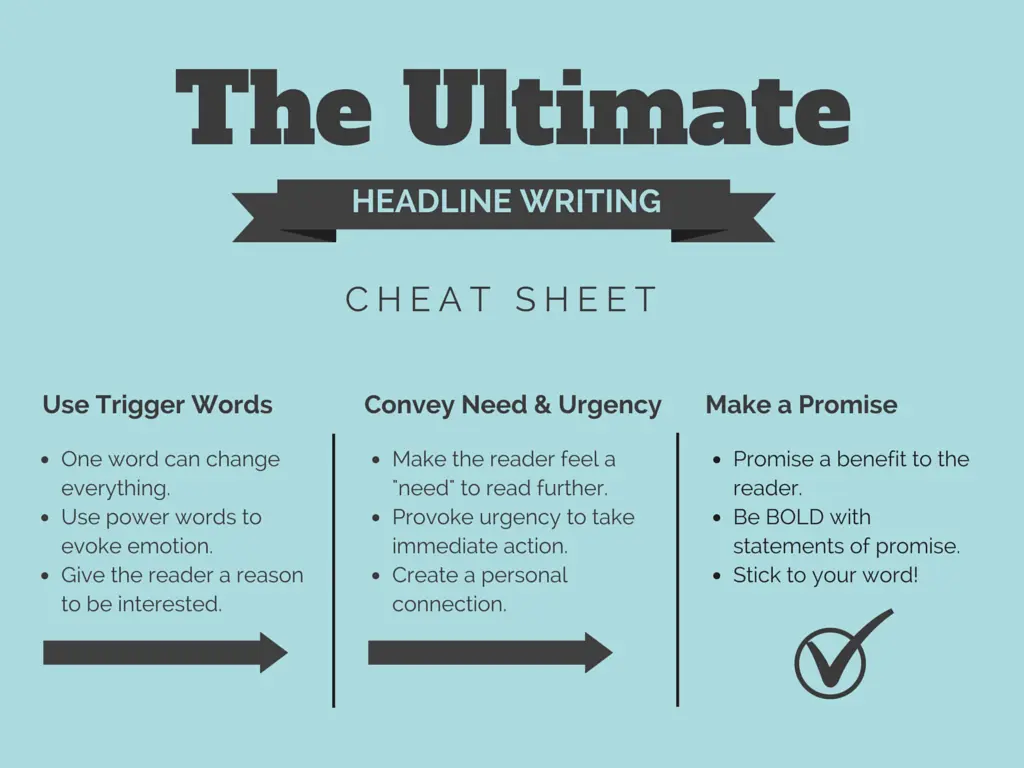
Try techniques like using numbers to demonstrate authority, such as “98% of marketers say…” or asking questions: “Do you know these email marketing tricks?”
A compelling hook: You only have a matter of seconds to keep readers engaged after they’ve read your headline. The first sentence or two is crucial in keeping your audience’s attention. Make sure you get this first section right.
Stay clear and focused: Don’t confuse your audience with a hundred different ideas in one piece of content. Focus on a specific topic and concentrate on giving your customers plenty of actionable advice to walk away with.
Remember, use a tone of voice specific to your target audience and the persona you’re writing for. This will help to make your content more compelling to the right people.
4. Edit and optimize everything you write
Finally, great content takes work. Most content writers don’t publish the first version of the piece they write. Taking the time to read through the content is crucial.
Remember, any grammatical error or unusual sentence can confuse your audience and send them running in the opposite direction.
Often, it’s helpful to have a separate proofreader on hand when creating content because they can examine your work objectively and spot things you’ve missed. Other ways to enhance your work include:
Checking for content SEO : Have you used keywords naturally and organically throughout the post? Are there internal links for page connections on your site and external links for credibility? Have you optimized your H1 tag , meta tags, headlines, and title tags?
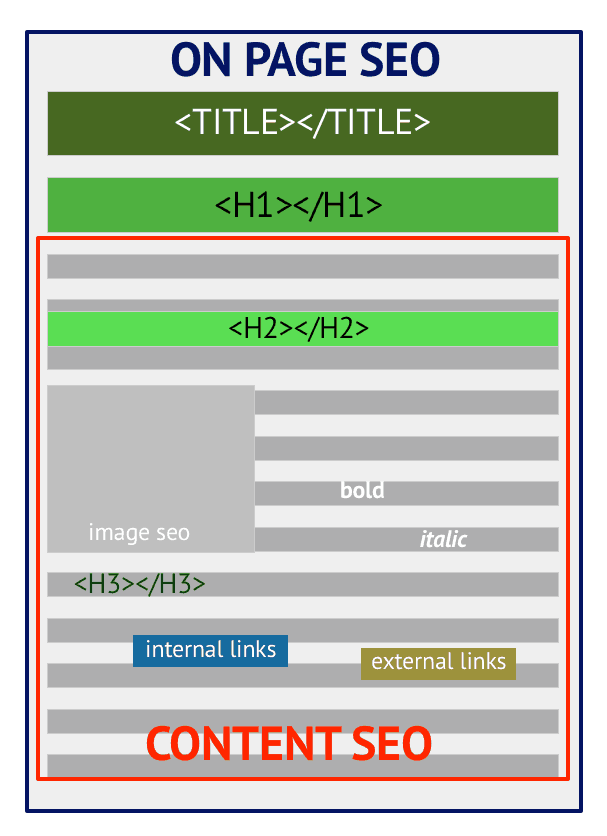
Examining readability: Is your content divided into logical segments? Have you got subheadings to guide your reader, short paragraphs, and plenty of bullet points? Keep everything as clean as possible to improve readability.
Looking at relevancy: Is every part of your content as relevant as it should be? Can you remove anything that isn’t useful to your audience?
The most common forms of content a content writer may be asked to create are:
Blogging: Blogs are a central part of building a strong content strategy . They can convey ideas about products and your brand while highlighting your thought leadership. Blogs can also be useful for SEO purposes, building organic traffic , and raising brand awareness.
Email: Writing content for emails can help to convert customers, as well as generate better engagement for your business. Email marketing also helps to build loyalty and strengthen your opportunities for repeat purchases.
Social media: Social channels require content writers to communicate various ideas and campaigns as effectively as possible.
Product content: Selling products and services requires a unique set of writing skills. You’ll have to balance sales copy with storytelling and SEO strategies.
Brand journalism: PR news releases, customer and brand stories, and internal communications can all require the support and guidance of a content writer.
Whitepapers and eBooks: Content writers can help to produce highly technical and professional content that requires a focus on a specific subject. This helps to strengthen the authority of the brand.
Video scripts: If scripts are required to create videos or even podcasts for a company’s branding purposes, a content writer can assist with this.
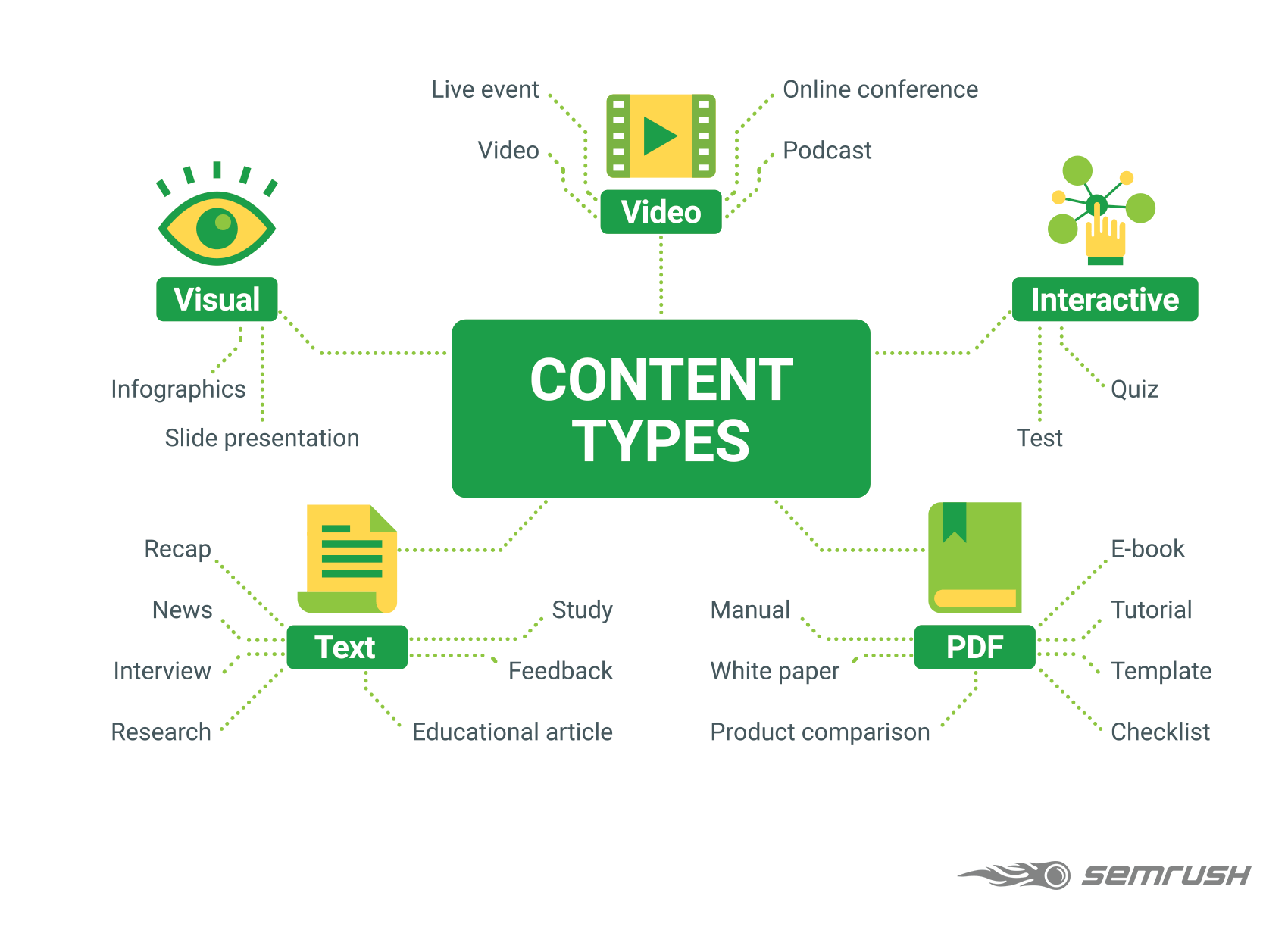
The average salary for a content writer (1-4 years of experience) is around $52,000 per year in the US. Experienced content writers (10-19 years of experience) may earn around $60,000 annually.

Indeed.com says content writers earn around $20.76 per hour. Your exact earnings will depend on your area of specialization and the kind of companies you work with regularly.
Content writing can be a highly engaging and satisfying job role for many people. It’s an exciting career with plenty of opportunities to be creative, work with new people, and develop your skills. However, it also requires significant dedication and hard work.
If you have a way with words and you know how to produce content that speaks to people, a content writing position could be ideal for you.

Alex Chris is a digital marketing consultant, author, and instructor. He has more than 18 years of practical experience with SEO and digital marketing. Alex holds an MSc Degree in eCommerce and has consulted with Fortune 500 companies in different industries. He blogs regularly about SEO and Digital marketing, and his work has been referenced by leading marketing websites. Connect with Alex on Twitter and LinkedIn .

Keep Learning
Learn how to succeed in freelance writing in a market dominated by AI writers and chatbots.
The ultimate beginner’s guide to content marketing. Learn exactly how to use content to attract and engage with an online audience.
If you’re thinking of starting a content strategy career, this is the perfect guide for you. Learn everything you need to know about content strategists, what they do, and how you can get started.
Learn how to become an SEO freelancer with this complete guide to building your skills, finding clients, and developing your new career.
November 25, 2023 at 8:21 pm
I learned a lot more about Content writing in this short article than I have learned about it in the past four years after completing my Digital Marketing Certificate course in 2019. The article is rich, lucid, and engaging to the last sentence. Wonderful work and honest help to people who need to get started on content writing as a career.

About Reliablesoft
Online training.
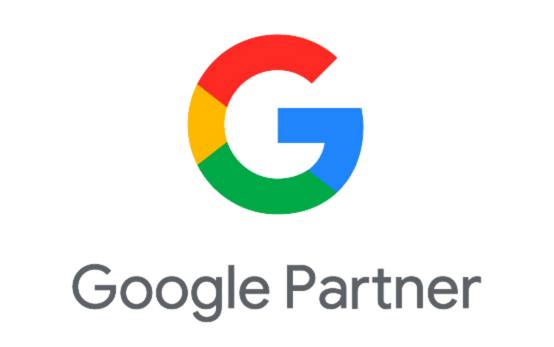
Purdue Online Writing Lab Purdue OWL® College of Liberal Arts
Welcome to the Purdue Online Writing Lab

Welcome to the Purdue OWL
This page is brought to you by the OWL at Purdue University. When printing this page, you must include the entire legal notice.
Copyright ©1995-2018 by The Writing Lab & The OWL at Purdue and Purdue University. All rights reserved. This material may not be published, reproduced, broadcast, rewritten, or redistributed without permission. Use of this site constitutes acceptance of our terms and conditions of fair use.
The Online Writing Lab at Purdue University houses writing resources and instructional material, and we provide these as a free service of the Writing Lab at Purdue. Students, members of the community, and users worldwide will find information to assist with many writing projects. Teachers and trainers may use this material for in-class and out-of-class instruction.
The Purdue On-Campus Writing Lab and Purdue Online Writing Lab assist clients in their development as writers—no matter what their skill level—with on-campus consultations, online participation, and community engagement. The Purdue Writing Lab serves the Purdue, West Lafayette, campus and coordinates with local literacy initiatives. The Purdue OWL offers global support through online reference materials and services.
A Message From the Assistant Director of Content Development
The Purdue OWL® is committed to supporting students, instructors, and writers by offering a wide range of resources that are developed and revised with them in mind. To do this, the OWL team is always exploring possibilties for a better design, allowing accessibility and user experience to guide our process. As the OWL undergoes some changes, we welcome your feedback and suggestions by email at any time.
Please don't hesitate to contact us via our contact page if you have any questions or comments.
All the best,
Social Media
Facebook twitter.
GatherContent is becoming Content Workflow by Bynder. Read More
Creative writing + content strategy: your new secret weapon?

Product Content Design Manager, Shopify
Interviewed by:
Table of contents
A Guide to Content Production Planning
How to develop a process that ensures content is high quality and delivered on time.

Founder of Lagom Strategy
Rather than being simply deemed a poetic take on content creation and communication, storytelling and its associated features have played a very functional and insightful role in content strategy .
Creative writing is often perceived as frivolous, imagination-driven entertainment as opposed to the highly-structured, highly-focused writing it is.
However, the various levels of writing structure and creative writing elements are just as relevant to the world of content strategy as they are to playwriting and screenwriting.
The value of creative writing in modern content strategy
Many of the principles and frameworks of creative writing can be adapted and utilized to plan, create, and communicate meaning via content.
For instance, user experience and inspirational design are moving up the ranks in website planning, so it only makes sense to consider the role of a good story in these and other content projects.
Website content, social media content, and marketing campaigns of all sorts can benefit in the long-term from a content strategy that’s:
- Rooted in meaning
- Relevant to the audiences they’re created for
- Acknowledges the importance of brand story and user interaction
One such long-term benefit is improved SEO performance. Marco Genaro Palma, Head of SEO at PRLab Hub , said this:

With this in mind, let’s consider some creative writing structures.
Four types of writing and story structure
There are four main types of creative writing structures , each of which can be used for more business-focused content.

1. Linear writing
The most common type, linear writing is described a series of events in chronological order. There’s an intro, an inciting incident and escalation, a climax or turning point, followed by de-escalation, and the end of the story.
The advantage of this structure is that it’s straightforward, leaving little room for readers to be confused about either the story details or the practical message it delivers.
2. Conventional writing
Conventional writing involves a more academic writing style and is, therefore, slightly more complex than a linear structure. It abides by strict rules for writing mechanics and content hierarchy /organization.
Since it’s more formal than other types, it's best for organizations with a more formal brand personality and voice, although it's still suited for some creative writing projects.
3. Integrated writing
Thalita Ferraz, Creator and Editor at Her Bones , explains:
“An integrated writing structure can be described as a review that incorporates the ‘analysis, synthesis, and evaluation of information’ on a given subject. It’s useful for the business world because it conveys a lot of information in an actionable way.”
Especially since it often involves presenting several points of view on a topic so that audiences are well-informed and can make educated decisions.
4. Metaphoric writing
Metaphoric writing uses figures of speech as symbols to explain other concepts. As long as you choose metaphors that use simple symbols to clarify complex concepts (and not the other way around), this structure can be great for grabbing and holding an audience’s attention.
However, because it’s less direct than linear writing, it’s also essential to choose symbols that your audience can readily understand. This is where having a deep understanding of your customer personas comes into play.
Three elements of creative writing: Plot, pace, and character
Of course, putting your creative writing skills to use involves more than picking one of the structures above for each piece of writing. It also involves using the elements of compelling storytelling skillfully—plot, pace, and character included.
1. Plot for mapping meaning
As the success of the award-winning Allstate Mayhem campaign proves, a narrative structure full of drama, disruption, and against-all-odds success can be effective.

However, you don’t have to go that route. Although the word “plot” has dramatic connotations, I see plot structure as examining what I want to say and when to say it. It magnifies:
- Your objectives. Do you want to inspire, educate, demand?
- Your vehicles for meaning. This could be language, images, or even CEO life stories.
- Timing. When to make what info available. How do you want to map out the customer journey—do you want them to interact with you on Twitter or respond to a CTA?
A great story typically revolves around a customer problem followed by the presentation of different solutions, topped off with the benefits of its eventual resolution. So this storytelling principle can help you develop a narrative with the audience at its center, instead of giving them the afterthought treatment. Quest Narratives are an engaging yet highly functional way of tracking multiple boxes at once.
And remember this: Gaps and loose ends are your friends. If you see one, so will your audience. A good plot can help you test the stealth of your current strategy and perhaps influence necessary change. That change may involve the strategic addition of a backstory or even subplots to make the storyline more well-rounded and not overly promotional.
2. Pace for keeping audiences engaged
Much as with plot development, pace and timing can be the difference between success and failure. Creating well-constructed content that presents meaningful milestones and keeps the audience engaged up to those points is a fine art.
Too slow or boring, and you lose that connection that moves customers from A to B to C. But too fast or keen, and you dampen your audience’s curiosity, killing the interest necessary to keep them invested til the end.
A great way to achieve the delicate balance between pace and timing is to create an Experience Map. A combination of a UX strategy and editorial calendar, this Experience Map outlines the role content plays in these experiences, setting mini-goals in the journeys laid at the feet of the user. Some goals could include:
- Creating back and forth dialogues that spark questions, guide curiosity, and offer reassurance.
- Scripting content that meets business and customer aims to create predictable engagement opportunities.
- Developing relationships via digital and real-world connections.
3. Character for creating a brand hallmark
The best brand stories are the ones that integrate history, values, and audience. Characters are the perfect way of embodying all of the above without making business objectives too obvious or impersonal. Plus, characters can transcend mediums and have the ability to become bigger than the brand itself, making them even more versatile and valuable.
Look at Old Spice. I bet even as you read this, you have that advertisement in your head.

Yep, the Old Spice ‘The man your man could smell like’ advert showcased their new poster boy. Targeting women, this new main character went viral and became as synonymous with the brand as its classic white bottle is.
Shareability and social media-friendliness were non-existent factors 30 years ago, but now these probably top the list. Character development is worth its weight in gold when you end up with one that targets your market, holds attention, and encompasses brand values.
And characters don’t even have to be people or solo representatives. Your company can become a character in itself. Some brands instill their content with such honesty and sincerity that their brand or product is sold merely on its history.
Jack Daniels and denim masters Hiut Denim , for example, characterize their origins and the people that represent their unique ethos. Your organization can do the same by:
- Condensing your ethos into a handful of headlines or brand statements. Do you have a USP or definitive identity?
- Gauging your tone. How should you speak, and what language will you use?
- Defining characters. Are there people, symbols, or points of origin that represent the above?
Make stories last
Learning to incorporate creative writing structures and elements such as plot, pace, and characterization is a commitment. So don't be discouraged if your first draft or first time surfaces some challenges.
Especially if you have multiple team members involved in the writing process, it can be helpful to explain the role of storytelling in your content briefs and set storytelling guidelines. (You can, of course, tweak those recommendations as you learn more about what forms of creative writing get the best response from your audience.)
With GatherContent, you can include such briefs and guidelines in your custom content templates so that they’re always at arms reach for writers and reviewers.

As you create those guidelines, remember that the best brand stories result from consistency, original delivery, and honesty. They’re shareable, concentrated, flexible, and open to very few varied interpretations.
Although still very much the emotional heart of a brand, stories need to perform, stand the test of time, and the test of medium, too. So, even as you use the tricks and tools of the creative writing trade to preserve the human, engaging aspect of the stories you tell:
- Keep the practical, business-driven aims of your company clear in mind
- Prioritize the creation of structured content that can be used for any interface
- Stick to writing principles to give your content the best chance of meeting your goals
If you do this, your organization will enjoy the benefits of effective, memorable storytelling.
Content Creation: The Essential Guide
Practical advice to help you create effective content for your audience and your business..

About the author
Nic is a product content strategist at Shopify who collaborates with designers, developers, researchers, and product managers to design and build Shopify's user interfaces. Previously, Nic was a freelance copywriter based in Glasgow; she believes that no matter what the medium, brief or platform, using the perfect words in the best possible way can create a story, a natural communication between people, their ideas and the rest of the world. You can follow her on Twitter .
Related posts you might like
How to write great web copy people actually want to read
December 17, 2021, 7 minute read.

The art of writing microcopy
August 9, 2016.

Christine Cawthorne
Content Strategist and Founder, Crocstar.
9 rules of web writing that really matter
August 1, 2017, 6 minute read.

Dan Brotzel
Co-founder and content director, Sticky Content
Platform FEATURES
- Content Hub
- Content Project Management
- Content Planning
- Content Templates
- Content Style Guides
- Content Management
- Content Workflow
- Content Calendar
- Content Creation & Collaboration
- Beta Features
- What's New
- Productivity
- Integrations
- What is ContentOps?
- Resources and Events
- Our Partners
- Customer Advisory Board
- Join our team
- Security & Backups
- Terms of Service Data Processing Agreement
- Terms of Website Use
- Global Privacy Policy
- Cookie Policy
- Help Centre
- API Documentation
Sign up to our weekly newsletter

Creative Writing Vs Content Writing: 6 Differences You Should Know
Table of contents
Often used interchangeably, content writing and creative writing have similarities but are different. A non-writer may not recognize the differences between the two styles of writing. However, when you approach a professional writer, they will know precisely the nuances that make creative and content writing different.
If anyone is considering stepping into the world of writing, read on. The debate about creative writing vs content writing is ongoing, and you need to know the basics before you choose which kind of writing is better for you.
What is creative writing?
Creative writing is the art of creating stories that communicate ideas. It can involve any form of expression, including poetry, fiction, and non-fiction. Creative writing can help you explore your thoughts and feelings, connect with others, and share your unique perspective. It can also allow you to create something new or improve upon something old. In short, it is the art of engaging in creative thinking.
The following are some critical characteristics of creative writing:
1. It is an individual process, unlike scientific or journalistic research. There is no one defined way to write creatively; every writer has their unique style and approach.
2. Creative writers often explore unusual topics and ideas, creating relatively unstructured texts compared to traditional forms such as essays or reports. This flexibility allows them the creative freedom to communicate their ideas in an innovative way that cannot be done with a more conventional format.
3. Creative writers often use metaphors and other literary devices to convey complex ideas. Thus, they can communicate their ideas in a way that is easily understood and enjoyable to read.
4. The creative writing process uses creative imagination, which often leads to surprising and unexpected results. This element of surprise can add interest and excitement to the reader's experience, leading them to want to read more.
The key elements of creative writing are imagination, memory, and reflection. These three factors work together to help writers develop stories and characters that are interesting, entertaining, and suspenseful. Writers also use these same tools to explore ideas and express their views on life, making creative writing an often personal process.
Is creative writing a part of content writing?
Creative writing focuses on creating new ideas, whereas content writing focuses on distributing and promoting existing ideas. There is a clear-cut difference between creative writing and content writing. But that does not mean that creative writing is not a part of content writing.
Content writers and copywriters need to be able to think creatively to come up with interesting, engaging content that will keep readers interested. They must be able to write in various styles, including creative writing, so readers will find their writing enjoyable and informative. Thus, creativity is an integral element of the field of content writing.
What are the 5 types of creative writing?
Steeped in creativity and imagination, creative writing tends to be associated with many types and genres. Creative writing works can be classified into fiction or non-fiction.
Here is a list of five types of creative writing commonly known to all, followed by examples for each type of writing.

1. Narrative storytelling
Narrative storytelling is an approach to creative writing that emphasizes telling a story through events, characters, and settings. The term "narrative storytelling" has been used differently over the years. Generally, it refers to writing that employs a narrative structure—a sequence of events leading from the beginning to the end and character developments—to tell a story.
Example of narrative storytelling

Lamb to the Slaughter is a story penned by Roald Dahl in the narrative storytelling format. The story follows the protagonist, Mary, a housewife known for her loving nature. But one evening, as she welcomes her husband home, things take a different turn, and readers are enticed by the twist in the storytelling filled with thrill and horror. Do read the story to know more about what happened to Mary.
Poetry is a form of creative writing that uses metrical and rhyming patterns to create images or feelings. Poetry can be any length but typically remains shorter than standard prose. Poets use different techniques and rhythmical devices to evoke emotion in their readers, including metaphor, alliteration, imagery, and abecedarian rhyme.
Example of poetry

The Red Wheelbarrow is an eight-line poem by William Carlos Williams reflecting the importance of simple things in life that are often taken for granted. It artistically tries to capture the red wheelbarrow, the raindrops, and the white chicks, all essential components of a farmyard/agricultural activity.
Is the poem talking about the reliability of the wheelbarrow for farm activities? Or is it hinting at the chickens' significance? It depends on how you interpret the poem.
3. Screenwriting
Screenwriting is one of the forms of creative writing that typically involves the development of a story, film, or television script. As with all forms of writing, screenwriting requires an acute sense of observation and storytelling ability.
Example of screenwriting

Eric Roth's screenplay for Forrest Gump is the best example of creative writing. How he has adapted the novel creatively to give birth to a movie that has won millions of hearts over the years displays the true power of artistic expression.
Essays are formal pieces of creative writing that typically examine a subject in depth. They can be informative or entertaining, but they usually aim to provide readers with new information or insights.
Example of essay

Here is a snippet from an essay written by a student on her very first local diner visit. It is creatively and descriptively written to ensure that readers are engaged, and their emotions get invoked. The description of the diner in the essay allows the reader to visualize it without visiting it.
5. Memoirs/Bibliographies
Memoirs or bibliographies, as pieces of creative writing, are personal experiences that someone has written down; they often have a unique perspective and can tell stories in ways other types of writing cannot. This makes memoirs an interesting and effective means of conveying information or ideas.
Example of Memoir/Bibliography

Maya Angelou's memoir, I Know Why The Caged Bird Sings , is an excellent example of a creatively written memoir. It illustrates some fantastic life lessons. It follows the life story of Angelou to show how literature and strong character can help overcome trauma and racism.
The above types and examples of creative writing must have clarified why there is a difference between creative writing and content writing. Now let us move on to content writing and its examples to understand the differences better.
What is content writing?
Content writing is creating high-quality, engaging content for a website, social media, or blog. The content writing process involves creating written material that informs and engages the target audience. Content writers are involved in developing original pieces, rewriting existing content, or sourcing and curating information from other sources.
Ideally, the content created would be shareable and influential enough to attract readers (and potential customers) regularly and consistently. The primary purpose of content writing is digital marketing and branding.
Content writers target search engine optimization to create content that boosts business sales and encourages networking between individuals.
Some common skills required for successful content writing are:
- Understanding grammar and syntax
- Researching topics well enough to provide unique insights and thoughtful conclusions
- Using positive reinforcement language when promoting the brand or product
- Observing editorial requirements while maintaining user engagement potential
- Ability to work with various writing platforms, content management systems, social media, or traditional word processors.
The process of content writing works in the following manner:
1. Planning: Outlining topics and ideas for a piece, researching for information, and determining the audience.
2. Writing: Using effective grammar and vocabulary to create coherent, readable, and quality content.
3. Editing & Proofreading: Checking for mistakes before publishing
4. Promotion: Developing marketing strategies to promote your content
Examples of content writing
Content writing skills and strategy are essential to creating content for social media posts, blogs, ebooks, websites, etc. Below are a few real-life examples of popular types of content writing pieces found on the internet.
1. Blogpost example
.webp)
Zoom's blog post is an ideal example of content writing because it showcases its features to specific audience. It offers information to readers about the features and tips for using Zoom for office parties and gatherings during the holiday season.
2. Social media post example

The brand-Incogmeato has leveraged Twitter's polling feature in this tweet. It has a graphic added to it to grab attention. The social media content is witty, encouraging dialogue and discussion among the audience.
3. Ebook example

Content Marketing Institute's ‘Content Marketing Survival Guide’ is a great example of content writing. It is informative and provides data related to around 12 social media sites. It also contains tips and tricks to create an effective social media marketing and content strategy.
4. Website content example

The screenshot is from Cupcakes and Cashmere, a website associated with lifestyle and fashion. Emily Schuman is the founder of this website. The content on this particular webpage provides a sneak peek into the founder's life in the most exciting yet simplistic manner.
Creative writing vs content writing: Key differences
Now that you know the basics of creative and content writing, it is time to move on to the key differences between the two.
1. Different purposes
One of the primary differences between creative writing and content writing is related to the specific purpose of writing. Creative writing is used to explore the inner thoughts, emotions, and experiences of the author. Conversely, content writing communicates ideas or information that can help people achieve their goals.
2. Different styles of writing
Another difference revealed by the debate on creative writing vs content writing is that both have different writing styles. Creative writing tends to be more poetic and lyrical, while content writing is more straightforward and persuasive.
3. Tone of voice
There is no definitive tone of voice for creative writing, as the style and approach to writing will vary depending on the author's personal preferences. However, the tone of a creative writing piece can convey action or excitement, rely on vivid imagery, employ intriguing metaphors, and inject humor where appropriate.
In contrast, in content writing, the tone of voice should be respectful and objective. While it's important to evoke the reader's emotions compellingly, the content is written impartially, ensuring readers can share it with a wider audience.
4. Fiction and non-fiction
Creative writing is typically associated with fiction, but sometimes some creative writers produce non-fiction works as well. Content writing, in comparison, is mostly non-fiction, and content writers only get the scope to write fiction if there is a marketing or brand requirement.
5. Word usage
You can use the same word in creative writing multiple times, even in one line. You have the authority and freedom to express yourself however you want. But when it comes to content writing, using a variety of words is especially important to grab readers’ attention. You must ensure that keywords are used but not excessively. Synonymizing is an essential element of content writing.
6. Process of writing
Creative writing resembles an art form. This means that creative writers typically take their time to produce and organize their work. The creative writing process allows the writer to devise a writing style and convey their ideas in whatever form they want.
Content writing must be done within a specific set of parameters decided by the client. The content cannot take any shape desired by the writer and must present facts and information as the client dictates. The writer also has to be mindful of SEO guidelines.
Similarities between creative and content writing
Although the points of difference between creative writing and content writing are quite clear now, understanding the similarities between the two forms is also essential. We will mention the similarities here so that your knowledge regarding the creative writing vs content writing debate is complete.
Both writing styles require the writer to come up with ideas, develop them into sentences, and then string those sentences together into cohesive and comprehensive pieces. They also need to be able to think critically about their work and make sure that it is readable to a large audience.
Whether you publish content pieces or promote creative writing, your writing must be of high quality to be successful. Your writing must also be error-free and formatted correctly if you want people to trust your authority and credibility.
Creative writing vs. content writing: Conclusion
We have successfully demonstrated that there is a difference between creative writing and content writing. While one has to be used creatively, the other has to be deployed strategically. Both styles have benefits that can be leveraged to write powerful and effective content.
Nowadays, content writers are using creative techniques to produce better content. On the other hand, creative writers are optimizing their content pieces and making them SEO-friendly to gain traction.
Also, content writing differs from copywriting. Read this blog, ‘ Copywriting vs Content Writing: What are the Differences & Similarities? ’ to know more.
Can AI writing help you in writing creative content?
Yes, AI writing can help you in developing creative content. It can recommend topics and angles to explore, scan through existing content for inspiration, and even offer corrections or refinements to your writing style.
Do you wish to use AI to write creative content? Use Scalenut. This AI-powered SEO and content marketing platform can help your website rank scale up with free SEO tools that ensure your creativity never gets blocked.
Scalenut is among the 14 best AI writing assistants to help you scale your content marketing . So what are you waiting for? Sign up now.

ABout the AUTHOR
Priya Jamba is a Content Marketer at Scalenut. She loves marketing technologies and believes that with the right combination of tools and creativity, every organization can build sustainable brands. She is on a mission to help marketing teams across the globe produce tangible results from their marketing campaigns. Currently, she is working along with the Product team to enhance the AI content quality through prompt engineering.
Plan, write and optimize long form content with AI Tools
Try our AI Tools to create SEO content faster and better

Related Posts

Is Singular Keyword Optimization Outdated in Modern SEO?
Explore the relevance of singular keyword optimization in modern SEO. Discover the impact of your digital strategy on our blog.

Best Humanize AI Text Tools To Humanize Your Content
Looking to humanize your AI text? Check out the best humanize ai text to enhance user engagement and create more personalized content on our blog.

Google calls to fact-check AI content for credibility
Enhance the credibility of AI content with fact check AI. Stay informed on the latest developments in fact-checking technology.
See how we can help you create SEO content faster and better.

| You might be using an unsupported or outdated browser. To get the best possible experience please use the latest version of Chrome, Firefox, Safari, or Microsoft Edge to view this website. |
Earning A Master’s In Creative Writing: What To Know

Updated: Nov 1, 2023, 1:51pm

Do you want to create written work that ignites a reader’s imagination and even changes their worldview? With a master’s in creative writing, you can develop strong storytelling and character development skills, equipping you to achieve your writing goals.
If you’re ready to strengthen your writing chops and you enjoy writing original works to inspire others, tell interesting stories and share valuable information, earning a master’s in creative writing may be the next step on your career journey.
The skills learned in a creative writing master’s program qualify you to write your own literary works, teach others creative writing principles or pursue various other careers.
This article explores master’s degrees in creative writing, including common courses and concentrations, admission requirements and careers that use creative writing skills. Read on to learn more about earning a master’s degree in creative writing.
Why You Can Trust Forbes Advisor Education
Forbes Advisor’s education editors are committed to producing unbiased rankings and informative articles covering online colleges, tech bootcamps and career paths. Our ranking methodologies use data from the National Center for Education Statistics , education providers, and reputable educational and professional organizations. An advisory board of educators and other subject matter experts reviews and verifies our content to bring you trustworthy, up-to-date information. Advertisers do not influence our rankings or editorial content.
- 6,290 accredited, nonprofit colleges and universities analyzed nationwide
- 52 reputable tech bootcamp providers evaluated for our rankings
- All content is fact-checked and updated on an annual basis
- Rankings undergo five rounds of fact-checking
- Only 7.12% of all colleges, universities and bootcamp providers we consider are awarded
What Is a Master’s in Creative Writing?
A master’s in creative writing is an advanced degree that helps you develop the skills to write your own novel, poetry, screenplay or nonfiction book. This degree can also prepare you for a career in business, publishing, education, marketing or communications.
In a creative writing master’s degree program, you can expect to analyze literature, explore historical contexts of literary works, master techniques for revising and editing, engage in class workshops and peer critiques, and write your own original work.
Creative writing master’s programs usually require a thesis project, which should be well-written, polished and ready to publish. Typical examples of thesis projects include poetry collections, memoirs, essay collections, short story collections and novels.
A master’s in creative writing typically requires about 36 credits and takes two years to complete. Credit requirements and timelines vary by program, so you may be able to finish your degree quicker.
Specializations for a Master’s in Creative Writing
Below are a few common concentrations for creative writing master’s programs. These vary by school, so your program’s offerings may look different.
This concentration helps you develop fiction writing skills, such as plot development, character creation and world-building. A fiction concentration is a good option if you plan to write short stories, novels or other types of fiction.
A nonfiction concentration focuses on the mechanics of writing nonfiction narratives. If you plan to write memoirs, travel pieces, magazine articles, technical documents or nonfiction books, this concentration may suit you.
Explore the imagery, tone, rhythm and structure of poetry with a poetry concentration. With this concentration, you can expect to develop your poetry writing skills and learn to curate poetry for journals and magazines.
Screenwriting
Screenwriting is an excellent concentration to explore if you enjoy creating characters and telling stories to make them come alive for television or film. This specialization covers how to write shorts, episodic serials, documentaries and feature-length film scripts.
Admission Requirements for a Master’s in Creative Writing
Below are some typical admission requirements for master’s in creative writing degree programs. These requirements vary, so check with your program to ensure you’ve met the appropriate requirements.
- Application for admission
- Bachelor’s degree from an accredited institution
- Transcripts from previous education
- Writing samples
- Letters of recommendation
- Personal statement or essay
Common Courses in a Master’s in Creative Writing
Story and concept.
This course focuses on conceptualizing, planning and developing stories on a structural level. Learners study how to generate ideas, develop interesting plots, create outlines, draft plot arcs, engage in world-building and create well-rounded characters who move their stories forward.
Graduate Studies in English Literature
Understanding literature is essential to building a career in creative writing. This course prepares you to teach, study literature or write professionally. Expect to discuss topics such as phonology, semantics, dialects, syntax and the history of the English language.
Workshop in Creative Nonfiction
You’ll study classic and contemporary creative nonfiction in this course. Workshops in creative nonfiction explore how different genres have emerged throughout history and how previous works influence new works. In some programs, this course focuses on a specific theme.
Foundations in Fiction
In this course, you’ll explore how the novel has developed throughout literary history and how the short story emerged as an art form. Coursework includes reading classic and contemporary works, writing response essays and crafting critical analyses.
MA in Creative Writing vs. MFA in Creative Writing: What’s the Difference?
While the degrees are similar, a master of arts in creative writing is different from a master of fine arts in creative writing. An MA in creative writing teaches creative writing competencies, building analytical skills through studying literature, literary theory and related topics. This lets you explore storytelling along with a more profound knowledge of literature and literary theory.
If you want your education to take a more academic perspective so you can build a career in one of many fields related to writing, an MA in creative writing may be right for you.
An MFA prepares you to work as a professional writer or novelist. MFA students graduate with a completed manuscript that is ready for publishing. Coursework highlights subjects related to the business of writing, such as digital publishing, the importance of building a platform on social media , marketing, freelancing and teaching. An MA in creative writing also takes less time and requires fewer credits than an MFA.
If you want to understand the business of writing and work as a professional author or novelist, earning an MFA in creative writing might be your best option.
What Can You Do With a Master’s in Creative Writing?
Below are several careers you can pursue with a master’s in creative writing. We sourced salary data from the U.S. Bureau of Labor Statistics.
Postsecondary Creative Writing Teacher
Median Annual Salary: $74,280 Minimum Required Education: Ph.D. or another doctoral degree; master’s degree may be accepted at some schools and community colleges Job Overview: Postsecondary teachers, also known as professors or faculty, teach students at the college level. They plan lessons, advise students, serve on committees, conduct research, publish original research, supervise graduate teaching assistants, apply for grants for their research and teach subjects in their areas of expertise.
Median Annual Salary: $73,080 Minimum Required Education: Bachelor’s degree in English or a related field Job Overview: Editors plan, revise and edit written materials for publication. They work for newspapers, magazines, book publishers, advertising agencies, media networks, and motion picture and video production companies. Editors work closely with writers to ensure their written work is accurate, grammatically correct and written in the appropriate style for the medium.
Median Annual Salary: $55,960 Minimum Required Education: Bachelor’s degree in journalism or a related field Job Overview: Journalists research and write stories about local, regional, national and global current events and other newsworthy subjects. Journalists need strong interviewing, editing, analytical and writing skills. Some journalists specialize in a subject, such as sports or politics, and some are generalists. They work for news organizations, magazines and online publications, and some work as freelancers.
Writer or Author
Median Annual Salary: $73,150 Minimum Required Education: None; bachelor’s degree in creative writing or a related field sometimes preferred Job Overview: Writers and authors write fiction or nonfiction content for magazines, plays, blogs, books, television scripts and other forms of media. Novelists, biographers, copywriters, screenwriters and playwrights all fall into this job classification. Writers may work for advertising agencies, news platforms, book publishers and other organizations; some work as freelancers.
Technical Writer
Median Annual Salary: $79,960 Minimum Required Education: Bachelor’s degree Job Overview: Technical writers craft technical documents, such as training manuals and how-to guides. They are adept at simplifying technical information so lay people can easily understand it. Technical writers may work with technical staff, graphic designers, computer support specialists and software developers to create user-friendly finished pieces.
Frequently Asked Questions (FAQs) About a Master's in Creative Writing
Is a master’s in creative writing useful.
If your goal is to launch a career as a writer, then yes, a master’s in creative writing is useful. An MA in creative writing is a versatile degree that prepares you for various jobs requiring excellent writing skills.
Is an MFA better than an MA for creative writing?
One is not better than the other; you should choose the one that best equips you for the career you want. An MFA prepares you to build a career as a professional writer or novelist. An MA prepares you for various jobs demanding high-level writing skills.
What kind of jobs can you get with a creative writing degree?
A creative writing degree prepares you for many types of writing jobs. It helps you build your skills and gain expertise to work as an editor, writer, author, technical writer or journalist. This degree is also essential if you plan to teach writing classes at the college level.
- Best Master's In English Online Programs
- Best Journalism Schools Online
- Best Master's In Math Education Online
- Best Online Master’s In History Degree
- Best Online Master’s In Interior Design
- Best Online Master’s In Journalism Programs
- How To Become A Journalist
- How To Become A News Anchor
- What Can You Do With A History Degree?
- What Can You Do With A Journalism Degree?
- Writing Careers: 6 Jobs To Check Out
- Earning A Creative Writing Degree
- Earning An English Bachelor’s Degree
- Earning A Bachelor’s Degree In History
- Bachelor’s Degrees In Journalism
- Earning A Bachelor’s Degree In Music
- 9 Types Of Music Degrees, Plus Concentration Options

Where Can You Complete An Online Art Therapy Master’s Program In 2024?
Where To Earn An Online Photography Degree In 2024
Best Master’s In Math Education Online Of 2024
Best Online Master’s In Music Education Of 2024
Best Online Master’s In History Degrees Of 2024

Best Online Master’s In Journalism Programs Of 2024
Sheryl Grey is a freelance writer who specializes in creating content related to education, aging and senior living, and real estate. She is also a copywriter who helps businesses grow through expert website copywriting, branding and content creation. Sheryl holds a Bachelor of Arts in Mass Communications from Indiana University South Bend, and she received her teacher certification training through Bethel University’s Transition to Teaching program.
Articles on Creative writing
Displaying 1 - 20 of 46 articles.

UK’s creative industries bring in more revenue than cars, oil and gas – so why is arts education facing cuts?
Adam Behr , Newcastle University

An ode to the social realism of ‘boring’ lyrics – from The Kinks to The Streets
Glenn Fosbraey , University of Winchester

How to write a love song – three tips for beginners from a songwriting expert

‘ Cli-fi ’ might not save the world, but writing it could help with your eco-anxiety
Rachel Hennessy , The University of Melbourne ; Alex Cothren , Flinders University , and Amy T Matthews , Flinders University

I research the therapeutic qualities of writing about art – here are three steps for trying it yourself
Patrick Wright , The Open University

Creative writing can help improve one’s health: a South African study shows how
Dawn Garisch , University of Cape Town and Steve Reid , University of Cape Town

Boxing empowered me to express my trauma – now, I help other abuse survivors do the same, combining it with creative writing
Donna Lyon , The University of Melbourne

How a poet and professor promotes racial understanding with lessons from history
Quraysh Ali Lansana , Oklahoma State University

How to understand your grief through writing
Catherine Cole , Liverpool John Moores University

Write what you know: the COVID experience is a rich resource for year 12 English exams
Janet Dutton , Macquarie University

5 ways to teach the link between grammar and imagination for better creative writing
Brett Healey , Curtin University

Writing can improve mental health – here’s how
Christina Thatcher , Cardiff Metropolitan University

In an AI world we need to teach students how to work with robot writers
Lucinda McKnight , Deakin University

To succeed in an AI world, students must learn the human traits of writing

‘Lit therapy’ in the classroom: writing about trauma can be valuable, if done right
Yannick Thoraval , RMIT University

Too many adjectives, not enough ideas: how NAPLAN forces us to teach bad writing

What my students taught me about reading: old books hold new insights for the digital generation
Kate Flaherty , Australian National University

Life sentences – what creative writing by prisoners tells us about the inside
Dr Michael X. Savvas , Flinders University
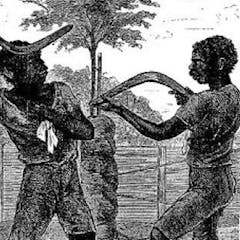
Frozen in time, the casts of Indigenous Australians who performed in ‘human zoos’ are chilling
Katherine Johnson , University of Tasmania

‘I’m in another world’: writing without rules lets kids find their voice, just like professional authors
Related topics.
- Australian literature
Top contributors
Visiting Fellow, Centre for Cultural and Creative Research, University of Canberra, University of Canberra
Adjunct assistant professor, University of New England
Associate professor, Deakin University
Associate Professor in Media, University of Notre Dame Australia
PhD Student, School of Education, Curtin University
Executive Dean (interim) Faculty of Arts and Design, University of Canberra
Lecturer in Creative Writing, University of Southern Queensland
Senior Lecturer in Creative Writing, University of Stirling
Associate Dean of Humanities and Social Sciences, University of Winchester
Dean of Research (Creative), University of South Australia
Honorary Associate in Creative Writing, The Open University
Lecturer of English, University of Liverpool
Professor of Creative Arts, Griffith University
Honorary Professor, The University of Queensland
Associate Professor. Associate Director of the Creative Lab., Queensland University of Technology
- X (Twitter)
- Unfollow topic Follow topic
- Trending Now
- Foundational Courses
- Data Science
- Practice Problem
- Machine Learning
- System Design
- DevOps Tutorial
- Content Writing 101 | A Beginner's Guide for Content Writer
- How Content Writing at GeeksforGeeks works?
- Connect through Content - Writing Event for HR Professionals
- How To Make a Career as a Content Writer ?
- What is Content Writing? 10 Best Tips for Great Content Writing
- Top 10 Free AI Writing Tools for Content Creators
- 100 Days of UI/UX: A Complete Guide For Beginners
- Getting Started with Web Design: A Beginner's Guide
- 5 Content Writing Tools to Improve your Content Writing Skills
- 10 Best Web Development Project Ideas For Beginners in 2024
- Geeks Premier League 2023 - Biggest Content Writing Event By GeeksforGeeks
- Write From Home Challenge - Technical Content Writing Event By GeeksforGeeks
- Internshala clubs Interview Experience For Content Writing
- The Ultimate Beginner's Guide For DSA
- 10 Best Free Chrome Extensions For Content Writers [2024]
- 10 Best Practices For Writing Documentation
- 10 Best ChatGPT Prompts for Novel and Fiction Book Writing
- 10 Best AI Tools for Assignment Writing in 2024
- Top 12 Spring Project Ideas For Beginners
- 10 ChatGPT Prompts for Content Marketers
Content Writing 101 | A Beginner’s Guide for Content Writer
Information flows very easily and the attention spans are getting really short in this revolutionary digital world which makes the ability to create content that grabs attention very valuable. But what is content writing and how can you master this skill to engage your audience and achieve the outcome that you desire? Here, we will discuss all the key aspects of content writing including types, skills required, and even career opportunities. So, let’s quickly get into the topic.
What is Content Writing and Who is a Content Writer?
Content writing is a skill that requires creating written information that is informative, interesting, and helpful to specific audiences in a clear, concise, and engaging manner. Blog posts, articles, website copy, social media posts, and email newsletters are some of its examples.
The one who possesses the above skill is known as a content writer. A content writer is a professional who creates written material for a variety of purposes online. They’re like the storytellers, educators, and brand voices of the digital world.
Not only writing but they are involved in multiple things like
- Proofreading and Editing the content piece,
- Analyzing the performance of their published content,
- Understanding the client’s requirements, managing the deadlines, and
- Taking care of SEO to rank their content.
Table of Content
Skills Required for Content Writing
Types of content.
- Types of Content Writers
- Creating Ideal Content
- How to be a Content Writer?
Final Thoughts
There are many types of content writers but all content writers need to inculcate the following basic skills to be excellent at their job.
1. Adaptability
The content writing world is constantly evolving, with new trends, platforms, and audience emerging preferences. Content writers should have the ability to adjust their style, voice, and approach to different formats, audiences, and platforms.
2. Grammar and Vocabulary
A solid grasp of grammar and vocabulary is non-negotiable because an understanding of sentence structure, tenses, punctuation, vocabulary, and other grammatical elements ensures that your writing is polished and professional.
3. Research Skills
Research is a content writer’s best friend as it enables a writer to gather information from various sources and present it in an organized and coherent manner adding depth and credibility to the writing. The writer should have an eye for credible sources while doing research. That makes their research skills stand out from the rest.
4. Creative Writing Skills
The foundation of content writing lies in the ability to express ideas clearly and engagingly. A good content writer has expertise in choosing the right words, constructing sentences, and telling stories that capture the reader’s attention.
5. Understanding of SEO (Search Engine Optimization)
In the digital age, knowing the basics of SEO is crucial for a content writer to incorporate relevant keywords, understand meta descriptions, and structure the content in a way that search engines can easily recognize and index.
Now that you have an overview of skills, it is the best time to know the types of content. Yes, there are types because what you read everywhere is not in the same tone or conveys the same message, right? So let’s read about them.
There are several pieces of content that writers have to prepare. Below we have listed some of the top types of content that you should be aware of while embarking on a journey of becoming a successful content writer.
1. Copywriting
Copywriting refers to the art of writing persuasive and compelling content to promote a product, service, or brand. To increase conversions and sales, it is necessary to create attractive headlines, appealing sales content, and effective calls to action.
2. 10x Content
10x content is a term invented by Rand Fishkin that refers to exceptionally high-quality content that provides ten times the value compared to other similar pieces. It goes beyond just providing information and aims to be comprehensive, unique, visually appealing, and highly shareable.
3. Listicles
Listicles are articles presented in a list format, typically featuring a catchy title like “Top 10 Tips” or “5 Ways to Improve.” They are popular because they concisely provide easily digestible information. Listicles often attract readers’ attention due to their organized structure and promise of quick takeaways.
4. Lead Magnets
Lead magnets as the name itself suggests, a piece of content that acts as a magnet for leads are valuable pieces of content that businesses offer to their audience in exchange for their contact information and are designed to attract potential customers and generate leads such as e-books, whitepapers, or webinars.
5. Evergreen Content
Evergreen content refers to timeless and enduring pieces of content that remain relevant and valuable over a long period and are not tied to specific trends or events, making it consistently useful for readers. Comprehensive guides, tutorials, or FAQs are good examples that continue to generate traffic.
6. Social Media
Social media content involves creating and sharing various forms of media, such as text, images, videos, or links, on social networking platforms. It aims to engage and interact with the target audience, build brand awareness, drive website traffic, and foster customer relationships.
After you have gained information on the types of content, we have prepared a list of types of content writers that top-notch companies hire today.
Types of Content Writers that Companies Hire
1. technical writer.
A writer who communicates complex technical information in a clear, concise, and user-friendly manner, often for specialized audiences is called a technical writers. They write
- User manuals
- Online help systems
- Training materials
- Technical specifications
- White papers and research reports
2. Ghostwriter
A writer who produces content for someone else who then takes credit as the author is considered a ghostwriter. Basically, you get paid for your write-ups but cannot take the credits. Ghostwriters are usually responsible for writing
- Books (fiction and nonfiction)
- Articles and blog posts
- Speeches and presentations
- Memoirs and biographies
- Social media content
3. Copywriter
A writer who creates persuasive text to promote products, services, or ideas, often to drive sales or engagement are the Copywriters. They create
- Advertisements (print, digital, social media)
- Website content
- Email marketing campaigns
- Product descriptions
- Sales letters and brochures
4. Brand Journalist
Brand journalists are those who create content that aligns with a company’s brand identity and values, often with a storytelling approach. They write:
- Brand stories and feature articles
- Case studies and customer testimonials
- Thought leadership pieces
- Blog posts and social media content
- Internal communications materials
5. Social Media Writer
These types of writers create engaging content specifically for social media platforms, tailored to each platform’s unique format and audience. They are offered to write the following content.
- Social media posts (text, images, videos)
- Engaging captions and text-based content
- Community management responses
- Social media ad copy
6. Email Writer
These writers craft effective emails that capture attention, drive action, and build relationships with subscribers. They write:
- Newsletters and email campaigns
- Welcome emails and onboarding sequences
- Promotional emails and sales offers
- Transactional emails (order confirmations, receipts)
- Customer service emails
7. Scriptwriter
A writer who creates scripts for various forms of media, including film, television, radio, podcasts, and video games. They write:
- Screenplays for movies and TV shows
- Radio and podcast scripts
- Video game narratives and dialogue
- Corporate videos and training scripts
- Commercials and advertising scripts
Best Practices for Creating Ideal Content
Now, here is your guide to writing compelling content along with the essential tools and strategies that will help you along.
1. Develop a Reader’s Persona
Imagine your ideal reader and understand their demographics, interests, needs, and challenges to understand your audience better and tailor your content to their specific preferences. This ensures that it connects with them, fostering a deeper connection.
Tools: HubSpot’s Make My Persona, Xtensio, UserForge
2. Craft an Effective Outline
A well-organized outline is like a roadmap ensuring your readers navigate smoothly through your content. That’s why, you should structure your content logically for clarity and flow and develop a strong outline that guides your writing and keeps you on track. This increases user interaction and enhances the readability of your content.
Tools: MindMeister, Coggle, Evernote
3. Include relevant Facts & Statistics
Back up your claims with accurate and reliable information from trustworthy sources to add credibility and authority to your writing. The incorporation of relevant facts and statistics strengthens your argument and builds trust with your audience.
Tools: Google Scholar, Statista, Pew Research Center
4. Let Visuals Tell Your Story
Visual elements are not just decoration but they are powerful storytellers that enrich your content. So integrate relevant and high-quality images, videos, and infographics to enhance your message, capture attention, and make your content visually impactful.
Tools: Canva, Adobe Creative Cloud, Unsplash
5. Clear Call to Action, Without Being Salesy
Guide your readers towards taking the desired action after reading your content. However, avoid sounding pushy or overly promotional. A clear call to action is like extending an invitation rather than making a sales pitch, encouraging a genuine response from your audience.
Tools: CoSchedule Headline Analyzer, Hemingway Editor, Grammarly
6. Make SEO-friendly Content
SEO refers to Search Engine Optimization, which means creating and improving content using techniques to increase its visibility on search engines. If you want to learn more about SEO, read the article: Search Engine Optimization | SEO: A Complete Tutorial . Remember, mastering SEO is like giving your content a passport to be discovered in the vast digital landscape.
Tools: Ahrefs, SEMrush, Google Search Console
7. Proofread, Edit, and Edit Again
Before publishing your content, carefully proofread and edit it to ensure clarity, conciseness, and error-free writing because the final editing stage is like adding the finishing touches to your masterpiece.
Tools: Grammarly, ProWritingAid, Hemingway Editor
What Courses or Qualifications are required to be a Content Writer?
While there’s no one-size-fits-all path to content writing. However, aspiring writers can explore options like renowned online courses on platforms like Udemy or Coursera . These online courses help you learn the basics of writing and enable you to kick-start your career.
In case, you are inclined towards taking the official degree road, bachelor programs can help you with that. You can opt for a Bachelor of Journalism and Mass Communication or B.A. honors in English/literature. These programs help you get a grasp of the language and gain insights into the plethora of writing career options available in the market.
By that time, here’s a quick guide on how you can become a demanding content writer easily.
- Identify your niche: Identify a specific industry or field where your knowledge and passion intersect. This will let you establish yourself as a valued authority.
- Read digital content: Continuously consuming high-quality online content across various platforms will give you an idea of how to write different content for different audiences.
- Build a portfolio: Actively develop a diverse portfolio showcasing your writing skillset and adaptability by creating samples for different content types and target audiences. You can use various free portfolio builder websites like WIX.
Content writing lets you to reach out to a wide range of people to spread knowledge and achieve your goals. To do all this effectively, you would require in-depth knowledge of skills and best practices, and this article contains it all. Remember that the path to content writing excellence is a never-ending cycle of learning, experimentation, and improvement but with commitment and passion, you can create meaningful content that leaves a lasting impression. So grab a pen or now a laptop as we are going digital, let your imagination run wild, and start writing! The world is ready to be enchanted by your distinct voice.
Please Login to comment...
Similar reads.
- Content Writing
Improve your Coding Skills with Practice
What kind of Experience do you want to share?

Virtual Tour
Experience University of Idaho with a virtual tour. Explore now
- Discover a Career
- Find a Major
- Experience U of I Life
More Resources
- Admitted Students
- International Students
Take Action
- Find Financial Aid
- View Deadlines
- Find Your Rep

Helping to ensure U of I is a safe and engaging place for students to learn and be successful. Read about Title IX.
Get Involved
- Clubs & Volunteer Opportunities
- Recreation and Wellbeing
- Student Government
- Student Sustainability Cooperative
- Academic Assistance
- Safety & Security
- Career Services
- Health & Wellness Services
- Register for Classes
- Dates & Deadlines
- Financial Aid
- Sustainable Solutions
- U of I Library

- Upcoming Events
Review the events calendar.
Stay Connected
- Vandal Family Newsletter
- Here We Have Idaho Magazine
- Living on Campus
- Campus Safety
- About Moscow

The largest Vandal Family reunion of the year. Check dates.
Benefits and Services
- Vandal Voyagers Program
- Vandal License Plate
- Submit Class Notes
- Make a Gift
- View Events
- Alumni Chapters
- University Magazine
- Alumni Newsletter

U of I's web-based retention and advising tool provides an efficient way to guide and support students on their road to graduation. Login to VandalStar.
Common Tools
- Administrative Procedures Manual (APM)
- Class Schedule
- OIT Tech Support
- Academic Dates & Deadlines
- U of I Retirees Association
- Faculty Senate
- Staff Council
Department of English
M.f.a. creative writing.
English Department
Physical Address: 200 Brink Hall
Mailing Address: English Department University of Idaho 875 Perimeter Drive MS 1102 Moscow, Idaho 83844-1102
Phone: 208-885-6156
Email: [email protected]
Web: English
Thank you for your interest in the Creative Writing MFA Program at the University of Idaho: the premier fully funded, three-year MFA program in the Northwest. Situated in the panhandle of Northern Idaho in the foothills of Moscow Mountain, we offer the time and support to train in the traditions, techniques, and practice of nonfiction, poetry, and fiction. Each student graduates as the author of a manuscript of publishable quality after undertaking a rigorous process of thesis preparation and a public defense. Spring in Moscow has come to mean cherry blossoms, snowmelt in Paradise Creek, and the head-turning accomplishments of our thesis-year students. Ours is a faculty of active, working writers who relish teaching and mentorship. We invite you in the following pages to learn about us, our curriculum, our community, and the town of Moscow. If the prospect of giving yourself three years with us to develop as a writer, teacher, and editor is appealing, we look forward to reading your application.
Pure Poetry
A Decade Working in a Smelter Is Topic of Alumnus Zach Eddy’s Poems
Ancestral Recognition
The region surrounding the University of Idaho is the ancestral land of both the Coeur d’Alene and Nez Perce peoples, and its campus in Moscow sits on unceded lands guaranteed to the Nez Perce people in the 1855 Treaty with the Nez Perce. As a land grant university, the University of Idaho also benefits from endowment lands that are the ancestral homes to many of the West’s Native peoples. The Department of English and Creative Writing Program acknowledge this history and share in the communal effort to ensure that the complexities and atrocities of the past remain in our discourse and are never lost to time. We invite you to think of the traditional “land acknowledgment” statement through our MFA alum CMarie Fuhrman’s words .
Degree Requirements
Three years to write.
Regardless of where you are in your artistic career, there is nothing more precious than time. A three-year program gives you time to generate, refine, and edit a body of original work. Typically, students have a light third year, which allows for dedicated time to complete and revise the Creative Thesis. (48 manuscript pages for those working in poetry, 100 pages for those working in prose.)
Our degree requirements are designed to reflect the real-world interests of a writer. Students are encouraged to focus their studies in ways that best reflect their artistic obsessions as well as their lines of intellectual and critical inquiry. In effect, students may be as genre-focused or as multi-genre as they please. Students must remain in-residence during their degrees. Typically, one class earns you 3 credits. The MFA requires a total of 54 earned credits in the following categories.
12 Credits : Graduate-level Workshop courses in Fiction, Poetry, and/or Nonfiction. 9 Credits: Techniques and Traditions courses in Fiction, Poetry, and/or Nonfiction 3 Credits : Internships: Fugue, Confluence Lab, and/or Pedagogy 9 Credits: Literature courses 12 Credits: Elective courses 10 Credits: Thesis
Flexible Degree Path
Students are admitted to our program in one of three genres, Poetry, Fiction, or Nonfiction. By design, our degree path offers ample opportunity to take Workshop, Techniques, Traditions, and Literature courses in any genre. Our faculty work and publish in multiple genres and value the slipperiness of categorization. We encourage students to write in as broad or focused a manner as they see fit. We are not at all interested in making writers “stay in their lanes,” and we encourage students to shape their degree paths in accordance with their passions.
What You Study
During your degree, you will take Workshop, Techniques, Traditions, and Literature courses.
Our workshop classes are small by design (typically twelve students or fewer) and taught by core and visiting MFA faculty. No two workshop experiences look alike, but what they share are faculty members committed to the artistic and intellectual passions of their workshop participants.
Techniques studios are developed and taught by core and visiting MFA faculty. These popular courses are dedicated to the granular aspects of writing, from deep study of the poetic image to the cultivation of independent inquiry in nonfiction to the raptures of research in fiction. Such courses are heavy on generative writing and experimentation, offering students a dedicated space to hone their craft in a way that is complementary to their primary work.
Traditions seminars are developed and taught by core and visiting MFA faculty. These generative writing courses bring student writing into conversation with a specific trajectory or “tradition” of literature, from life writing to outlaw literature to the history of the short story, from prosody to postwar surrealism to genre-fluidity and beyond. These seminars offer students a dynamic space to position their work within the vast and varied trajectories of literature.
Literature courses are taught by core Literature and MFA faculty. Our department boasts field-leading scholars, interdisciplinary writers and thinkers, and theory-driven practitioners who value the intersection of scholarly study, research, humanism, and creative writing.
Award-Winning Faculty
We teach our classes first and foremost as practitioners of the art. Full stop. Though our styles and interests lie at divergent points on the literary landscape, our common pursuit is to foster the artistic and intellectual growth of our students, regardless of how or why they write. We value individual talent and challenge all students to write deep into their unique passions, identities, histories, aesthetics, and intellects. We view writing not as a marketplace endeavor but as an act of human subjectivity. We’ve authored or edited several books across the genres.
Learn more about Our People .
Thesis Defense
The MFA experience culminates with each student writing and defending a creative thesis. For prose writers, theses are 100 pages of creative work; for poets, 48 pages. Though theses often take the form of an excerpt from a book-in-progress, students have flexibility when it comes to determining the shape, form, and content of their creative projects. In their final year, each student works on envisioning and revising their thesis with three committee members, a Major Professor (core MFA faculty) and two additional Readers (core UI faculty). All students offer a public thesis defense. These events are attended by MFA students, faculty, community members, and other invitees. During a thesis defense, a candidate reads from their work for thirty minutes, answers artistic and critical questions from their Major Professor and two Readers for forty-five minutes, and then answer audience questions for thirty minutes. Though formally structured and rigorous, the thesis defense is ultimately a celebration of each student’s individual talent.
The Symposium Reading Series is a longstanding student-run initiative that offers every second-year MFA candidate an opportunity to read their works-in-progress in front of peers, colleagues, and community members. This reading and Q & A event prepares students for the third-year public thesis defense. These off-campus events are fun and casual, exemplifying our community centered culture and what matters most: the work we’re all here to do.
Teaching Assistantships
All students admitted to the MFA program are fully funded through Teaching Assistantships. All Assistantships come with a full tuition waiver and a stipend, which for the current academic year is roughly $15,000. Over the course of three years, MFA students teach a mix of composition courses, sections of Introduction to Creative Writing (ENGL 290), and additional writing courses, as departmental needs arise. Students may also apply to work in the Writing Center as positions become available. When you join the MFA program at Idaho, you receive teacher training prior to the beginning of your first semester. We value the role MFA students serve within the department and consider each graduate student as a working artist and colleague. Current teaching loads for Teaching Assistants are two courses per semester. Some members of the Fugue editorial staff receive course reductions to offset the demands of editorial work. We also award a variety of competitive and need-based scholarships to help offset general living costs. In addition, we offer three outstanding graduate student fellowships: The Hemingway Fellowship, Centrum Fellowship, and Writing in the Wild Fellowship. Finally, our Graduate and Professional Student Association offers extra-departmental funding in the form of research and travel grants to qualifying students throughout the academic year.
Distinguished Visiting Writers Series
Each year, we bring a Distinguished Visiting Writer to campus. DVWs interface with our writing community through public readings, on-stage craft conversations hosted by core MFA faculty, and small seminars geared toward MFA candidates. Recent DVWs include Maggie Nelson, Roger Reeves, Luis Alberto Urrea, Brian Evenson, Kate Zambreno, Dorianne Laux, Teju Cole, Tyehimba Jess, Claire Vaye Watkins, Naomi Shihab Nye, David Shields, Rebecca Solnit, Gabrielle Calvocoressi, Susan Orlean, Natasha Tretheway, Jo Ann Beard, William Logan, Aisha Sabatini Sloan, Gabino Iglesias, and Marcus Jackson, among several others.
Fugue Journal
Established in 1990 at the University of Idaho, Fugue publishes poetry, fiction, essays, hybrid work, and visual art from established and emerging writers and artists. Fugue is managed and edited entirely by University of Idaho graduate students, with help from graduate and undergraduate readers. We take pride in the work we print, the writers we publish, and the presentation of both print and digital content. We hold an annual contest in both prose and poetry, judged by two nationally recognized writers. Past judges include Pam Houston, Dorianne Laux, Rodney Jones, Mark Doty, Rick Moody, Ellen Bryant Voigt, Jo Ann Beard, Rebecca McClanahan, Patricia Hampl, Traci Brimhall, Edan Lepucki, Tony Hoagland, Chen Chen, Aisha Sabatini Sloan, sam sax, and Leni Zumas. The journal boasts a remarkable list of past contributors, including Steve Almond, Charles Baxter, Stephen Dobyns, Denise Duhamel, Stephen Dunn, B.H. Fairchild, Nick Flynn, Terrance Hayes, Campbell McGrath, W.S. Merwin, Sharon Olds, Jim Shepard, RT Smith, Virgil Suarez, Melanie Rae Thon, Natasha Trethewey, Philip Levine, Anthony Varallo, Robert Wrigley, and Dean Young, among many others.
Academy of American Poets University Prize
The Creative Writing Program is proud to partner with the Academy of American Poets to offer an annual Academy of American Poets University Prize to a student at the University of Idaho. The prize results in a small honorarium through the Academy as well as publication of the winning poem on the Academy website. The Prize was established in 2009 with a generous grant from Karen Trujillo and Don Burnett. Many of our nation’s most esteemed and celebrated poets won their first recognition through an Academy of American Poets Prize, including Diane Ackerman, Toi Derricotte, Mark Doty, Tess Gallagher, Louise Glück, Jorie Graham, Kimiko Hahn, Joy Harjo, Robert Hass, Li-Young Lee, Gregory Orr, Sylvia Plath, Mark Strand, and Charles Wright.
Fellowships
Centrum fellowships.
Those selected as Centrum Fellows attend the summer Port Townsend Writers’ Conference free of charge. Housed in Fort Worden (which is also home to Copper Canyon Press), Centrum is a nonprofit dedicated to fostering several artistic programs throughout the year. With a focus on rigorous attention to craft, the Writers’ Conference offers five full days of morning intensives, afternoon workshops, and craft lectures to eighty participants from across the nation. The cost of the conference, which includes tuition, lodging, and meals, is covered by the scholarship. These annual scholarship are open to all MFA candidates in all genres.
Hemingway Fellowships
This fellowship offers an MFA Fiction student full course releases in their final year. The selection of the Hemingway Fellow is based solely on the quality of an applicant’s writing. Each year, applicants have their work judged blind by a noted author who remains anonymous until the selection process has been completed. Through the process of blind selection, the Hemingway Fellowship Fund fulfills its mission of giving the Fellow the time they need to complete a substantial draft of a manuscript.
Writing in the Wild
This annual fellowship gives two MFA students the opportunity to work in Idaho’s iconic wilderness areas. The fellowship fully supports one week at either the McCall Outdoor Science School (MOSS), which borders Payette Lake and Ponderosa State Park, or the Taylor Wilderness Research Station, which lies in the heart of the Frank Church River of No Return Wilderness Area. Both campuses offer year-round housing. These writing retreats allow students to concentrate solely on their writing. Because both locations often house researchers, writers will also have the opportunity to interface with foresters, geologists, biologists, and interdisciplinary scholars.
Program History
Idaho admitted its first class of seven MFA students in 1994 with a faculty of four: Mary Clearman Blew, Tina Foriyes, Ron McFarland (founder of Fugue), and Lance Olsen. From the beginning, the program was conceived as a three-year sequence of workshops and techniques classes. Along with offering concentrations in writing fiction and poetry, Idaho was one of the first in the nation to offer a full concentration in creative nonfiction. Also from its inception, Idaho not only allowed but encouraged its students to enroll in workshops outside their primary genres. Idaho has become one of the nation’s most respected three-year MFA programs, attracting both field-leading faculty and students. In addition to the founders of this program, notable distinguished faculty have included Kim Barnes, Robert Wrigley, Daniel Orozco, Joy Passanante, Tobias Wray, Brian Blanchfield, and Scott Slovic, whose collective vision, rigor, grit, and care have paved the way for future generations committed to the art of writing.
The Palouse
Situated in the foothills of Moscow Mountain amid the rolling terrain of the Palouse (the ancient silt beds unique to the region), our location in the vibrant community of Moscow, Idaho, boasts a lively and artistic local culture. Complete with independent bookstores, coffee shops, art galleries, restaurants and breweries, (not to mention a historic art house cinema, organic foods co-op, and renowned seasonal farmer’s market), Moscow is a friendly and affordable place to live. Outside of town, we’re lucky to have many opportunities for hiking, skiing, rafting, biking, camping, and general exploring—from nearby Idler’s Rest and Kamiak Butte to renowned destinations like Glacier National Park, the Snake River, the Frank Church River of No Return Wilderness Area, and Nelson, BC. As for more urban getaways, Spokane, Washington, is only a ninety-minute drive, and our regional airline, Alaska, makes daily flights to and from Seattle that run just under an hour.
For upcoming events and program news, please visit our calendar .
For more information about the MFA program, please contact us at: [email protected]
Department of English University of Idaho 875 Perimeter Drive MS 1102 Moscow, ID 83844-1102 208-885-6156

‘Creative writing can be as impactful as an academic paper’
Grassroots initiatives can promote visibility of marginalised groups, self-expression and community, writes Emily Downes. Here are her key tips from running a creative writing competition to mark LGBTQ+ History Month
Emily Downes

You may also like
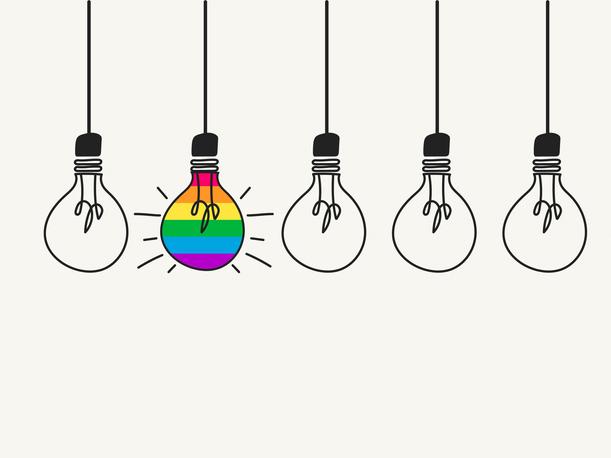
Popular resources
.css-1txxx8u{overflow:hidden;max-height:81px;text-indent:0px;} The secrets to success as a provost
Using non verbal cues to build rapport with students, emotionally challenging research and researcher well-being, augmenting the doctoral thesis in preparation for a viva, how hard can it be testing ai detection tools.
Last year marked two decades since the repeal of Section 28, a UK law that prohibited what was described as “the promotion of homosexuality” by local authorities. What this meant, in practice, was that generations of LGBTQ+ children grew up with no safe access to information about LGBTQ+ issues, no role models, no representation. They had no indication, in fact, that they could have a successful life that included employment, acceptance and community.
Surely, as hubs of knowledge production, higher education institutions have a social and ethical responsibility to actively repair some of the damage wrought by this law. As LGBTQ+ staff in the sector continue to report discrimination and erasure , are we providing enough opportunities for our students to see their own lived experiences roadmapped and reflected?
- Pride in HE: how to create an inclusive community online
- I’d tell my younger self that my chequered past would be my strength
- Making LGBTQ+ individuals feel safe, valued and empowered on campus
While institutional support and backing are essential in amplifying LGBTQ+ representation and visibility, staff on the ground can also make an impact through grassroots initiatives. And where better to push back against the fearmongering of Section 28 than from a place of love? For author, theorist and educator bell hooks , all key social justice movements have promoted a love ethic: a practice that seeks to use knowledge, responsibility, care, trust, respect and commitment. How might that look in your professional context?
In mine, I have had the privilege of coordinating a creative writing competition for LGBT+ History Month . Here’s some of what I learned.
Knowledge and responsibility
It’s natural to feel powerless against discrimination. However, take heart – there’s no one defining form of activism. You may not feel you have the capacity or physical ability to protest in the streets or the wherewithal for a strategic campaign. That doesn’t mean you have nothing to contribute to the cause of a more inclusive landscape in higher education. We each have our own offering of knowledge, skills and interests to share. These needn’t exclusively be academic pursuits.
What brings you joy? Perhaps it’s a gentle walk in nature or listening to a podcast or crocheting. I’m partial to all three…and I also enjoy using writing to make sense of my inner and outer worlds. A couple of years ago, I started facilitating LGBTQ+ creative writing for well-being sessions in my local community. Last year the chair of our university LGBTQ+ focus group asked if I would use this experience to make our campus more inclusive. We agreed that I would deliver a drop-in session exploring the importance of queer representation , and that I would coordinate a creative writing competition around the same theme. As a “late bloomer” bisexual who grew up with a dearth of positive representation, I felt a responsibility to be visible in our university community. I had first-hand experience of the possibilities that creative writing affords for healing and growth. I am also well aware of how stifling and impenetrable academic writing can feel for many. I saw the creative writing competition as an opportunity to put self-expression firmly back into the hands of a marginalised community.
Care and trust
Over the past two academic years, I have gained important insights into developing the competition process with care and establishing trust with our participants. Working with students with protected characteristics means a vital aspect of care is gaining consent at multiple stages. For trans students , for example, being named in certain contexts could have immediate and severe material consequences. One student sought me out during graduation week last year to ensure they would be dead-named – otherwise, they said, they wouldn’t be able to return home with their parents after the ceremony.
This has fed into my experience with the competition. Just because someone has entered doesn’t mean they will feel willing or able to be named in a university update or read their piece at a public event. However much you think you’ve tied up loose ends, please double-check. It’s better to be mildly irritating with an abundance of care.
That said, please don’t let the need for caution be off-putting. Demonstrating this level of care is foundational to developing trust. Repeatedly checking in with participants about how they are represented also helps to build a sense of agency they may not always feel they have in wider society. Liaise with those in your initiative whenever a new context arises in which they may be named.
Respect and commitment
University community members who participate in our writing competition are occupying a brave space , and this demands our respect. We value our staff and students’ intersectional identities and recognise how vulnerable it can feel sharing those parts of yourself in your place of work or study. I have shared some of my own LGBTQ+ journey during the drop-in sessions. Another sign of respect has been the active and enthusiastic engagement from our executive director of communications and development, who has sat on the judging panel both years. Having buy-in from senior management is indescribably validating not just for our entrants but for the wider LGBTQ+ community at the university.
Commitment to such an initiative can take many forms, the most essential of which are reflection and learning. For example, our inaugural winner, Allison Rosewood, submitted a non-fiction piece about becoming the trans role model she had always sought herself. We platformed her work at the university Pride event – she was unable to speak in person, so we recorded her reading her work and played it during the Pride Literary Hour. We invited Allison to sit on the 2024 judging panel, and the award has been named the Allison Rosewood LGBTQ+ History Month award. Now, our winner will always be invited to read at Pride and to sit on the panel. Allowing the project to evolve has helped create space for students to have their experiences and identities validated, and to build an archive of visible role models.
This year, our prompt invited entrants to imagine a world where Section 28 had never existed. Mac McClelland’s winning entry, Brianna , is staggering. The piece eloquently draws a line from past to present, highlighting just how far-reaching and damaging legislation in this vein can be. Opening the door for this creative expression has resulted in something that, in my opinion, is as impactful as an academic paper.
Knowledge, responsibility, care, trust, respect and commitment, then…what’s coming to mind for you? Perhaps you owe it to yourself and your community to explore your own initiative. One caveat to this: please also apply a love ethic to yourself. Does the thought of a project like this make you weary? You may be running low on reserves, especially as we so often expect members of marginalised communities to advocate and enact positive change themselves. Someone else can take up this mantle, and that’s fine, too.
The legacy of Section 28 is a traumatised, under-represented LGBTQ+ community and a wider UK society that still often struggles to accept those living outside a heteronormative, cisnormative version of reality. But if you do have the energy and resources, projects like ours can be transformative for individuals and institutions. As bell hooks wrote: “When we are taught that safety always lies with sameness, then difference, of any kind, will appear as a threat…The choice to love is a choice to connect – to find ourselves in the other.” Let’s work to make our institutions a place of connection and relish all the richness of experience that entails.
Emily Downes is senior student success tutor (academic writing) and LGBTQ+ Focus Group co-chair at Teesside University.
If you would like advice and insight from academics and university staff delivered direct to your inbox each week, sign up for the Campus newsletter .
The secrets to success as a provost
Emotions and learning: what role do emotions play in how and why students learn, the podcast: bringing an outsider’s eye to primary sources, a diy guide to starting your own journal, formative, summative or diagnostic assessment a guide, harnessing the power of data to drive student success.
Register for free
and unlock a host of features on the THE site
- Skip to primary navigation
- Skip to main content
We Need Diverse Books
diversebooks.org
Parents, Educators, and Librarians
WNDB promotes and donates diverse children's books for parents, educators, and librarians to transform their home, school, and community libraries.
- Publishing Professionals
WNDB supports and mentors diverse professionals in the publishing industry to advocate for diversity, equity, and inclusion.
- Get Involved
Donate Today!
Penguin Random House and We Need Diverse Books Congratulate Winners of the 2024 Creative Writing Awards!
June 3, 2024 by We Need Diverse Books
Penguin Random House grants $60,000 in scholarship awards to six exceptional high school senior literary voices from across the country

New York, NY, June 3, 2024 — Six exceptional public high school seniors from across the country have been chosen as winners of the 2024 Penguin Random House Creative Writing Awards in partnership with We Need Diverse Books, a national grassroots organization that advocates for diversity in literature. This year marks the first time the Freedom of Expression Award has been presented.
The Freedom of Expression Award was specifically created in response to the rise in book bans across the country, and to celebrate the power of books and stories. Applicants to the new award were asked to answer the prompt, “ Tell us about one banned book that changed your life and why .”
Book bans have reached an all-time high in recent years, according to the American Library Association’s Office for Intellectual Freedom, climbing 65 percent in 2023 versus 2022. Forty-seven percent of the 4,240 unique book titles targeted for removal in 2023 featured LGBTQIA+ and BIPOC characters.
Prizes were awarded in the following categories: the inaugural Freedom of Expression Award, the Michelle Obama Award for Memoir, the Amanda Gorman Award for Poetry, the Maya Angelou Award for Spoken Word, fiction & drama, and the NYC Entrant Award.
2024 Winners

To learn more about this year’s CWA winners and read their winning pieces, follow this link !
Claire von Schilling , EVP, Director Corporate Communications and Social Responsibility, Penguin Random House said, “Every year, we are blown away by the caliber of talent of our Creative Writing Award winners, and this year was no exception. Together with We Need Diverse Books, we are excited to uplift these captivating and diverse stories—and proud to champion young people’s voices in the face of rampant book bans and censorship efforts.”
Caroline Richmond , Executive Director of WNDB said, “We are thrilled to present the first Freedom of Expression Award, and to celebrate these outstanding young voices. These exceptional entries showcase valuable perspectives and remind us that diverse viewpoints are essential and life saving.”
More than 1,000 students from nearly 900 high schools across 50 states and two territories entered the competition, which is celebrating its 31st year. Each first-place recipient of the Penguin Random House Creative Writing Awards will receive a $10,000 college scholarship and a week of summer professional development from Penguin Random House, including a one-on-one coaching from some of the industry’s best editors, networking workshops, a panel about career opportunities in publishing, and a fireside chat with a Penguin Random House author. The week concludes with a virtual awards ceremony.
In addition, 78 honorable mentions are awarded to outstanding entries. These honorees will receive a “Creativity Kit,” which includes writing resources and books.
Every submission to the competition was given individual consideration via a rigorous scoring process by We Need Diverse Books and Penguin Random House. Judges for We Need Diverse Books included WNDB Executive Director Caroline Richmond, WNDB CEO and award-winning author Ellen Oh, and WNDB COO and New York Times bestselling author Dhonielle Clayton, along with a selection of educators and publishing professionals. Judges for PRH included members of the Penguin Random House Intellectual Freedom Taskforce: Dominique Cimina, Skip Dye, Carmela Iaria, Dan Novack; CWA Alumni: Kiora Brooks, Chloe Cramutola, Ife Martin, Melissa Vera, Maya Williams; Penguin Random House volunteers: Keline Adams, Isabela Alcantara, Tracy Bernstein, Allison Chan, Erin Colombo, Kristen Costa, Ximena Gonzalez, Megha Jain, Daniel Ortega-Venni, Mia Pulido, Miriam Tuliao, Sarah Turbin, Angela Rose West.
About Penguin Random House : Penguin Random House, the world’s largest trade book publisher, is dedicated to its mission of nourishing a universal passion for reading by connecting authors and their writing with readers everywhere. The company, which employs more than 10,000 people globally, was formed on July 1, 2013, by Bertelsmann and Pearson, who own 75 percent and 25 percent, respectively. With nearly 275 independent imprints and brands on six continents, Penguin Random House comprises adult and children’s fiction and nonfiction print and digital English- and Spanish-language trade book publishing businesses in more than 20 countries worldwide. With over 15,000 new titles and more than 600 million print, audio and eBooks sold annually, Penguin Random House’s publishing lists include more than 80 Nobel Prize laureates and hundreds of the world’s most widely read authors. www.penguinrandomhouse.com
About We Need Diverse Books : Founded by marginalized authors, We Need Diverse Books strives to diversify the publishing industry and make our bookshelves more equitable — all to promote literacy, build empathy, and reduce bias. Established in 2014, WNDB is a 501(c)(3) nonprofit that supports diverse creators and publishing professionals via grants, mentorships, and workshops. We also serve educators and teachers nationwide, providing over 100,000 diverse books to schools and libraries. Learn more at www.diversebooks.org
Share this:
- Click to share on Twitter (Opens in new window)
- Click to share on Facebook (Opens in new window)

Subscribe to the official WNDB newsletter today!

Follow WNDB on Social Media
- Writers Illustrators
- Parents Educators Librarians
- Meet the Team
More from WNDB
- Anthologies
- WNDB Bookshop
Take Action
- Addressing Book Challenges
Our Programs
- WNDB in the Classroom
- Educators Making a Difference Grants
- Walter Grant
- Internship Grant Program
- Mentorships
- The Walter Awards
- #BooksSaveLives
- PRH Creative Writing Awards
- Native Children’s and YA Writing Intensive
- Black Creatives Revisions Workshop
14 Best AI Writing Software Tools of 2024 (Expert Picks)
Pricing: $9 per month Standout Features: AI-powered Writing Platform, Multifaceted Marketing Tool, Efficient Long-form Editor
Pricing: $69 per month Standout Features: Comprehensive AI Writing Suite, Powerful Quality Output, Advanced AI Solutions

Pricing: $20 per month Standout Features: Customized for Storytelling, Intuitive Suggestions Toolbar, Dynamic 'Expand' Feature
AI writing software has exploded in popularity. Every since ChatGPT, AI writing has become mainstream, with hundreds of new AI writing tools flooding the market. Almost every Saas platform includes AI writers somewhere in their feature set, and there are hundreds of standalone services with Chrome extensions and more.
The AI writing assistant software market is expected to grow at a rate (CAGR) of 26.94% from 2023 to 2030, reaching a market size of $6.464 billion by 2030. – VerifiedMarketResearch.com
Since there are so many to keep track of, we will walk you through the best AI writing tools and highlight what each is best suited for. You’d be surprised how specialized some of these get.
- 1.1 1. Rytr
- 1.2 2. Jasper
- 1.3 3. Sudowrite
- 1.4 4. Copy.ai
- 1.5 5. Writesonic
- 1.6 6. WordHero
- 1.7 7. Article Forge
- 1.8 8. Frase.io
- 1.9 9. Surfer SEO
- 1.10 10. Scalenut
- 1.11 11. INK
- 1.12 12. WriterZen
- 1.13 13. ClosersCopy
- 1.14 14. HubSpot AI Blog Writer
- 2 How AI Can Help Your Writing Workflows
- 3.1 Feature Comparison of Best AI Writers
- 3.2 Price Comparison of AI Writing Tools
- 4 What is the Best AI Writing Software?
- 5 Frequently Asked Questions (FAQs)
The Best AI Writing Tools
AI can speed up virtually any writing task by selecting the right tool. We’ve done unbiased research to show you the best AI Writing Apps you can choose from today. Take a look at these AI writing tools that can eliminate writer’s block and the fear of the blank page.
The Best AI Writing Software Listed In Order
- Article Forge
- ClosersCopy
- HubSpot AI Blog Writer
🥇 Best AI Writer for General Use
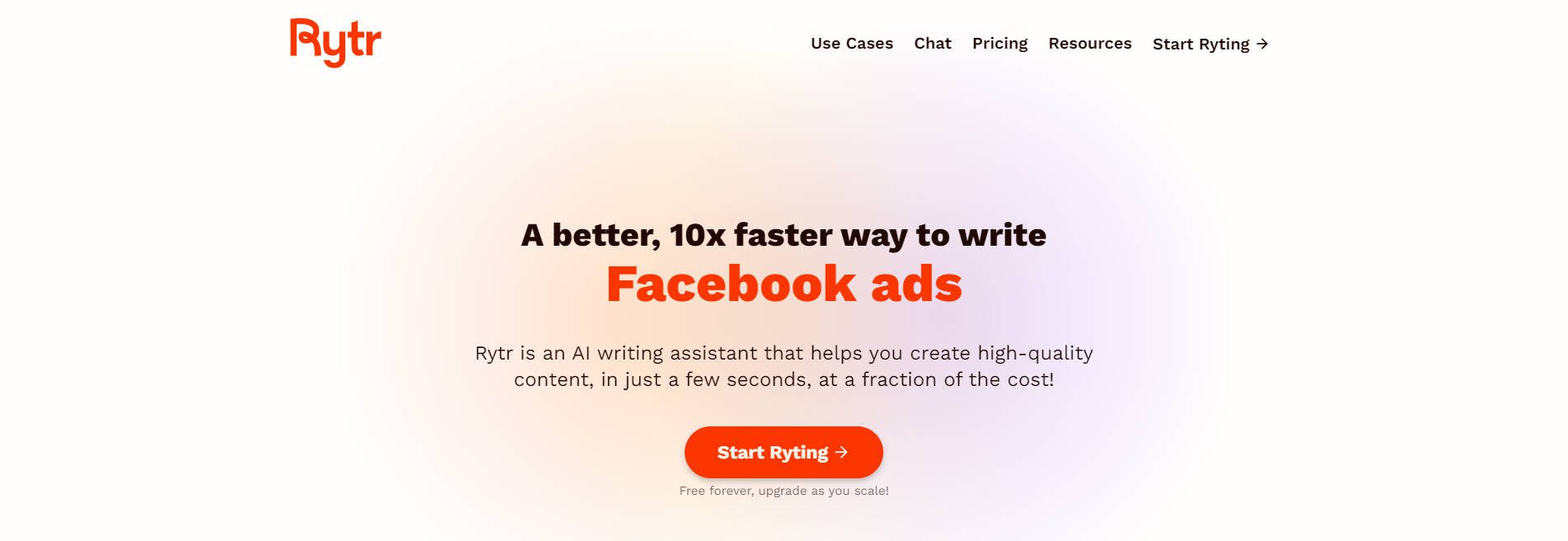
Rytr is an AI-powered writing platform with one of the largest footprints of all AI writing tools on the market. It’s an all-purpose AI tool that is handy for any diversified marketer. It has copywriting frameworks, templates for blog writing, and use cases for creating product descriptions. It also sports SEO integrations so you can write with the fullest confidence of keywords and semantic topical coverage in your work. You will never write quite the same again after using this.
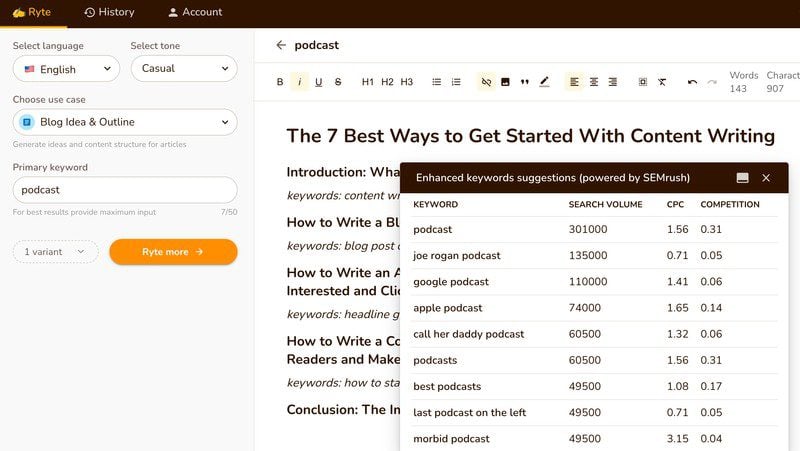
Rytr uses AI technology to create high-quality content quickly and easily. Users can generate content for various applications and industries, including marketing, eCommerce, and more. The easy-to-use interface makes it easy to start, even for users without previous AI writing (or writing!) experience.
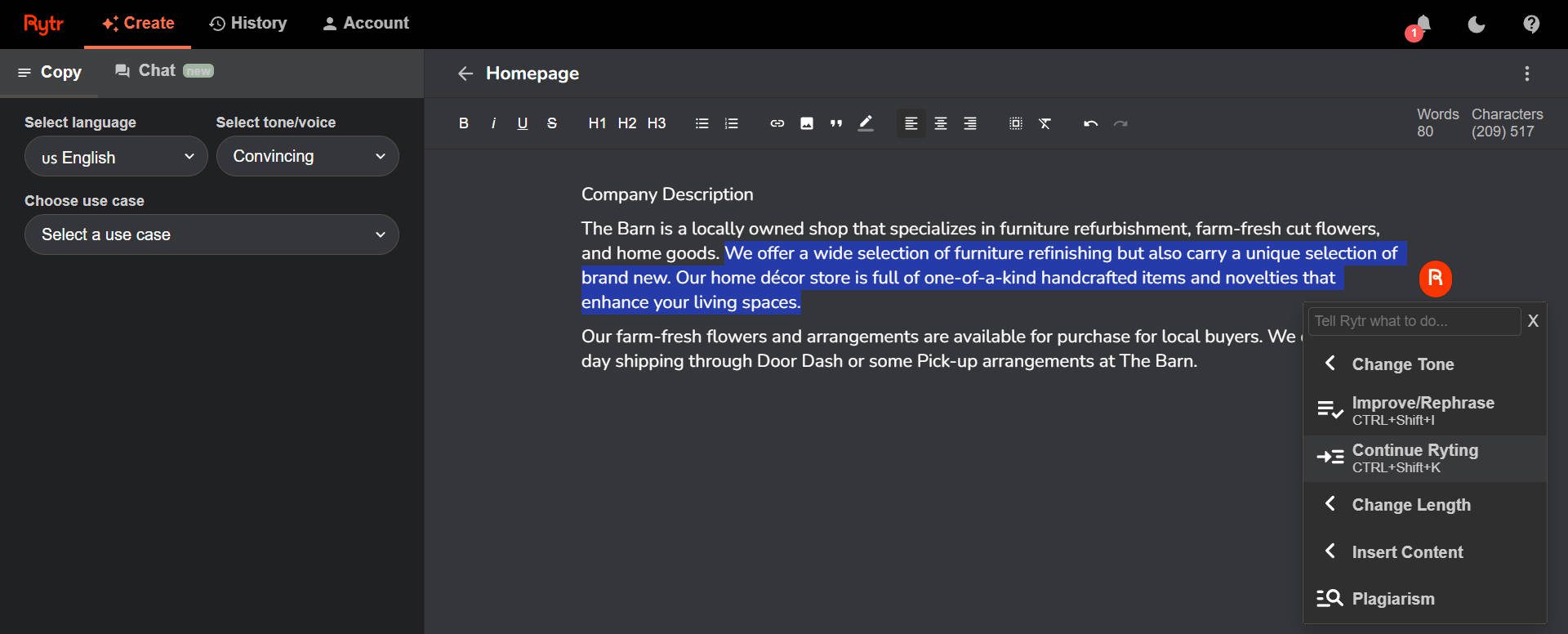
They’ve also launched Rytr Chat, which allows human writers to chat back and forth with its AI to generate tailored content iteratively that can be easily added to its long-form editor.
What We Like About Rytr
- Multilingual : AI-generated content is supported in over 30 languages, accommodating a broad user base.
- Templates : More than 40 templates and use cases are available, eliminating the need to write detailed prompts.
- User Interface : Features an easy-to-use interface, including a long-form editor and a dark mode option for eye comfort.
- Chrome Browser Extension : A Chrome extension is available that integrates AI writing capabilities into favorite apps like the WordPress editor and emails.
- SEO Integrations : It integrates with Semrush and SERPs for top content analysis to find accurate keyword research suggestions, which is beneficial with “Blog Idea” and “Blog Outline” templates.
- Plagiarism Checker: Rytr now includes a built-in plagiarism checker to compare its output against so that its AI-generated words are guaranteed to not sound like a robot.
- Tone of Voice Prompt: Like other top-tier AI writers, Rytr supports creating your own voice or tone settings. However, it does this via Prompt and not through uploaded sample content.
What Could Be Improved
- Content Depth : Rytr excels in generating short-form content but can struggle with depth and detail for more complex, long-form articles. Enhancing its algorithms to produce more in-depth analyses and comprehensive pieces would be beneficial.
- Contextual Understanding : While Rytr supports a wide range of languages and templates, improving its contextual understanding and accuracy in niche or technical subjects could make it more versatile and reliable for specialized content creators.
🥇 Why We Picked It
Rytr stands at the top of our list for a few reasons. It’s gathered millions of happy users worldwide while developing new tools and features. It is also one of the lowest-cost solutions on the market. Combining those things with its dead simple usability (not to mention its Chrome extension), Rytr doesn’t have many downsides.
Interested in learning about all Rytr has to offer? Catch our full Rytr review , where we go into every feature.
Who is Rytr Best For?
With over 7 million writers using Rytr, it’s hard to imagine someone who wouldn’t benefit from its AI writing platform. If you’ve never used an AI tool, this is one to start with—with a free plan available. It also has the cheapest starting price out of all the tools on this list. It’s the perfect tool for anyone looking to have AI improve their writing productivity. Whether you’re a freelancer, small business owner, or part of a larger team, Rytr is an essential tool for any writer looking to boost their efficiency and streamline their workflow.
Community Reviews and Ratings
People note how easy it is to use and love its price point. It is a very popular tool because it steadily adds advanced features while still keeping it simple.

Rytr offers a free plan, with its starter plan costing as little as $9 per month !
🥈 Best AI Writer for Businesses
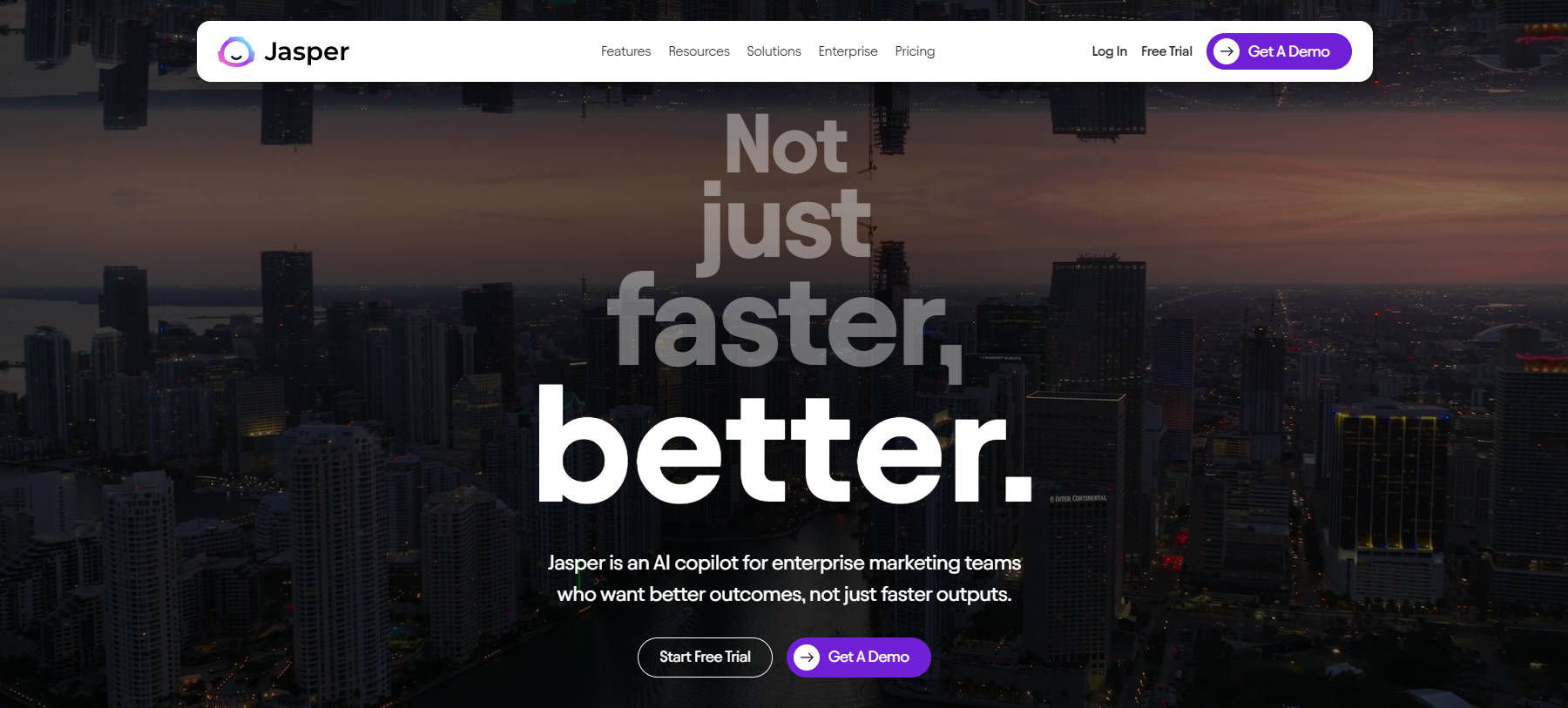
Jasper is another wildly popular AI writing platform (originally called Jarvis AI). It is home to some of the most powerful AI tools for writing long-format content, SEO content, blog posts, sales emails, and more. It also provides training, courses, and conferences around its feature set that gets a lot of traction among AI users. Jasper is probably among the more respected brands known for constantly iterating on their world-class AI solutions.
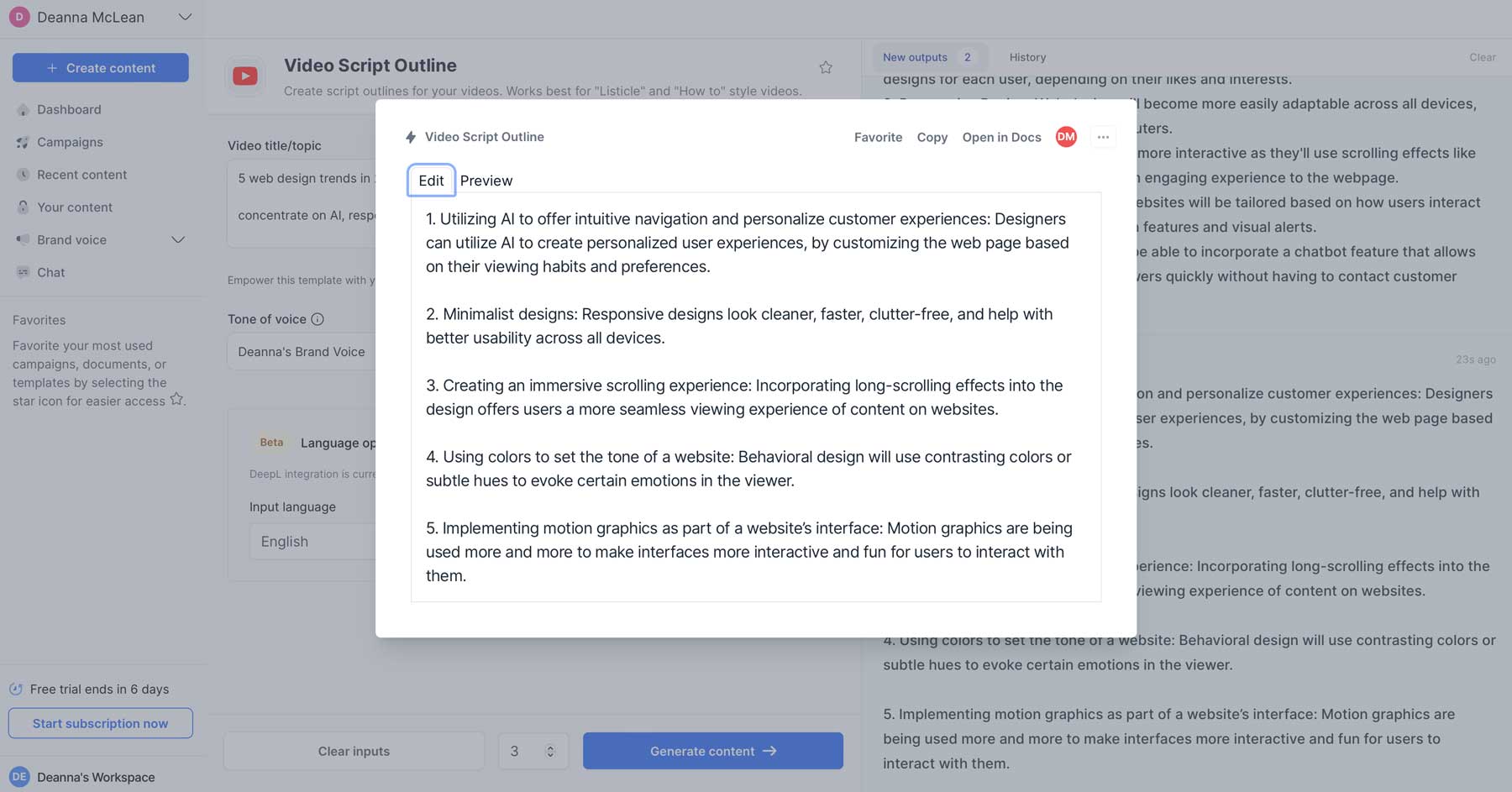
Jasper’s built for the more extensive writing operations among us. Generative content produced by Jasper is high quality, with plenty of tools that make the whole platform sparkle.
What We Like About Jasper
- Integration : Jasper integrates with powerful tools like Surfer SEO, Chrome, and Grammarly, enhancing its functionality at every turn.
- Support : Offers incredible documentation, support, and customer success training directly from the company.
- AI Art Generation : Includes AI-generated art with each plan, adding visual creativity to content.
- Collaboration : Provides advanced plans for team collaboration so multiple people can work on documents together (vital for teams).
- Up-to-date : It has access to real-time data via the internet, enabling it to write about news events from as recently as this morning.
- Company Knowledge: Not only can it write in your company’s brand voice, but it can save “memories” of important pieces of information that it can use while writing to have more accurate context and description of the particulars of your business.
- Pricing : Jasper’s is undoubtedly priced to be a business tool. They do not offer a free version or even something cheaper than ChatGPT, making other ChatGPT alternatives more attractive than Jasper on that point.
- Integration Depth : Jasper integrates with several tools for SEO and grammar, but deeper integrations, particularly with content management systems, could streamline the content creation process further. They’ve started this with Webflow , but more effort is needed for this to be a valuable enterprise tool.
🥈 Why We Picked It
Jasper has it all: a long-standing product with best-in-class features. It is widely used and has found its niche with enterprise and corporate marketing teams. It isn’t a copycat product of other popular AI writers out there, and it specializes in business use cases.
Who is Jasper Best For?
Jasper is best for businesses that need to speed up internal writing functions (like marketing, sales, support, and more). It’s relatively expensive, but you pay for its quality and simple editing workflow.
Still undecided? Take a look at our Jasper Review to see everything that it has to offer.
Besides a few mentions of it being hard to unsubscribe from, users love using Jaspers’s best-in-class features. They continually find value in the new features they release and how well done they are. Most customers are medium-to-large content or marketing operations.
No free plan with prices starting at $69 per month with a limited free trial
3. Sudowrite
🥉 best ai writer for novel & fiction writing.
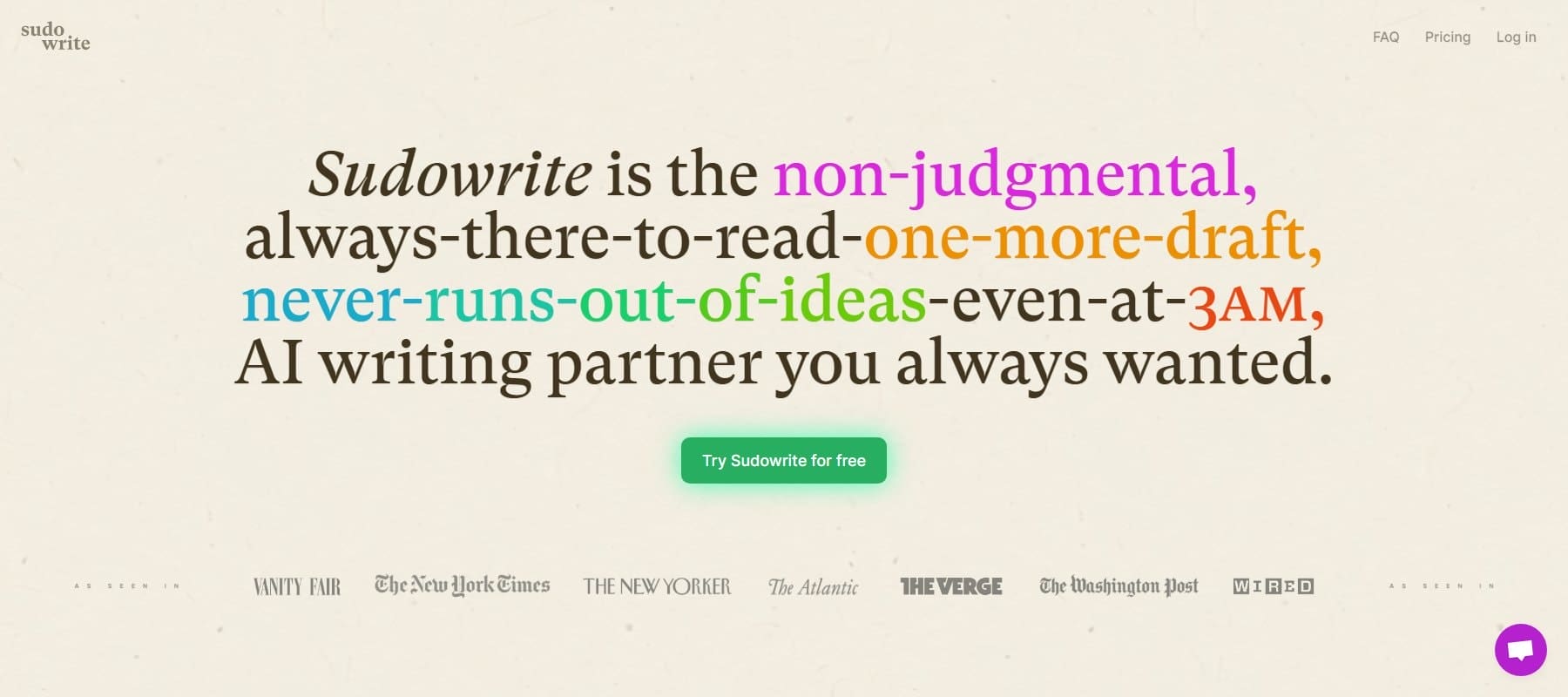
Sudowrite is an AI writing software built exclusively for stories and all content that uses even a little storytelling. It does not have the recipes/templates that some other platforms have but instead focuses more on a writing workflow than the parts and pieces of a particular work.
Sudowrite gives you a draft, suggestions, and editing advice, and it is more tailored toward creative and descriptive writing. While most other AI writing software focuses on business use cases and blogs, Sudowrite goes against the grain and offers something truly unique.
What We Like About Sudowrite
- First Draft : Sudowrite’s “First draft” feature can transform a simple prompt into 1000 words, streamlining content creation.
- Suggestions : Offers auto-complete and styled suggestions that are easy to integrate and relevant to your writing context.
- Enhancements : Utilizes “Describe” for adding captivating language and “Expand” for naturally extending sections of writing.
- Built for Writers: While some AI writers aim to replace writers, Sudowrite aims to make writers more efficient in their writing processes.
- Dialogue: Many people use AI for factual content, but Sudowrite helps with prose and narrative.
- Character Coherence : While Sudowrite is excellent with story writing, it can be pushed a little too hard if heavily used. This is noticeable in the discontinuity of characters and histories of events throughout an entire story.
- Credit System : Its credit system starts with a high dollar amount, where it would be better if there were entry-level plans that cost sub-$20 for hobbyists.
🥉 Why We Picked It
Writing takes many shapes, and just because you are reading an internet article right now does not mean that everything you wish to read and write is fact-based nonfiction. Sudowrites covers a massive corner of the market to help writers of fiction, poetry, and narrative with the projects they are passionate about.
Who is Sudowrite Best For?
Sudowrite is best for creative professionals in interesting brand writing positions or those crafting narrative, poetry, and other prose. It is also meant for storytellers of all kinds (poems, books, scripts) and delivers.
If you are on the fence about trying it, look at our Sudowrite review to see all its features and workflows that can help you with your creative writing adventures.
Not many reviewers have shared their experience with Sudowrite, but that makes sense for something created for creative writers. The cost can be a little high, and the writing tends to stray when the AI is forced to write too much.
No free plan with paid plans starting at $19 per month for 225,000 credits
Get Sudowrite

Copy.ai is a prevalent content generator (over 6 million users) specially tailored to optimize the workflows of many sales and marketing tasks (including systems and integrations). This connects its AI-generation prowess to many different applicants that can enhance sales-enablement and go-to-market strategies. This can dramatically increase an individual’s or team’s output for specific tasks with the help of ks.
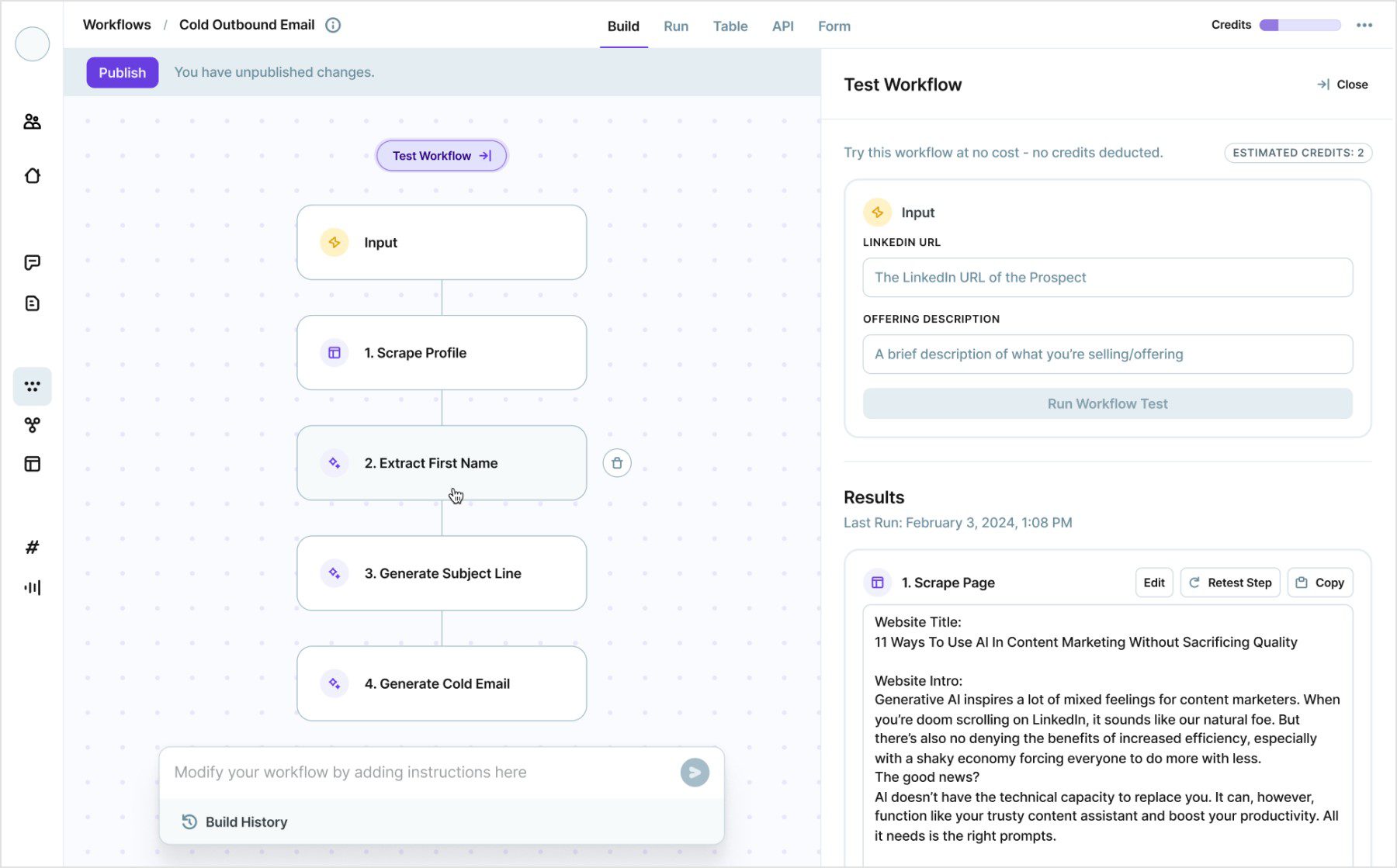
Its API for LinkedIn, for example, can pull prospect info from a CRMeir LinkedIn profile to help create a tailored cold-outreach message that is personalized and written with copywriting principles. It also includes a ChatGPT alternative with Copy.ai Chat .
What We Like About Copy.ai
- API & Zapier Integration : Copy.ai’s API/Integrations connect with CRMs, LinkedIn, and other sales/marketing tools for effective cold outreach.
- Chat Interface : Features Chat by Copy.ai, a ChatGPT-like interface optimized for sales and marketing tasks with a prompt library.
- Pricing Model : Offers a unique pricing model based on the number of fired automations (Workflows) with unlimited generatable words.
- Brand Voice + Infobase: Stores essential details about your business branding voice of important information that it should be aware of.
- Lack of Native Integrations : While impressive, Copy.ai’s workflows primarily run based on a limited number of integrations built into the system. Instead, users must know how to work with an API or use Zapier as an expensive connection solution.
Who is Copy.ai Best For?
Copy.ai is best for salespeople and marketers whether or not they work on a team. Teams stand to benefit from its Pro plan, which includes unlimited words, unlimited projects, and up to five user seats. See our article on how to use Copy.ai if you want more information.
Users of Copy.ai note its intuitive approach to content creation. The flexibility and its unique features make it well worth its time.
Offers a free plan with limited credit usage and a Pro plan starting at $49 per month .
Get Copy.ai
5. Writesonic

Writesonic is an AI writing software that packs a lot of features into its platform. Its free plan gives 10,000-word access to its optimized GPT 3.5 platform, while its paid plans can be powered by GPT 4. Writesonic also has innovative products like Photosonic and Chatsonic that bring even more AI-powered tools to its customers.
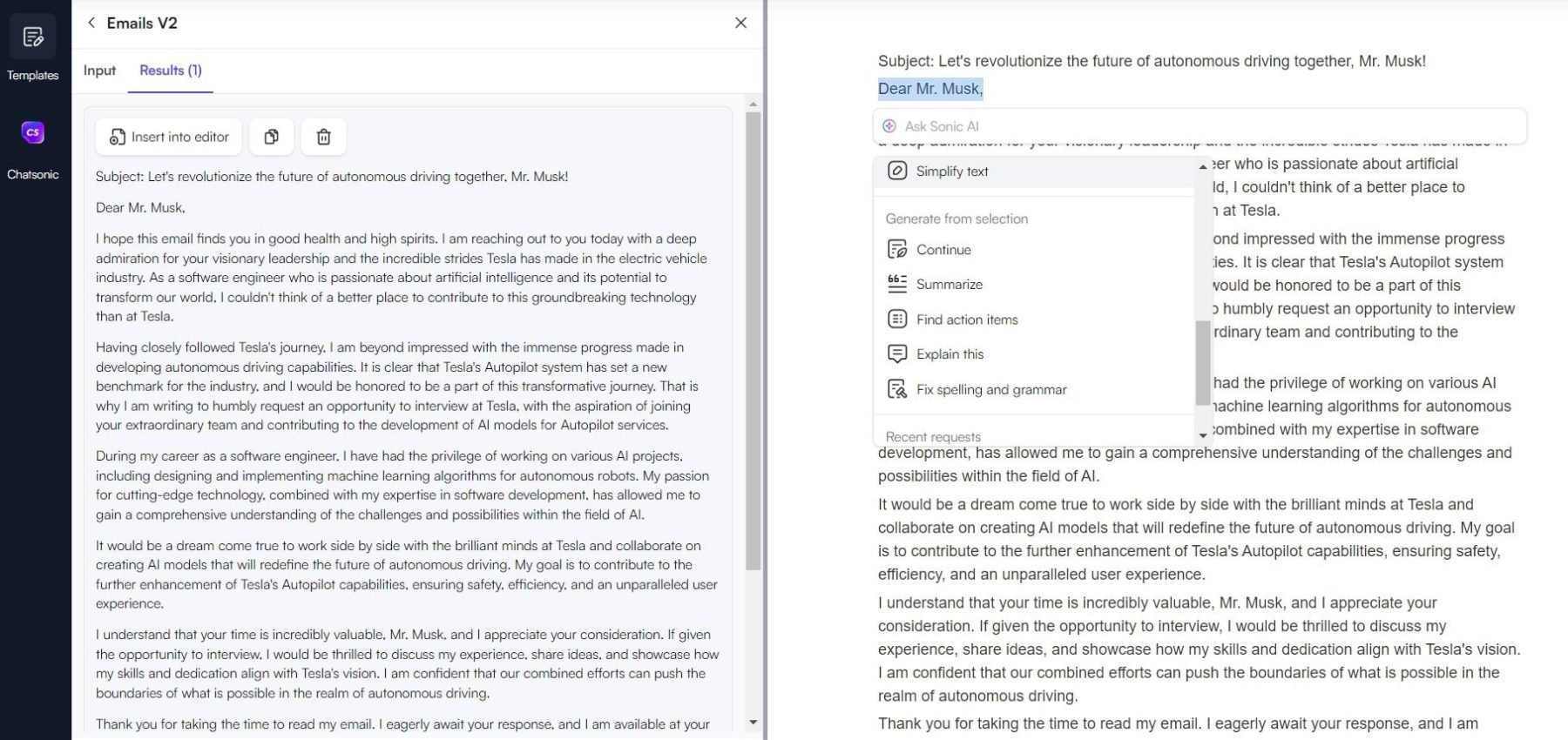
Learn more about Writesonic and its AI Chatbot, Chatsonic , with our detailed reviews.
Writesonic’s advanced AI technology allows users to generate high-quality written content quickly and easily. The platform also includes various advanced editing tools, enabling users to fine-tune their content perfectly.
What We Like About Writesonic
- AI Tools : Writesonic provides AI copywriting tools with over 100 templates for various content types, including blog posts and landing pages.
- Collaborative Editing : Features SonicEditor for collaborative editing, allowing multiple team members to contribute to a text.
- Landing Page Generation : Can generate and code out static landing pages along with the copy, integrating with Surfer SEO and Zapier.
- ChatSonic : All plans include access to ChatSonic, a GPT-4-styled chat solution with current trending topics awareness (also includes Photosonic for AI art generation).
- Brand Voice: Stores information about the way your business speaks with its brand voice feature.
- Cluttered UI : Writesonic packs so many features under the hood that it can be a messy and confusing platform to navigate. We wouldn’t say it’s hard to use, but it can be a lot to take in and find your way through.
- Confusing Credit System: Uses a crediting system where the base model used (GPT 3.5 and 4) can be toggled and those changes the amount of credits used per word.
Who is Writesonic Best For?
Writesonic is a comprehensive platform for marketers and content writers with AI tools for several writing tasks. Its fast pace of innovation means that any user needing generative AI content, images, or chat interfaces would likely benefit from the platform. It’s one of the better all-purpose AI writing websites with a free plan.
Overall, users love all the different features and sub-products available within Writesonic. Ultimately, its power as an AI writer is satisfying, and the output quality is quite good. Some have had issues dialing in their prompts, but that is an inherent challenge with any AI writer using foundation models.
Free plan with paid plans starting at $19 per month .
Get Writesonic
6. WordHero
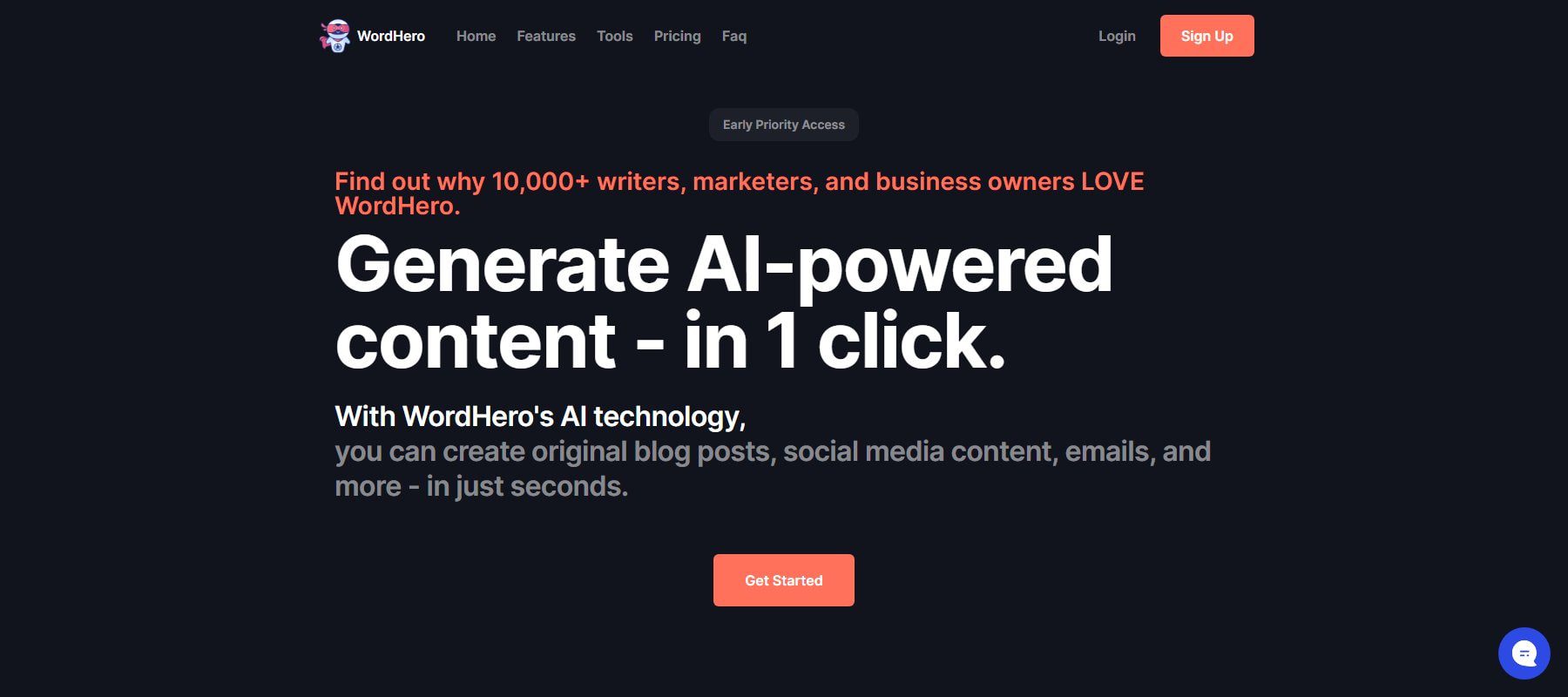
WordHero is another all-purpose AI writing tool particularly suited for business purposes. Launching on AppSumo with a lifetime deal with unlimited words, it’s quickly come into its own. WordHero suits on-the-fly content generation that you can paste into your documents of choice, like Word, a Slack channel, or a marketing campaign. Its long-form editor has come a long way and makes creating whole documents with the help of AI even easier.
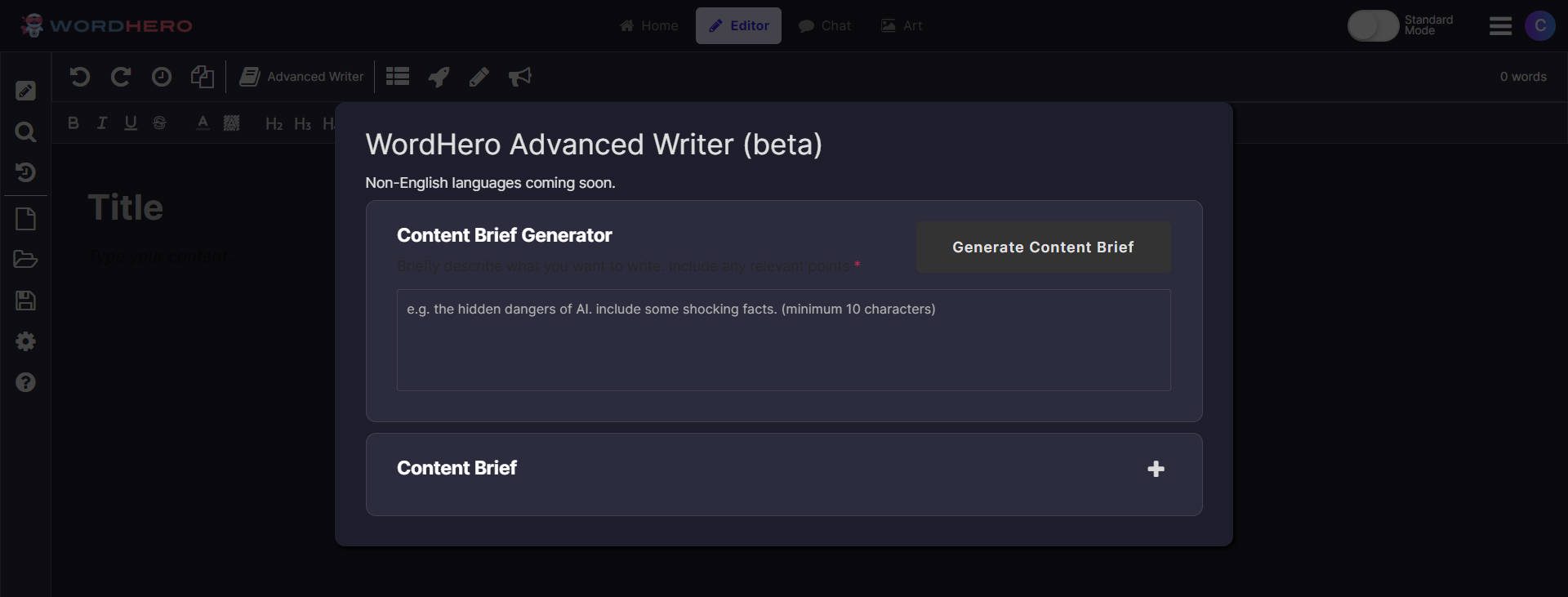
There’s a dedicated and loyal user base that constantly suggests improvements that the team takes into consideration. So, it is likely the platform will continue to improve as it has over the last couple of years.
What We Like About WordHero
- Templates : WordHero offers template-based AI outputs for immediate use or integration with its long-form editor.
- Blog Content : Surpasses Rytr in generating compelling blog introductions and conclusions.
- Unlimited Content : Allows for the generation of unlimited content, adhering to their fair use policy. Released “ Enhanced Mode ” which uses better AI models which may have monthly word limits.
- Multilingual Support : Supports over a hundred languages, placing it at the top of the list for language diversity.
- Brand Voice: WordHero has recently launched brand voice features, which have been some of the most important features for other AI writing platforms.
- Advanced Writer: AI writing workflow for having WordHero output a coherent 2,000-word article in one fell swoop. Go from zero to the first draft in under a minute with this feature.
- Frequent LTD Sales: WordHero has been on AppSumo multiple times and even sells lifetime subscriptions on their website currently. This is great for early adopters but is an unsustainable business model for a SaaS company with costs every time an AI request is generated. This makes the future of WordHero a little murky although a great deal for those willing to make the bet on a LTD.
- Dark Mode: Dark mode in the editor is lovely to have, but some text displays as dark gray over the black background, making it very hard to use aspects of its UI. This is an easy fix but one we would like to see sooner rather than later.
Who is WordHero Best For?
Like Rytr and others on this list, WordHero is best for those in business or marketing. It creates excellent blog section content and does a good job with copywriting frameworks and product descriptions. It does not currently have advanced integrations, so it’s ideal if this is the only AI writing tool you expect to use in your workflow.
There are not many reviews of WordHero despite its large userbase. But take it from the frequent product updates reflected in the changelog, and you can notice they are answering many of their customer’s wishes.
No free plan, with prices starting at $49 per month .
Get WordHero
7. Article Forge
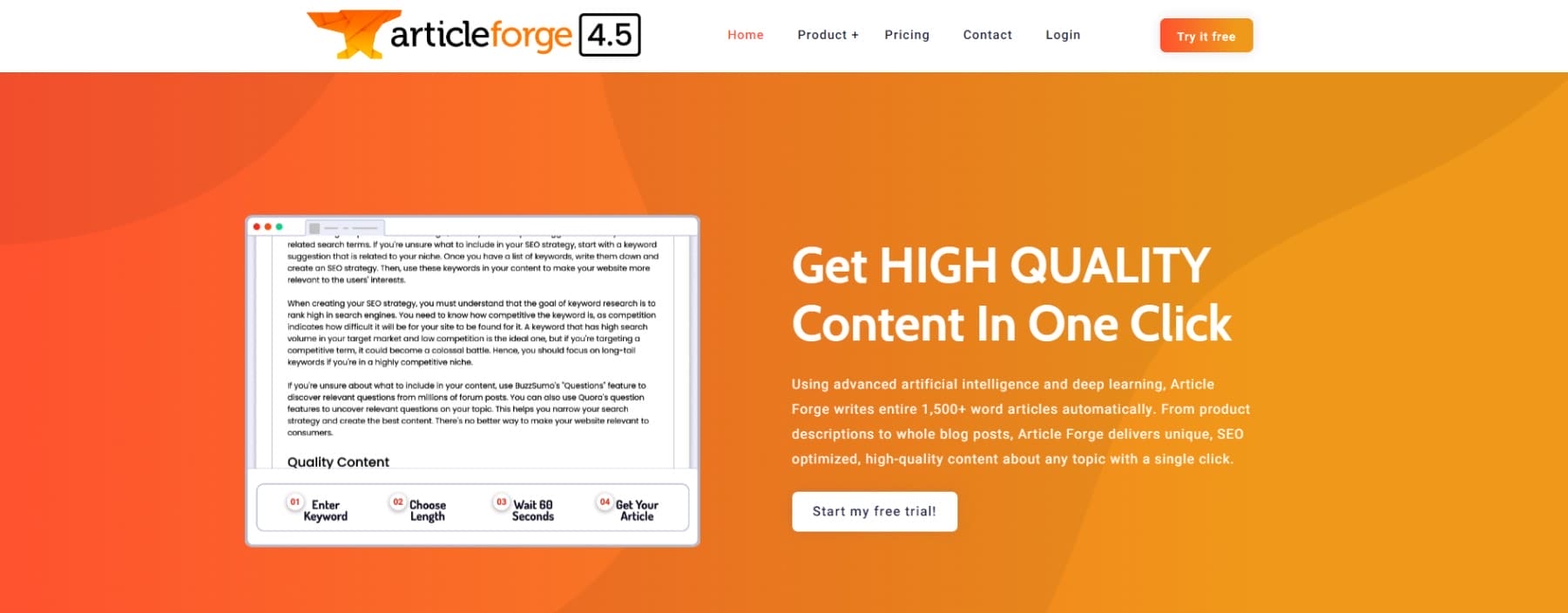
Article Forge is an AI writing software built for long-form content creation. Put in a keyword, select some basic parameters like length, and Article Forge will forge ahead with a fresh piece of generated content.
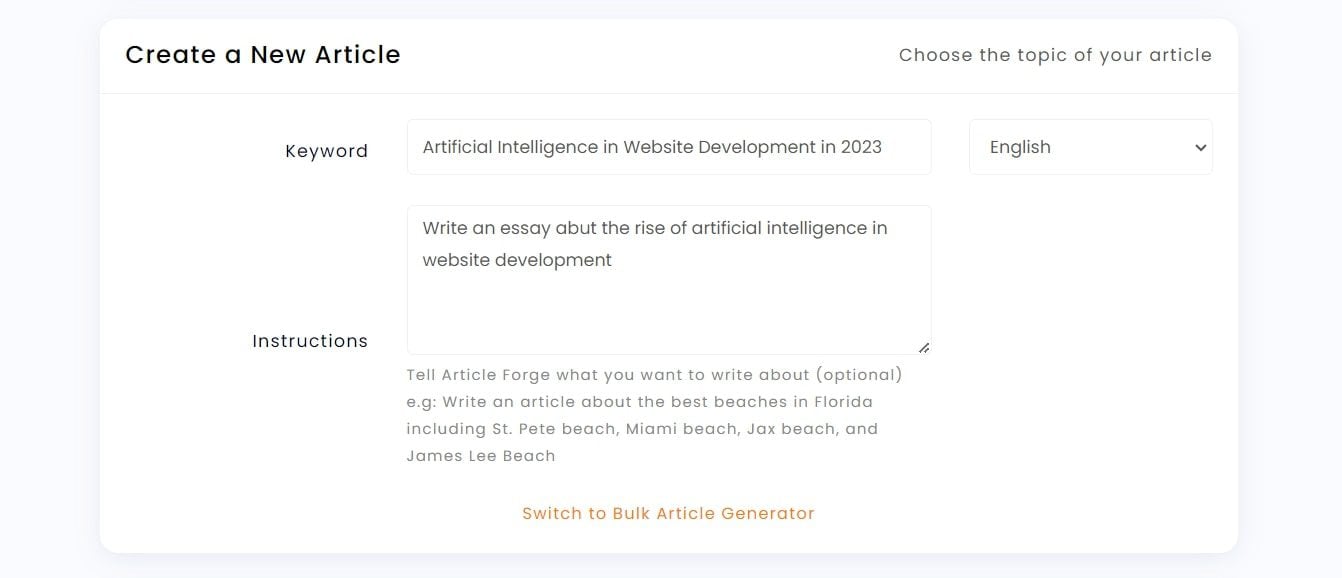
Article Forge’s power comes from its ability to create a lot of content simultaneously. That is also its sticking point, which places more responsibility on humans to read, edit, and substantiate what the AI generated. However, it’s a refreshing change of pace from other AI tools that build content sections at a time until you’re done.
What We Like About Article Forge
- One-Click Creation : Article Forge generates high-quality, long-form content (1,500 words) with a single click, simplifying content production.
- SEO Optimization : Features built-in SEO optimization to enhance content visibility.
- Topic Filtering : Enables adding negative or excluded topics to refine content relevance.
- Natural Flow : Automatically creates content and headings that naturally flow, improving readability.
- Copy-scape Pass : Guarantees content will pass Copy-scape, ensuring originality.
- Over-Reliance Risk: Because of the features that Article Forge markets, it’s easy to think that AI-generated content is good to publish as-is. With the recent news breaking over social sites about “SEO Heists” (stories of how companies used programmatic SEO to generate hundreds of thousands of visitors in monthly traffic with AI articles, only to have Google apply manual actions against those sites and drop visitors to mere thousands per month) users should be wary of unhelpful AI content and how it can affect your website.
- High Cost: Article Forge employs a credit system that lets a user write up to 25,000 words for $27 per month. This is a high price since it costs more than ChatGPT while inflicting higher limits.
Who is Article Forge Best For?
Article Forge is best for more extensive content operations that want to increase their editorial output dramatically. Great for creating supporting content (clusters) in quick succession. It still takes work to edit and fact-check the output correctly, and it works even better when a human writer overhauls every paragraph. It also scores high marks on all major review sites, which tells us they are doing something right.
Many users enjoy using Article Forge since it makes it so easy to generate a long first draft. Some have noted its high price tag and others that they can’t reliably get articles longer than 750 words to generate.
No free plan with paid pricing starting at $27 per month .
Get Article Forge
8. Frase.io
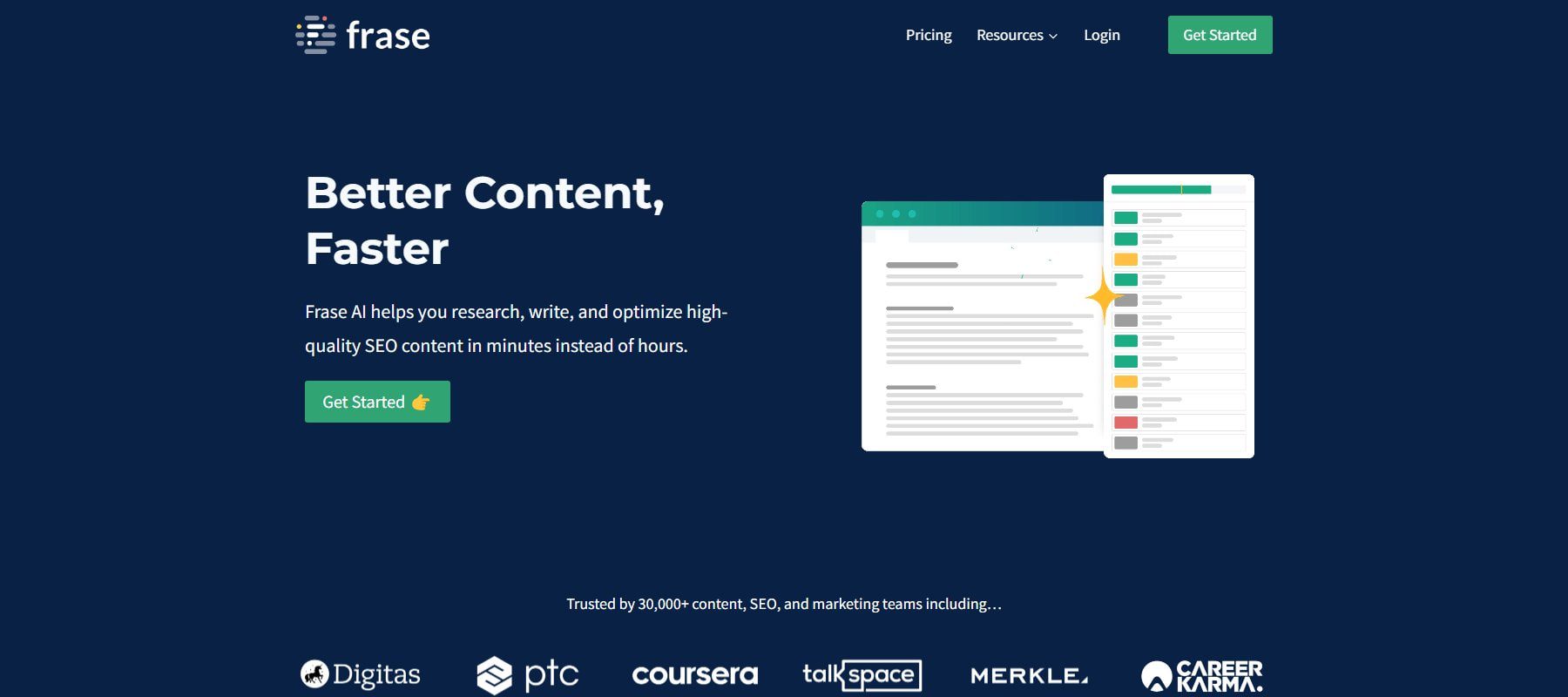
Frase.io is a powerful AI writing tool that can help you with all aspects of your content creation process. It can help you create high-quality content that will engage and inform your readers, from researching topics to writing and editing your content. Whether you’re a blogger, a content marketer, or just someone who wants to write better content, Frase can help you take your content to the next level.

With Frase’s advanced AI technology, businesses can create high-quality content quickly and easily. Additionally, the advanced SEO tools ensure that the content is optimized for search engines. Frase analyzes published content and provides actionable, AI-generated next steps that save valuable time.
What We Like About Frase
- SEO Content Briefs : Frase can create content briefs from SERP research in just “6 seconds,” including customizable templates for frequent content types.
- Flexible Editor : Offers a long-form editor that allows for both manual writing and AI assistance at any point.
- Advanced SEO Content Optimization : Enables content optimization for SEO with NPL topic modeling and tracks performance with Google Search Console integration to identify and address content decay.
- Integrations : Frase offers some really nice integrations (like WordPress, Salesforce, and Google Search Console), but expanding its integration capabilities with more third-party platforms and tools could streamline users’ workflows even further.
Who is Frase Best For?
Frase.io is ideal for content marketers or teams who want to write quality SEO content with AI to rank well in organic search. With GSC integration included in every plan, Frase is particularly useful for large content sites that rely on content decay warnings without manually checking each post every quarter.
Frase has spectacularly good reviews, as people love its approach to creating SEO content. It gets the content writing workflow down pat, making it a breeze to work through creating something that is publishable. Some users want more file hierarchy in storing AI written materials inside the platform, but that is relatively minor.
Starts at $14.99 per month with an unlimited content generation add-on for an extra $35 per month .
9. Surfer SEO

Surfer SEO is the premier writing AI that can help you rank #1 on Google. It does this by analyzing the top-ranking pages for your target keywords and then providing you with suggestions on how to optimize your content. This can save you a lot of time and effort and help you improve your chances of ranking higher in search engine results pages ( SERPs ). You may have noticed how many other AI writers integrate directly with Surfer—that’s a testament to what Surfer SEO can do for you and your websites.
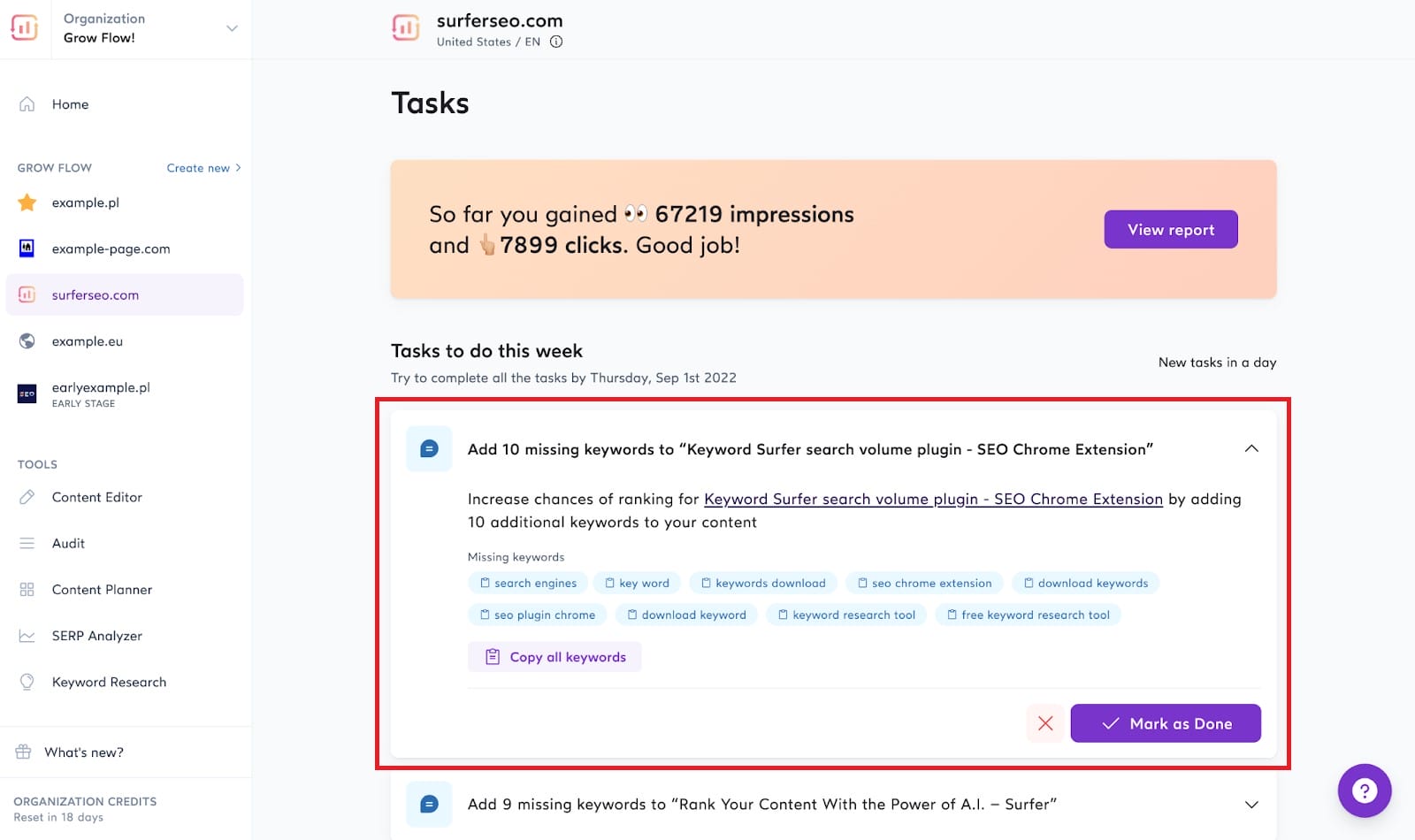
Surfer SEO’s advanced AI technology allows businesses to optimize their online content for search engines quickly and easily. The platform includes various advanced SEO analysis tools, content optimization recommendations, and competitor analysis tools to help businesses improve their online presence.
What We Like About Surfer SEO
- Content Strategy : Surfer SEO creates content briefs and outlines based on top-ranking SERP results for strategic content planning.
- Content Score : Offers a content score based on SERP analysis, NPL, and other key ranking factors to guide content optimization.
- Plagiarism Checker : Includes a plagiarism checker to avoid ranking penalties and maintain content integrity.
- Integration : Integrates with top AI writing software, Google Docs, Semrush, and WordPress, enhancing content creation and publishing workflows.
- Pricing: SurferSEO can be quite the investment, with the lowest-priced service at $89 per month. This lets users write, edit, and analyze 30 documents.
Who is Surfer SEO Best For?
Surfer SEO, right now, is the go-to AI and NPL tool for SEO content writing. Likely, you want to pair Surfer with an advanced AI writer like Jasper or Rytr. Surfer SEO is the perfect companion for these fantastic tools and helps keep your AI content in the good graces of Google and other search engines.
Another SEO AI writer that scores really well with customers is Surfer. Surfer was one of the first mega-popular SEO writers, and it shows in their mature feature set. There are some idiosyncracies, among them being the price tag, but users love using it.
No free options with paid plans starting at $89 per month .
Get SurferSEO
10. Scalenut

Scalenut is another world-class AI writing assistance created explicitly for SEO and content marketing. It does this by analyzing the top-ranking pages for your target keywords and then providing you with suggestions on how to optimize your content. It can do this for one article or an entire cluster for a full-fledged content strategy that builds topical authority.
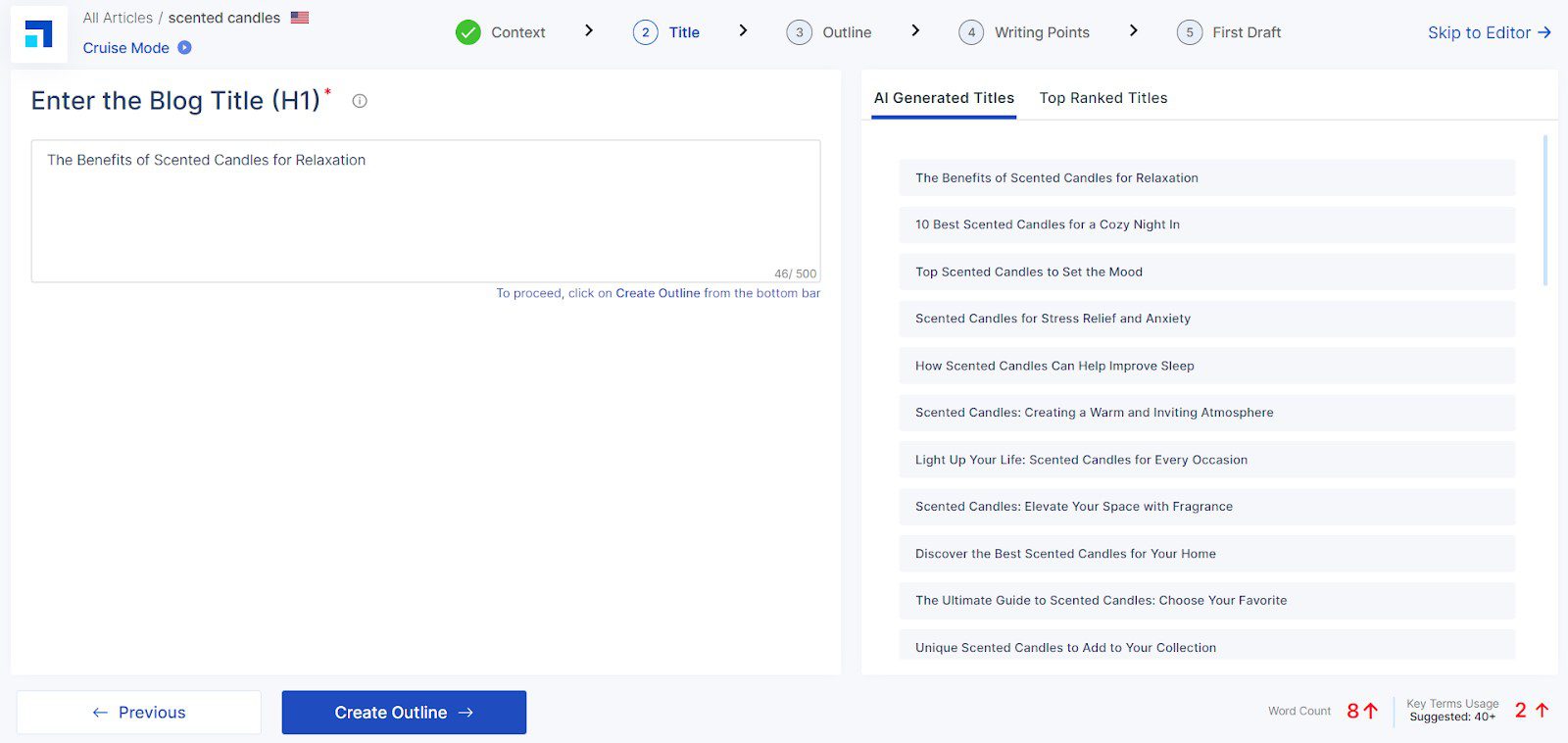
Using Scalenut, businesses can automate their entire content lifecycle to streamline planning, keyword research , writing, and optimization. This is great for reducing the workload on human staff and improving overall efficiency while not replacing your team.
What We Like About Scalenut
- Content Strategy : Scalenut builds content strategies and keyword clusters swiftly using AI, streamlining the planning process.
- Audience Analysis : Analyzes audience search intent and competitors in SERPs to devise the best plan for each content piece.
- AI-Guided Writing : Offers AI-guided writing with real-time optimization, SERP stats, and content scoring for enhanced content quality.
- Marketing Templates : Provides over 40 marketing task templates for creating diverse content, including product descriptions and newsletter emails.
- Depth of Analysis : While Scalenut offers comprehensive SERP and audience intent analysis, the depth of competitor content evaluation could be enhanced to provide more nuanced insights for content differentiation.
- Template Diversity : Although Scalenut provides a robust selection of marketing templates, expanding the range to include more varied content formats could further cater to the diverse needs of content creators and marketers.
Who is Scalenut Best For?
Scalenut is there for businesses looking to rapidly create content at scale to build topical authority and start winning in the SERPs. Lower pricing for SEO content than Surfer SEO, though with fewer integrations. It can be used by itself since it has plenty of AI content creation capabilities.
Users love Scalenut and say that its AI does a good job of writing articles. The only qualms are the high prices and the low credits available in their pricing tiers. That makes it a little less competitive, even though its feature set is top-notch.
The Essential plan starts at $39 per month for 100,000 AI-generated words.
Get Scalenut
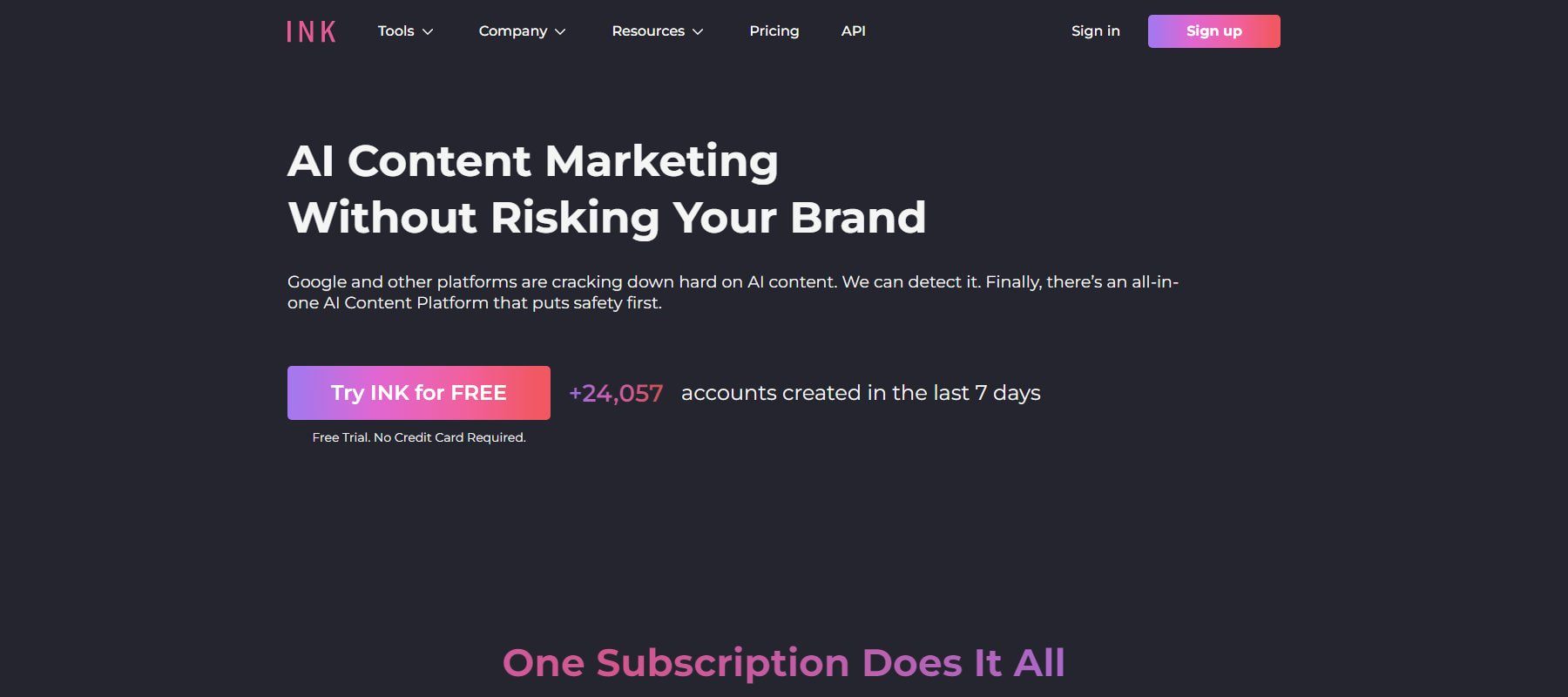
INK is an AI writing tool that can help you create high-quality content in minutes. Any paid plan allows the generation of unlimited words and images, making it an exciting platform to try out. It specializes in content for ranking well with SEO.
INK’s Content Sheild adds a lot of protection so that you can use AI responsibly without wreaking havoc by garnering penalties on your content. It scans unlimited content, finds plagiarism, and detects if common technologies will likely mark the content as written by AI. Performing these checks gives you even more peace of mind as you schedule or hit publish on your Ink-guided content.
What We Like About INK
- Content Shield : INK protects website reputations with Content Shield, ensuring content is plagiarism-free and passes “Written by AI” detection tests.
- AI-Generated Images : Creates AI-generated images based on text prompts, offering visuals that complement your content at affordable prices.
- Keyword Research : Conducts keyword research, pulling search volume, trend, and CPC data to support data-backed content creation.
- SEO Scorer: Gives an easy-to-understand content score for each article so you know it might fare in the SERPs once published.
- Long-Form Writer : The article rewriting features and shorter content writing seems to work better than when it creates long amounts of it.
- Integrations : While INK offers great content creation tools, it could do better at integration with more content management platforms .
Who is INK Best For?
INK is best for individuals and businesses needing unlimited content generation through 130+ marketing templates, a long-form editor, or fast paraphrasing. It’s also of great value with the addition of data-informed SEO tools and a plagiarism detector, and it generates AI images and written content.
Users enjoy INK and are glad that they’ve introduced a SaaS-based writer instead of relying on their legacy desktop application. Some do wish that its integration with WordPress was more reliable. In addition to that, more CMS integrations have commonly been asked for t o make the publication as easy as the writing.
No free plan, and INK starts at $49 per month for unlimited words, articles, and images.
12. WriterZen

WriterZen is a powerful AI-based SEO writing tool that stands out from many other platforms because of its data-based approach. Anyone creating SEO content for websites, landing pages, and authoritative blogs should consider adding WriterZen to their workflow.
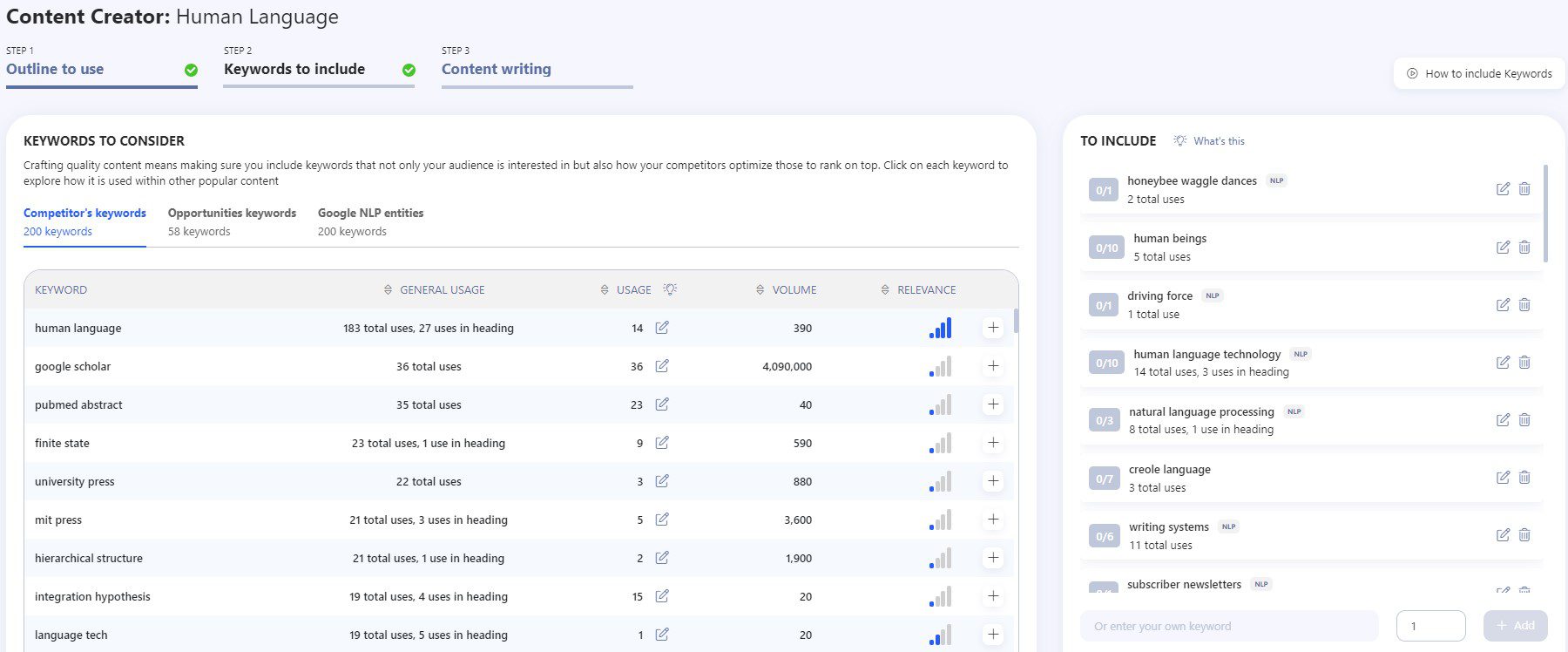
WriterZen’s AI-informed workflow helps you create content that enables you to score valuable organic traffic. Based on SERP data, WriterZen scores keywords on its “Keyword Golden Score” metric, which shows you the best ratio of keyword competition, traffic, CPC, and ranking difficulty. SEO-informed content gets a degree easier with WriterZen.
What We Like About WriterZen
- Keyword Discovery : WriterZen finds high-traffic/low-competition keywords, aiding in targeted content creation.
- Content Outlines : Generates content outlines using advanced NPL analysis of top search results for strategic content structuring.
- Keyword Clusters : Identifies relevant keyword clusters from Google Keyword data and Google Suggest Database for comprehensive content coverage.
- Plagiarism Detection : Features plagiarism and originality detection, ensuring the content’s integrity before publishing.
- User Interface : The platform’s user interface, while functional, can be slow at times, especially when working with keywords.
- Overcrowded Editor : The article editor could use some visual decluttering to make it an efficiency powerhouse.
Who is WriterZen Best For?
WriterZen is built for content teams and websites, pushing out a lot of SEO-optimized content. Bringing SEO tools into a writing platform speeds up content creation. It reduces the work of SEO analysis of content (though it doesn’t replace the need for skilled search specialists and SEO strategies).
Users say the learning curve for WriterZen is a little high just because of the way the UI is set up. In addition, it would be nice if they had more team and collaboration features to work with. Other than that, its performance as an AI writer pleases most users.
No free plan, but paid plans start at $23 per month .
Get WriterZen
13. ClosersCopy
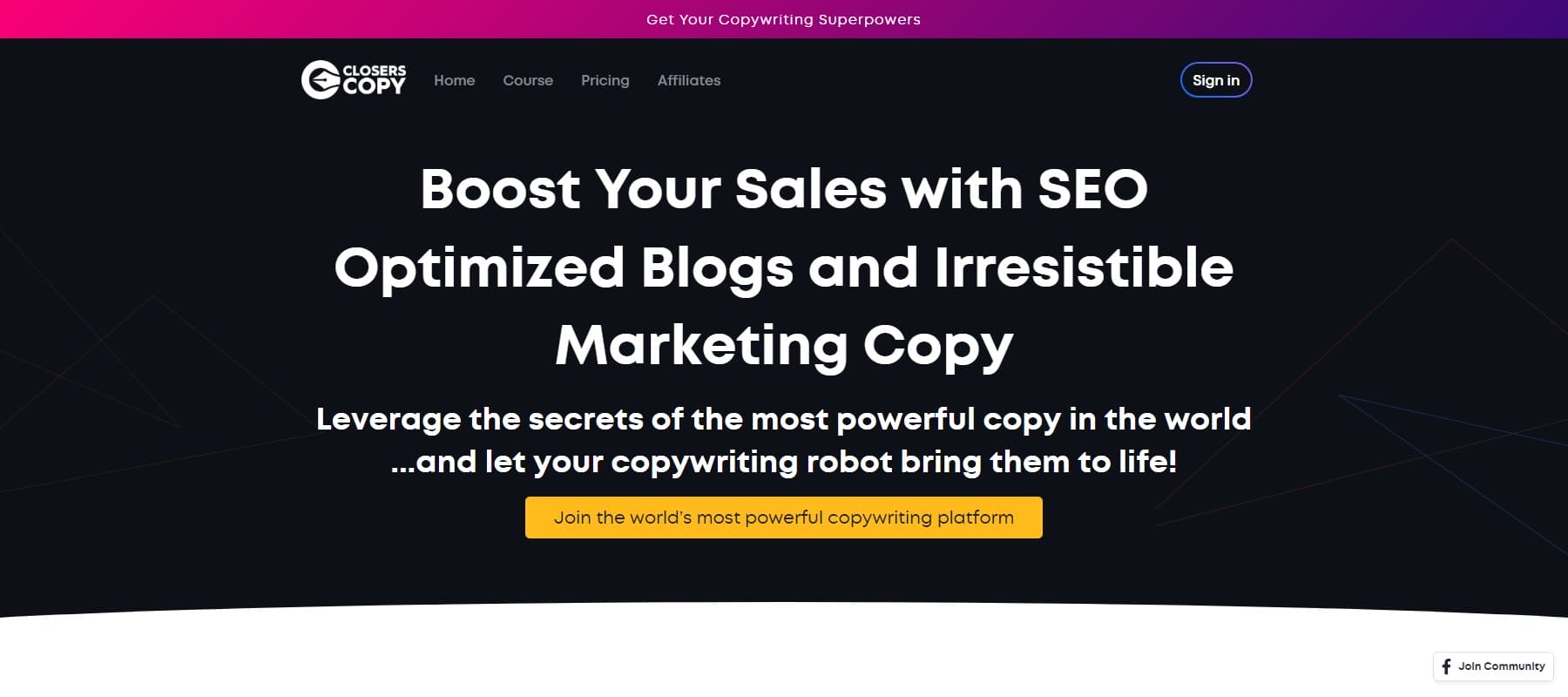
ClosersCopy is one of the more celebrated general-purpose and marketing AI content writers on the market. It specializes in sales and marketing copy but is also very good for blog content using its long-form editor.
ClosersCopy’s ability to create and share frameworks means that there are even more possibilities and use cases for using AI to write niche content. Frameworks specially train ClosersCopy AI to do a particular writing task (such as AIDA copywriting or creating a product description). Most AI writing software limits users to the frameworks (often called use cases or recipes) to what is officially released by the platform. ClosersCopy gives users control over sharing their best frameworks that others can benefit from. It has put together its AI tools into a unique pricing model that many will find compelling.
What We Like About ClosersCopy
- Frameworks : ClosersCopy boasts over 700 frameworks, including those submitted by the community, offering extensive versatility.
- SEO Insights : Provides NPL-guided SEO insights within the text editor, leveraging live search results for optimized content creation.
- Workflows : Enables the stringing together of various ClosersCopy frameworks into a single generative output, streamlining the content creation process (ex., Blog Title -> Blog Outline -> Blog Introduction -> Blog Conclusion, all in a single Workflow).
- Slow Development : Some users have noticed slower development of new features. This is likely due to the developer switching priorities to a new AI writing platform called Copyspace. This has disappointed long-time users of ClosersCopy and is the reason why this product has moved down our list since our last publishing.
Who is CloserCopy Best For?
ClosersCopy is best for salespeople and marketers who need high-quality sales copy. Blog writers and affiliate marketers also benefit significantly from this software. For those looking for a more affordable option, Rytr has fewer features but a much cheaper rate.
There aren’t many reviewers for ClosersCopy, but the few that have left their opinions wish that there was more ongoing development and new features. They say that what once was an excellent AI writing platform has slipped into mediocrity a bit.
High starting price of $49.99 per month .
Get ClosersCopy
14. HubSpot AI Blog Writer
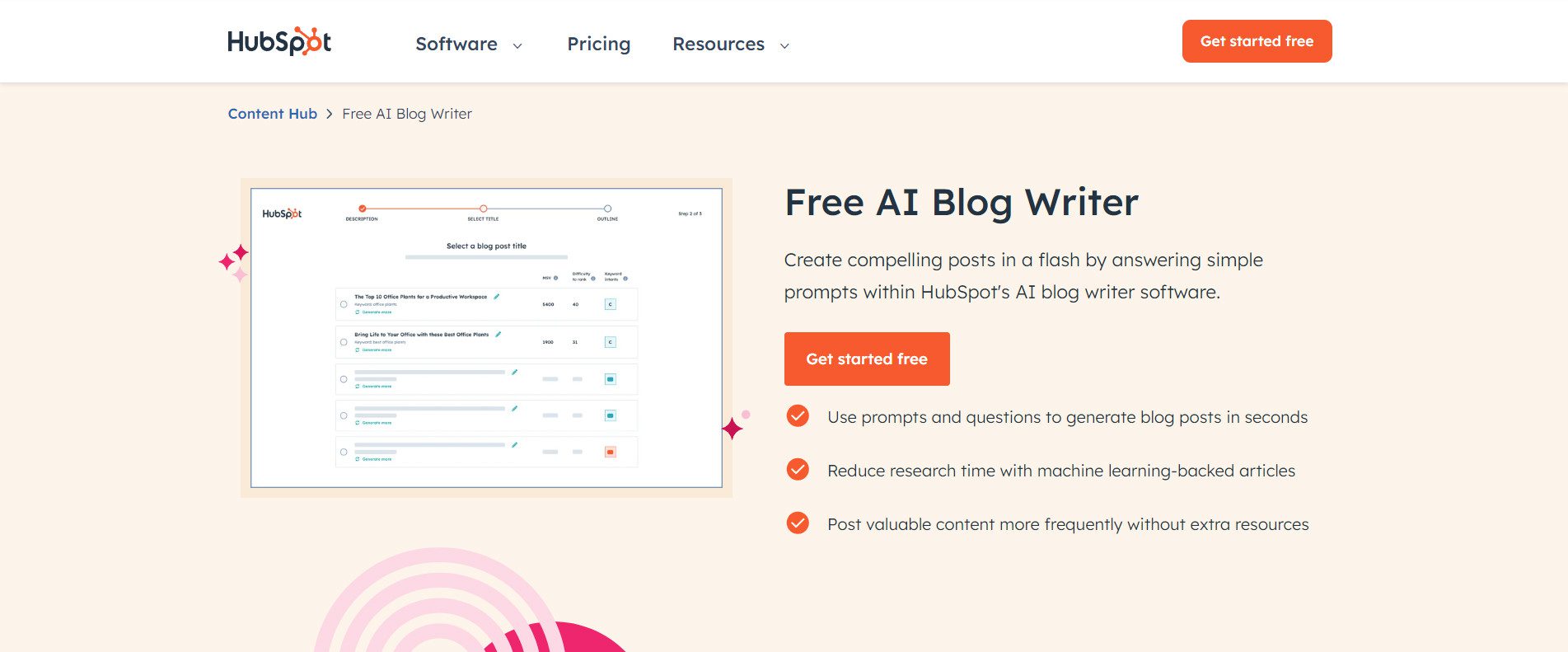
HubSpot’s Free AI Blog Writer is an innovative solution that revolutionizes how businesses approach blog content creation. By using the power of artificial intelligence, this tool simplifies and accelerates the process of generating engaging, high-quality blog posts. It’s an integral part of HubSpot’s suite, aimed at enabling marketers, bloggers, and business owners to maintain a consistent content schedule without compromising on quality or spending excessive time on content creation.
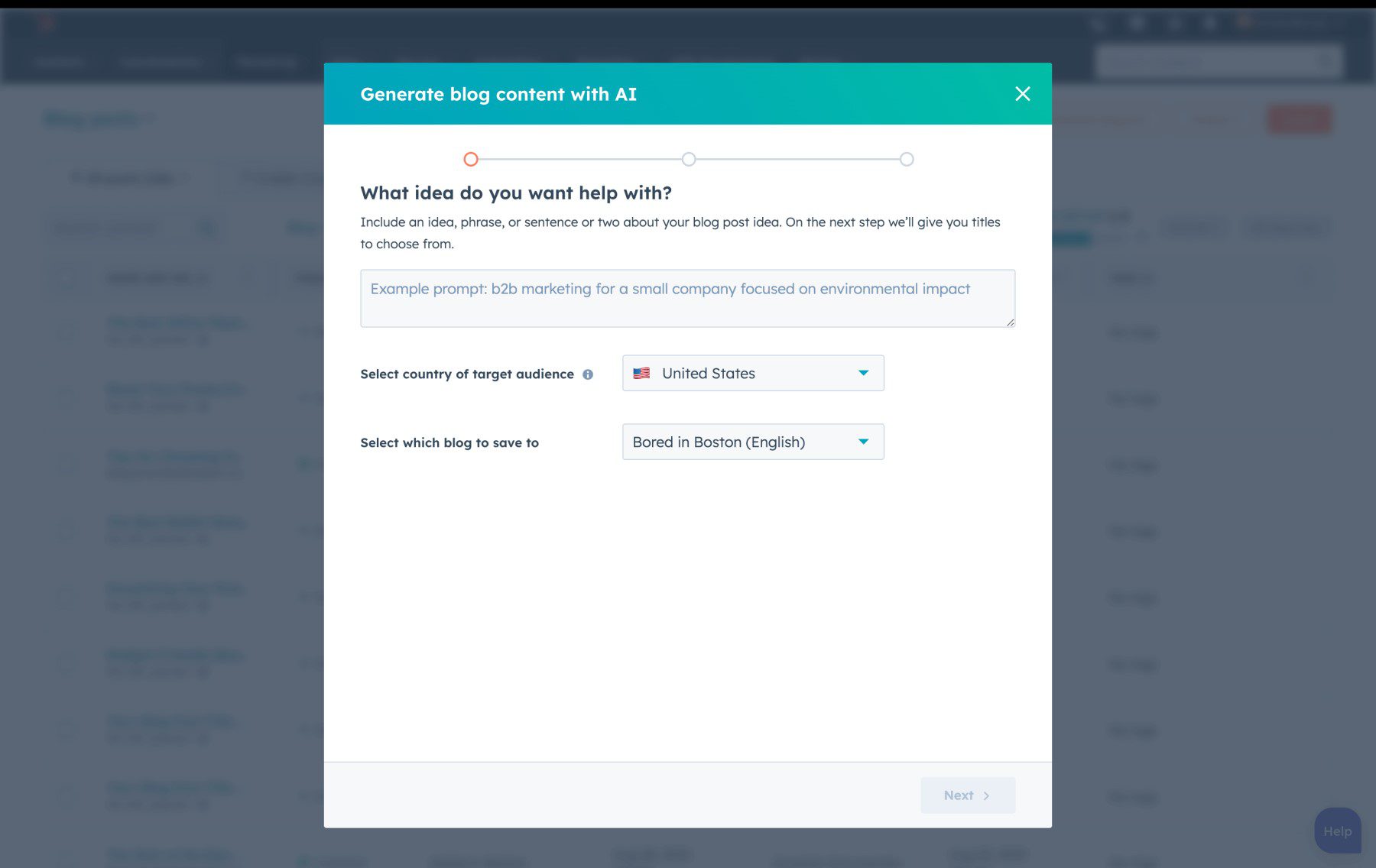
What We Like About HubSpot
- AI-Powered Content Creation: This tool leverages advanced AI algorithms to generate blog post drafts, saving time and effort in the content creation process.
- SEO Optimization: It assists in optimizing content for search engines, helping your blog posts to rank higher and reach a wider audience.
- Tone and Style Customization: HubSpot offers options to adjust the tone and style of the generated content to match your brand’s voice.
- Content Improvement Suggestions: Provide intelligent suggestions to improve existing blog content for readability and engagement.
- Limited Focus: Its AI writer is focused on blog posts, so it isn’t the most valuable tool, but it excels at what it does.
Who is HubSpot Best For?
HubSpot’s Free AI Blog Writer is best suited for content creators, digital marketers, and small to medium-sized business owners who are looking to streamline their content creation process. It’s an ideal tool for those who want to consistently produce high-quality blog content but are constrained by time or lack in-house writing resources. Whether you’re looking to boost your content marketing strategy, increase your website’s SEO presence, or simply maintain an active blog with less effort, this AI-powered writer can significantly ease the content creation burden.
There are no separate reviews for HubSpot’s AI writing tool, but there are plenty of reviews for the broader HubSpot platform.
The core functionality of HubSpot’s Free AI Blog Writer is available at no cost, making it an accessible option for businesses and individuals looking to enhance their content strategy without immediate financial investment.
Get HubSpot’s AI Writer
How AI Can Help Your Writing Workflows
AI writing platforms provide various solutions, which makes sense considering all the different types of writing and writing tasks people encounter daily. For instance:
- Faster Content Marketing: There are copywriting AI tools to help your marketing strategy by generating high-quality content faster for marketing, product descriptions, and sales copy .
- Easy Content Updates : There are AI tools for rewriting existing content so your content remains fresh and relevant.
- SEO Content Optimization: SEO AI tools can use Natural Language Processing (NPL) based on keywords to help create quality SEO content . All the best SEO tools already use AI to help with advanced SEO techniques .
- Enhanced Creativity: Story and creative AI writing software quickly generates innovative ideas and helps write illustrative content.
- Automate Editing Tasks: There are proofreading AI tools (like Grammarly ) that offer real-time spelling, grammar, and plagiarism checks to improve your content and ensure it is fit for publishing.
Suppose you’re someone in charge of writing or editing multiple types of content (on-brand copywriting, ad copy, long-form articles, stories, PR). In that case, you’ll probably benefit from having various AI writing assistants. With that in mind, let’s explore some of the best.
Comparing the Best AI Writers
With so much AI writing software to choose from and so many details listed above, we thought we’d give you a 30,000-foot view of the products we covered in this article.
Feature Comparison of Best AI Writers
Feature coverage is an important aspect of any tool. But, the highest number of features don’t always “win”—sometimes, the right few features are all it takes. Anyway, here is a feature comparison of our top three choices of AI writers. See if any of these tools has the right mix for you.
| 🥇 | 🥈 | 🥉 | |
|---|---|---|---|
| Starting Price | $9/mo | $69/mo | $19/mo |
| Free Plan Available | ✔️ | ❌ | ❌ |
| Multilingual Support | ✔️ | ✔️ | ✔️ |
| SEO Integrations | ✔️ | ✔️ | ❌ |
| Templates and Frameworks | ✔️ | ✔️ | ✔️ |
| Long-Form Content Generation | ✔️ | ✔️ | ✔️ |
| Chrome Extension | ✔️ | ✔️ | ❌ |
| Real-Time Content Collaboration | ❌ | ✔️ | ❌ |
| AI Art Generation | ✔️ | ✔️ | ❌ |
| Built-in Plagiarism Checker | ✔️ | ✔️ (Copyscape) | ❌ |
| Customizable Brand Voice | ✔️ | ✔️ | ❌ |
| Community Rating | ⭐⭐⭐⭐ | ⭐⭐⭐⭐⭐ | ⭐⭐⭐⭐ |
Price Comparison of AI Writing Tools
AI writing tools have pricing that is all over the board. From low-cost solutions to enterprise-level products, there is everything on this list. See which ones are closest to your price range.
| Best AI Writers | Starting Price | Free Plan | Reviews | Visit | |
|---|---|---|---|---|---|
| 🥇 | $9/mo | ✔️ | ⭐⭐⭐⭐⭐ | ||
| 🥈 | $69/mo | ❌ | ⭐⭐⭐⭐⭐ | ||
| 🥉 | $19/mo | ❌ | ⭐⭐⭐⭐ | ||
| $49/mo | ✔️ | ⭐⭐⭐⭐ | |||
| $19/mo | ✔️ | ⭐⭐⭐⭐ | |||
| $49/mo | ❌ | ⭐⭐⭐⭐ | |||
| $27/mo | ❌ | ⭐⭐⭐⭐⭐ | |||
| $14.99/mo | ❌ | ⭐⭐⭐⭐⭐ | |||
| $89/mo | ❌ | ⭐⭐⭐⭐⭐ | |||
| $39/mo | ❌ | ⭐⭐⭐⭐⭐ | |||
| $49/mo | ❌ | ⭐⭐⭐⭐⭐ | |||
| $23/mo | ❌ | ⭐⭐⭐⭐⭐ | |||
| $49.99/mo | ❌ | ⭐⭐⭐⭐ | |||
| Free | ✔️ | N/A |
What is the Best AI Writing Software?
Rytr is an excellent starting point for those looking for a budget-friendly, all-purpose AI writer. Jasper (with Boss Mode) and Article Forge are worth considering if you need to produce long-format writing. For creative writing, Sudowrite is the standout tool. We’d also be remiss if we didn’t say that Surfer SEO is one of the best companions for an AI writer, and if your writer has an integration, definitely consider getting it.
Are you looking for more amazing AI tools? Take a look at the top AI tools that are changing the way we work and live.
Frequently Asked Questions (FAQs)
Before we wrap up, let’s answer some of your most commonly asked questions regarding AI writing software. Did we miss one? Leave a comment below, and we’ll reply!
What is the best AI writing software?
What is the best free ai writing tool, what is the best long-form ai writing assistant, what is the best creative writing ai software, how can i detect ai-generated content, how can i avoid ai detection in writing, how much do ai writing tools cost, what are the risks associated with ai writing, can i use ai to write blog posts, what is the best ai writing software for landing pages, can i use ai writing software to make money, what is the best ai writing software for seo.
Featured Image via BestForBest / shutterstock.com

Explore Our Top Picks
Here are our favorites! 👇
Get Rytr Today!
With so many great options available, it can be hard to pick one. find out why rytr is our favorite. 👇.

By Christopher Morris
Christopher Morris writes about the intersection of Marketing and Websites. He loves to help people gain the confidence to move their passions online. He can be found strolling around LinkedIn as well as the Rocky Mountains in Colorado when he is recharging.
Explore Divi, The Most Popular WordPress Theme In The World And The Ultimate Page Builder

Check Out These Related Posts

Best AI Tools For Social Media Content Creation in 2024
Updated on June 5, 2024 in Marketing
Are you struggling to develop fresh ideas for social media posts regularly? AI tools can help you brainstorm new ideas and overcome creative block. These tools are changing how people make content for social media. You can create posts that catch attention, determine what’s popular, and...
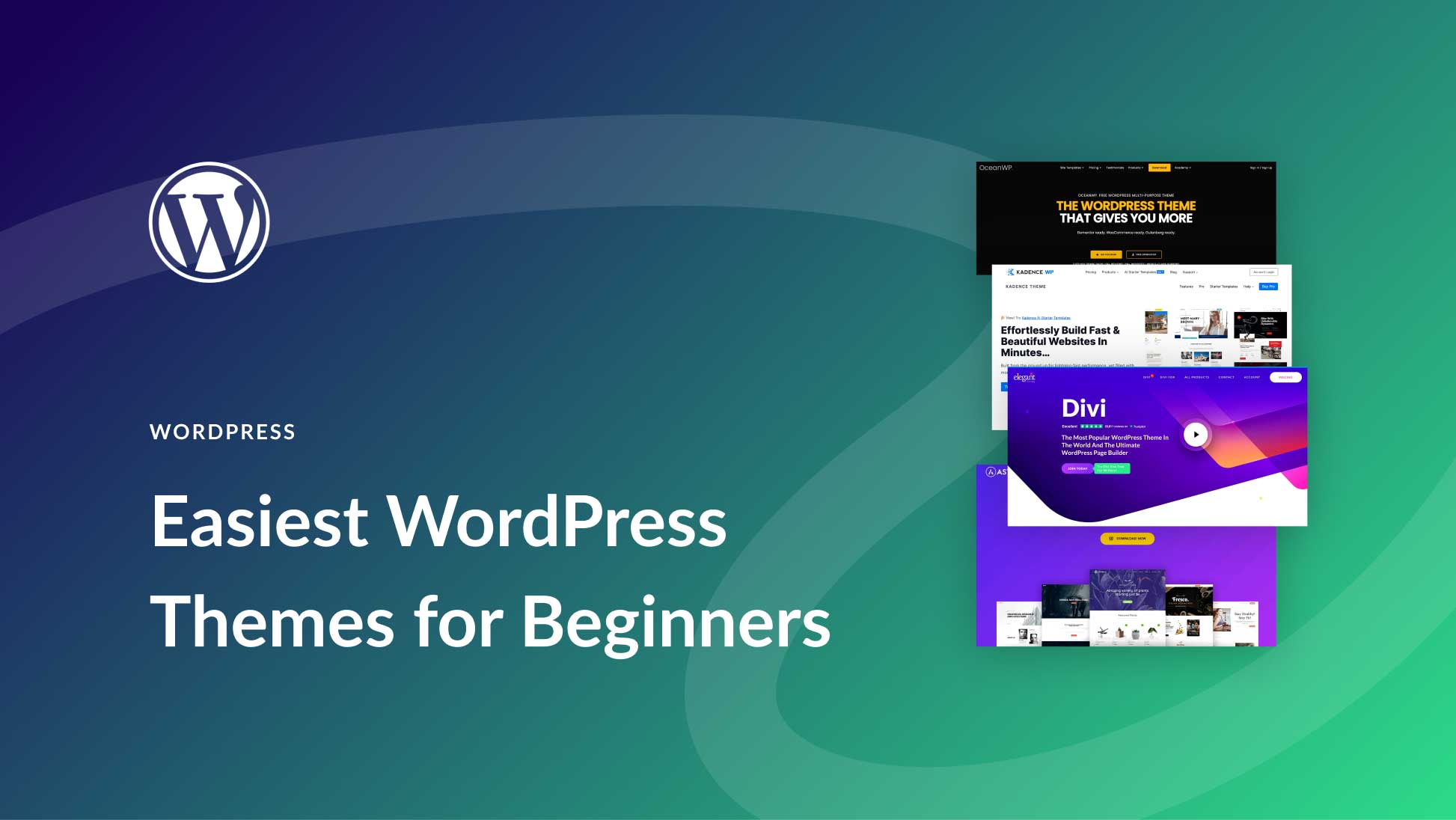
Easiest WordPress Themes for Beginners in 2024 (Compared)
Updated on May 30, 2024 in WordPress
Choosing a WordPress theme can be overwhelming, especially for a beginner. No need to worry, though. We’ve combed through hundreds of popular WordPress themes to showcase free and premium options suited to those new to WordPress. Whether you need a free or a premium option, the products on...

8 Best AI Scheduling Assistants in 2024 (Compared)
Posted on May 5, 2024 in Business
Daily planning can be challenging, especially when managing appointments, scheduling meetings, and preventing calendar conflicts across multiple time zones and commitments. AI scheduling assistants can help by streamlining the process, considering your availability, time zones, and preferences, and...
Interesting article. Thank you. Any particular reason why you didn’t include Agility Writer?
Sandra, there are just too many to cover them all. Plus, others on this list are similar in scope to the tool you mentioned. Glad it was helpful.
Have you had any experience with Bard AI yet? I was expecting to see it on your list but maybe that’s because it hasn’t rolled out to everyone yet.
Susan, I have used Bard, but we will include that on a different post coming out in the coming weeks. Bard is solid, but it’s still early days. I like using it over ChatGPT when I need a concrete answer. I don’t like using it for any task that requires too much creativity. We’ll see how it only improves over time.
A really useful article to read, I’ve been using the Bertha AI toolkit now for some time, before the AI world exploded. Also well worth a look!
Hey Steve, there really are so many great (and not-so-great) options out there these days. Bertha AI looks like a great AI Chatbot for WordPress. Here in a few days, we’ll have a post dedicated to chatbots. Thanks for your thoughts!
Lol.. great article… and of course I desperately need to know how you did that “expand list” functionality in the introduction!
What about Katteb? It is a Long-Form AI writer that aims to provide fact check information and does some more job to enhance the quality of work.
Thanks Outboxed! In the spirit of AI tech, you could consult ChatGPT and see if it can help you create something like that for your sites.
Leave A Reply Cancel reply
- Recent Posts
- Download a Free Spa Theme Builder Pack for Divi
- WordPress Pricing: How Much Does WordPress Cost? (2024)
- Wix vs Divi AI: Which AI Website Builder to Choose in 2024?
- How to Get Started with WordPress (2024 Guide)
- Get a Free Psychology Layout Pack For Divi
- Divi Resources
- Theme Releases
- Tips & Tricks
974,872 Customers Are Already Building Amazing Websites With Divi. Join The Most Empowered WordPress Community On The Web
We offer a 30 Day Money Back Guarantee, so joining is Risk-Free!
Divi Features
- All Features Explore Divi
- Divi Modules
- Divi Layouts
- No-Code Builder
- Ecommerce Websites
- Theme Builder
- Marketing Platform
- Speed & Performance
- Premium Support
- Divi Marketplace
- Divi AI Brand New!
- Divi Hosting
- Extra Theme
- Bloom Plugin
- Monarch Plugin
- Plans & Pricing Get Divi Today
- Documentation
- Help Articles & FAQ
- 24/7 Support
- Developer Docs
- System Status
- Product Updates
- Best Plugins
- Best Hosting
- Divi Meetups
- Divi Facebook Group
- Divi Examples
- Divi Integrations
- Divi Reviews
- Community Forum
- Affiliate Program
- Terms of Service
- Privacy Policy
Copyright © 2024 Elegant Themes ®
- Font Generator
- Word Counter
- Add Text to Photo
- Go to the text page
- Generate text
- Open AI writer
- Go to the AI writer page
- Profile Picture Maker
- Sharpen Image
- Compress Image
- Rotate Image
- Resize Image
- HEIC to JPG
- Color Palette from Image
- Image Mirror
- Go to the Image page
- Calendar Maker
- Color Palette
- Go to the design page
- Letter cases
- Symbol Text
- Smileys & People
- Animals & Nature
- Food & Drink
- Travel & Places
- Mathematical
- Roman Numerals
- Translations
- Grammar checker
Paraphraser
- Blog titles
- Meta description
- Social media bio
- Story ideas
- Video titles
- Business names
- Email writer
- Side hustle ideas
- Landing page titles
- Product description
- WebM to MP4
- Go to the video page
- Color Picker
- Color Wheel
- Color Codes
- Go to the color page
- PDF to Word
- Excel to PDF
- Word to PDF
- Go to the convert page
- Compress PDF
- Go to the PDF page
- Photo editor
- AI image enhancer
- AI image generator
- Background changer
- Collage maker
- Background remover
- Go to Picsart all-in-one editor
100% free AI Writer - Quickly generate text
Picsart's AI Writer takes the pain out of writing text for social media, websites, documents, ads, and other online activities. We want everyone to create text with AI, so we made it free and easy to use! 🙌
Generate an example text with AI:
All ai writer tools.
Find your specific AI text tool, like generating a cool Instagram caption, a new Social Media Bio, or a fun story.
Article Writer
Use this tool to write the articles for you. Customize the input as much as you want to create high-quality SEO content.
We expand text. Do you have a short text and want to add more details? Expand now!
Title Generator
Without a catchy title, you won't catch the attention. Let this tool generate the titles for you. They are often better.
Idea Generator
This idea generator creates the ideas for you - No matter the topic. Give it a try!
Keyword Generator
Keywords can help you get started with landing pages, blog posts, and whole websites.
Grammar Checker
Quickly check your text's grammar to ensure you are doing everything correctly.
(Video) Script Generator
Level up your (video) creations with generated scripts that guide you through the creation process.
Simply, we shorten text. Do you have a long text and want to capture the essence? Give it a try!
Story Generator
A story can sell, explain, or visualize a thought or concept. Let us help you tell a good one!
Generate personalized digital ads with enterprise-grade marketing copy for any kind of business.
Social Media Bio
Create a unique and customized social media bio for all major social media platforms in minutes for personal or professional needs.
Easily and quickly rephrase copy into unique content for academic, SEO, marketing, and other uses.
Slogan Generator
Create a memorable and catchy slogan for your brand or business in seconds that will help users remember you easily.
Business Name Ideas
Find great names for your new buiness ventures with this simple tool; describe your business and have results in moments.
Hashtag Generator
Find the best hashtags for your new post which can generate additional clicks and views.
Product Descriptions
Create the perfect description for your products to attract and intrigue your customers to click and buy.
Image Caption Generator
Every good Instagram post needs a catchy caption to increase engagement on your post and profile.
Outline Generator
Landing page outlines improve the page structure and readability, increasing conversions.
Prompt Generator
Prompt writing is hard, so let us help you generate the perfect prompt for your next idea or project.
Paragraph Generator
Writing paragraphs takes time. This generator lets you quickly create paragraphs for landing pages, articles, social posts, etc.
Meta Description Generator
Nowadays, AI generates better meta data copy than most people, so what are you waiting for?
A true lifesaver. Save time and quickly summarize articles, social posts, essays, documents, or websites.
Easily translate your text to the most popular languages online. Swap, rephrase, and copy your translated text.
Essay Writer
Essays are tough, so we would like to help. Not to replace, but to make better quality content.
Email Writer
Lots of people spend hours per day sending emails. It's time to become more productive and send more emails faster.
- High-quality results & experiences
- 20+ AI accurate text tools 🎯
- Quick time to resolution 🚀
- People love our AI Writer (4.8/5) ❤️
What is an AI Writer and what does it do?
Benefits of using ai tools for writing, write ai text for these use cases.
The process of creating SEO content is significantly reduced by AI. You can now easily create SEO briefs that result into draft outlines, and written content for landing pages and blog articles.
How to get the best results from AI tools
Become a prompt master.
AI is all about writing a prompt that gets you what you want. It is best to use more than fewer words. Use descriptive words and give restrictions or limitations to fine-tune your result.
Make Optional Required
AI Tools give you optional fields to generate a result quicker, but if you want better results, we suggest treating the optional fields as important as the required fields.
Rephrase it!
Nobody is perfect. If your results are in the right direction, but it needs fine-tuning - rephrase. Most AI tools allow you to rephrase after generating a result.
Human touch.
AI is useful in many different scenarios but is mainly there to help you. Feel free to adjust the results to add that human touch and beat your competition.
What is an AI writer?
How does an ai writer work, how are ai writers impacting the writing industry, how can businesses and writers benefit from ai writers, can an ai text generator produce unique content, what is the best ai text generator.
- Text Tools 6 tools
- Image Tools 14 tools
- Video Tools 6 tools
- Design Tools 6 tools
- Color Tools 5 tools
- Convert Tools 16 tools
- PDF Tools 10 tools

COMMENTS
Creative writing is an art form that transcends traditional literature boundaries. It includes professional, journalistic, academic, and technical writing. This type of writing emphasizes narrative craft, character development, and literary tropes. It also explores poetry and poetics traditions.
Most professional writing falls into two categories: creative writing—which includes novels, short stories, poems, and screenplays—and content writing, which includes manuals, guidebooks, and marketing products. Here are some key differences between the two types of writing.
This free and open access textbook introduces new writers to some basic elements of the craft of creative writing in the genres of fiction, poetry, and creative nonfiction. The authors—Rachel Morgan, Jeremy Schraffenberger, and Grant Tracey—are editors of the North American Review, the oldest and one of the most well-regarded literary magazines in the United States.
Types of Creative Writing. Examples of creative writing can be found pretty much everywhere. Some forms that you're probably familiar with and already enjoy include: • Fiction (of every genre, from sci-fi to historical dramas to romances) • Film and television scripts. • Songs. • Poetry.
Get an Editor's Eye on Your Writing. Optimize Your Content for Search. Close With a Compelling Call to Action. 1. Always Keep Your Audience in Mind. If you want your content writing to resonate with your target audience, you need to put the needs, interests and desires of your audience first.
This free and open access textbook introduces new writers to some basic elements of the craft of creative writing. The authors—Rachel Morgan, Jeremy Schraffenberger, and Grant Tracey—are editors of the North American Review , the oldest and one of the most well-regarded literary magazines in the United States. <br><br>We've selected nearly all of our readings and examples from writing ...
Creative writing is an art form that goes beyond traditional writing, allowing individuals to express their thoughts, emotions, and ideas through the power of words. It transcends conventional writing, encouraging individuals to explore language, structure, and narrative. Creative writing is writing meant to evoke emotion in a reader by ...
Outlines help your content come out better for two main reasons: First, outlines force you to put all your thoughts down in an organized way (rather than writing everything off the top of your head). Which really speeds up the writing process. Second, outlines usually lead to a much better structure for your content.
5 Key Characteristics of Creative Writing. Creative writing is marked by several defining characteristics, each working to create a distinct form of expression: 1. Imagination and Creativity:Creative writing is all about harnessing your creativity and imagination to create an engaging and compelling piece of work.
5 Types of Creative Content Writing. Source. 1. Advertising copywriting. Advertising copywriting creates persuasive, attention-grabbing headlines and body copy to promote a product, service, or brand. The goal is to get people to take action, such as clicking on a link, buying a product, or signing up for a service. 2.
The ghostwriter is hired primarily to produce high-quality writing copy that reads professionally and creatively. 5. Video content. Video content is any content format that features or includes a ...
Rules of Effective Writing #9: Spice it Up with Figurative Language. Using figurative language effectively can transform plain text into compelling content, adding depth and vividness to your expressions. This rule is particularly valuable in effective blog writing and creative writing, where engaging and memorable content is crucial.
Creative writing is all about the imaginative use of language and overcoming writer's block. Different methods are possible to do so, but creative writing's core concept remains the light-hearted manipulation of language. Ideas for stories can also emerge through the use of creative writing techniques, and these can later be refined for ...
A content writer creates written material for websites, blogs, and other digital media. They engage and inform audiences through well-researched and compelling content. The fundamental role of a content writer starts with understanding the target audience of the company they're writing for.
Mission. The Purdue On-Campus Writing Lab and Purdue Online Writing Lab assist clients in their development as writers—no matter what their skill level—with on-campus consultations, online participation, and community engagement. The Purdue Writing Lab serves the Purdue, West Lafayette, campus and coordinates with local literacy initiatives.
There are four main types of creative writing structures, each of which can be used for more business-focused content. Four structures of creative writing that can be used in business contexts. 1. Linear writing. The most common type, linear writing is described a series of events in chronological order.
Different styles of writing. Another difference revealed by the debate on creative writing vs content writing is that both have different writing styles. Creative writing tends to be more poetic and lyrical, while content writing is more straightforward and persuasive. 3. Tone of voice.
In summary, here are 10 of our most popular creative writing courses. Creative Writing: Wesleyan University. Write Your First Novel: Michigan State University. Academic English: Writing: University of California, Irvine. Sharpened Visions: A Poetry Workshop: California Institute of the Arts.
Postsecondary Creative Writing Teacher. Median Annual Salary: $74,280. Minimum Required Education: Ph.D. or another doctoral degree; master's degree may be accepted at some schools and community ...
Brett Healey, Curtin University. What children say about free writing is similar to how professional authors describe the creative process. Teachers should give kids freedom to explore, providing ...
Action: In creative writing, action should occur for a reason—characters' actions should be based on their motivations, their points of view, and their previous choices. A protagonist's actions should always propel them toward their main goal in a way that is related to the plot events at hand. A character's goals affect their character ...
1. Adaptability. The content writing world is constantly evolving, with new trends, platforms, and audience emerging preferences. Content writers should have the ability to adjust their style, voice, and approach to different formats, audiences, and platforms. 2.
The MFA experience culminates with each student writing and defending a creative thesis. For prose writers, theses are 100 pages of creative work; for poets, 48 pages. Though theses often take the form of an excerpt from a book-in-progress, students have flexibility when it comes to determining the shape, form, and content of their creative ...
Mac McClelland's winning entry, Brianna, is staggering. The piece eloquently draws a line from past to present, highlighting just how far-reaching and damaging legislation in this vein can be. Opening the door for this creative expression has resulted in something that, in my opinion, is as impactful as an academic paper.
New York, NY, June 3, 2024 — Six exceptional public high school seniors from across the country have been chosen as winners of the 2024 Penguin Random House Creative Writing Awards in partnership with We Need Diverse Books, a national grassroots organization that advocates for diversity in literature. This year marks the first time the Freedom of Expression Award has been presented.
In summary, here are 10 of our most popular writing courses. Good with Words: Writing and Editing: University of Michigan. Creative Writing: Wesleyan University. Academic English: Writing: University of California, Irvine. Write Your First Novel: Michigan State University. Writing in the Sciences: Stanford University.
The best creative AI writing tool is Sudowrite. It uses GPT 3 and proprietary AI models to generate content and offers features like "first draft" and "describe," which add descriptive creative writing to a section of text. Sudowrite is designed to help writers overcome writer's block and generate new ideas for their writing.
An AI Writer consists of single or multiple tools powered by artificial intelligence (AI) that generate or edit text for you (Writer). The text is often used for content on social media, websites, blogs, landing pages, advertisements, and much more. Quicktools by Picsart offers a variety of AI writer tools, including text tools that generate ...
Try Creative Cloud today. After your free trial, your Adobe Creative Cloud membership is only. US$19.99/mo US$59.99/mo . See terms. Buy now. Free trial. Purchase by phone: 800-585-0774. Students and teachers are eligible for over 60% discount on Adobe Creative Cloud. Get access to Photoshop, Illustrator, InDesign, Premiere Pro and more.
CNN —. New York could soon become the first state to pass a law restricting social media platforms from using algorithms to promote content to minors. New York Democratic Gov. Kathy Hochul and ...